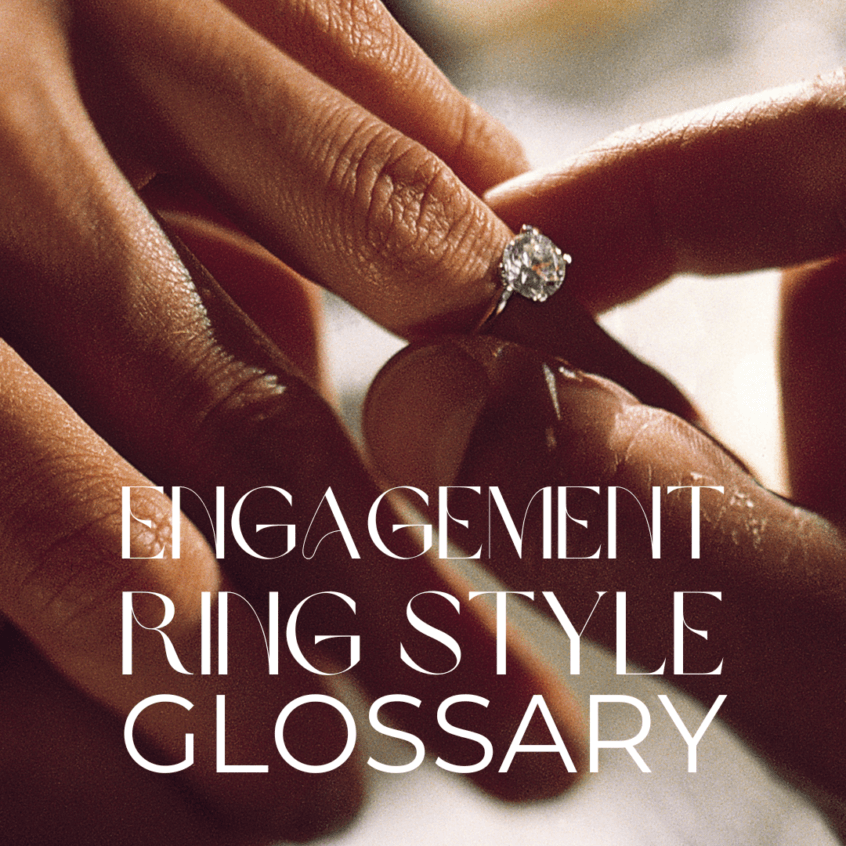Start looking for inspiration for your engagement ring and it’s a minefield of jewellery jargon. Halo or cluster? Toi et Moi or Trilogy? It’s all very confusing!
Begin your search here to identify the core design styles and features you like, and you’ll be armed with the terminology you need to search for, or commission a designer to create the dream engagement ring. Use this article as a glossary to discover what all the individual terms mean, and refer to this page on the anatomy of a ring to help further. You’re welcome!
Style of ring
First of all, look at the core design style of the ring, which focuses on the central setting of the ring. Whether its one feature stone, or five, find examples to inspire your own ring below, and find out the terminology behind the style you like to enable you to search for the dream ring.
Solitaire
A solitaire ring is a classic single stone ring. They can be simple like the ring below, keeping the single stone the star of the show, or they can also have lots of detail packed into the design depending on your style. The shoulders can be plain, textured, or set with stones, but the key feature is a single stone in a raised setting in the middle of the ring.
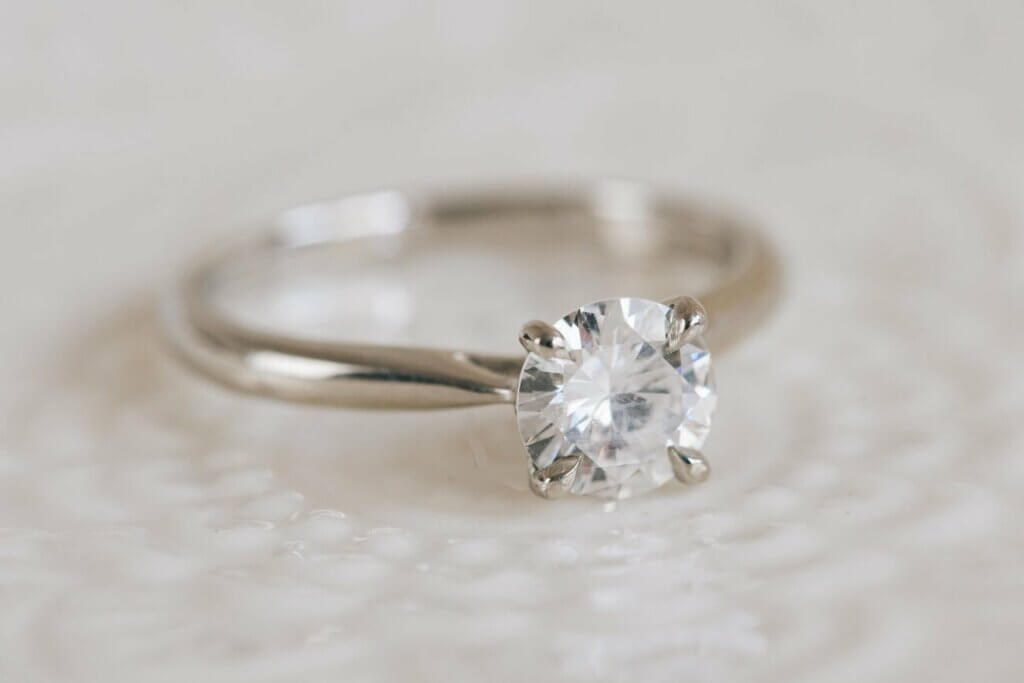
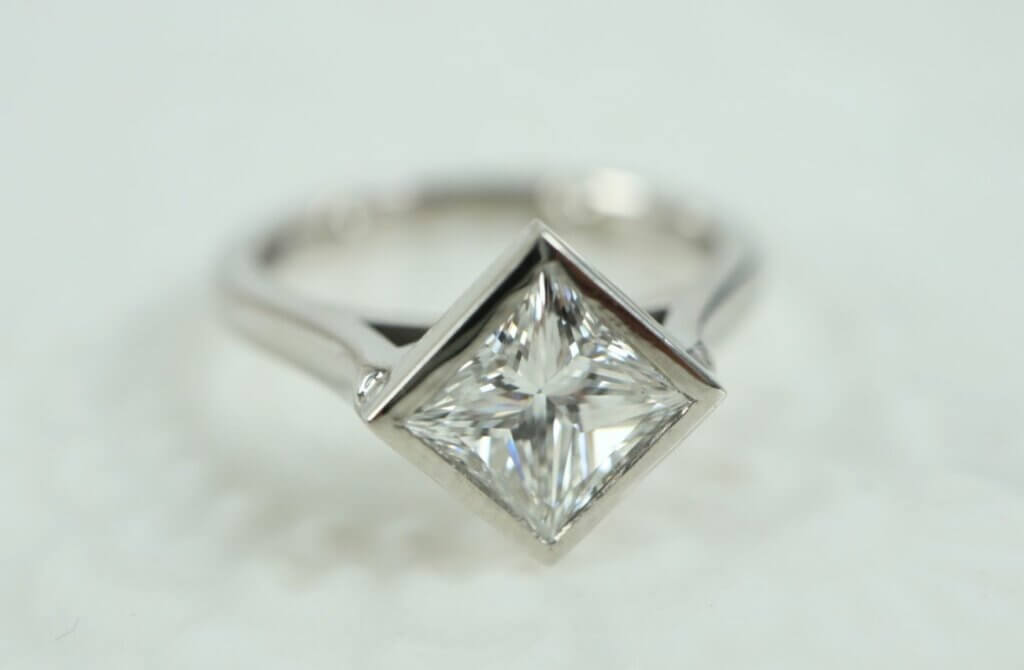
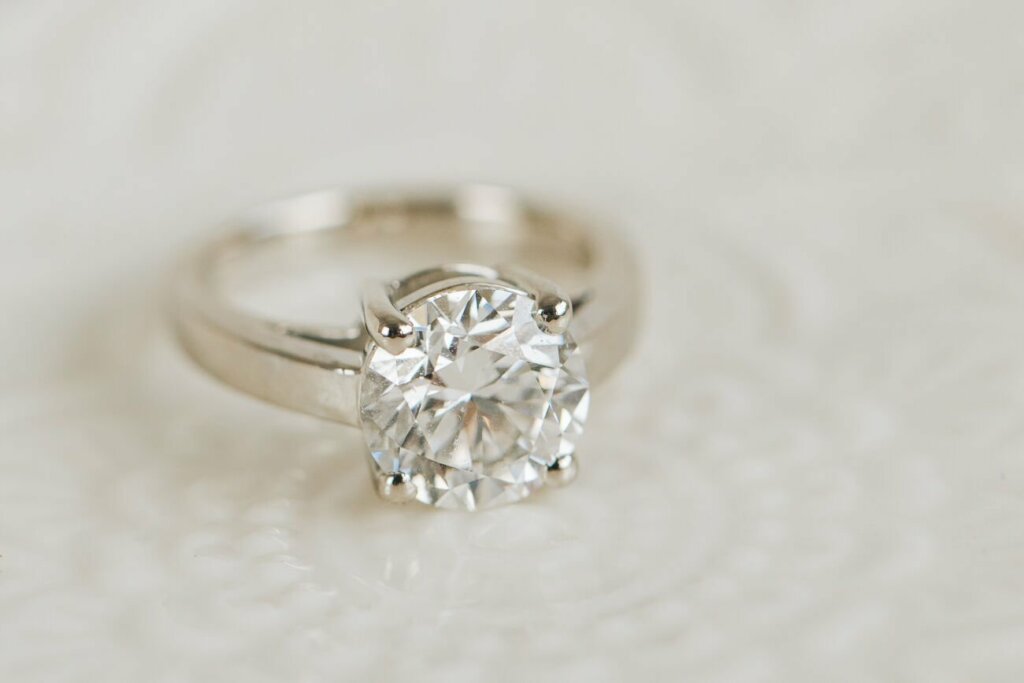
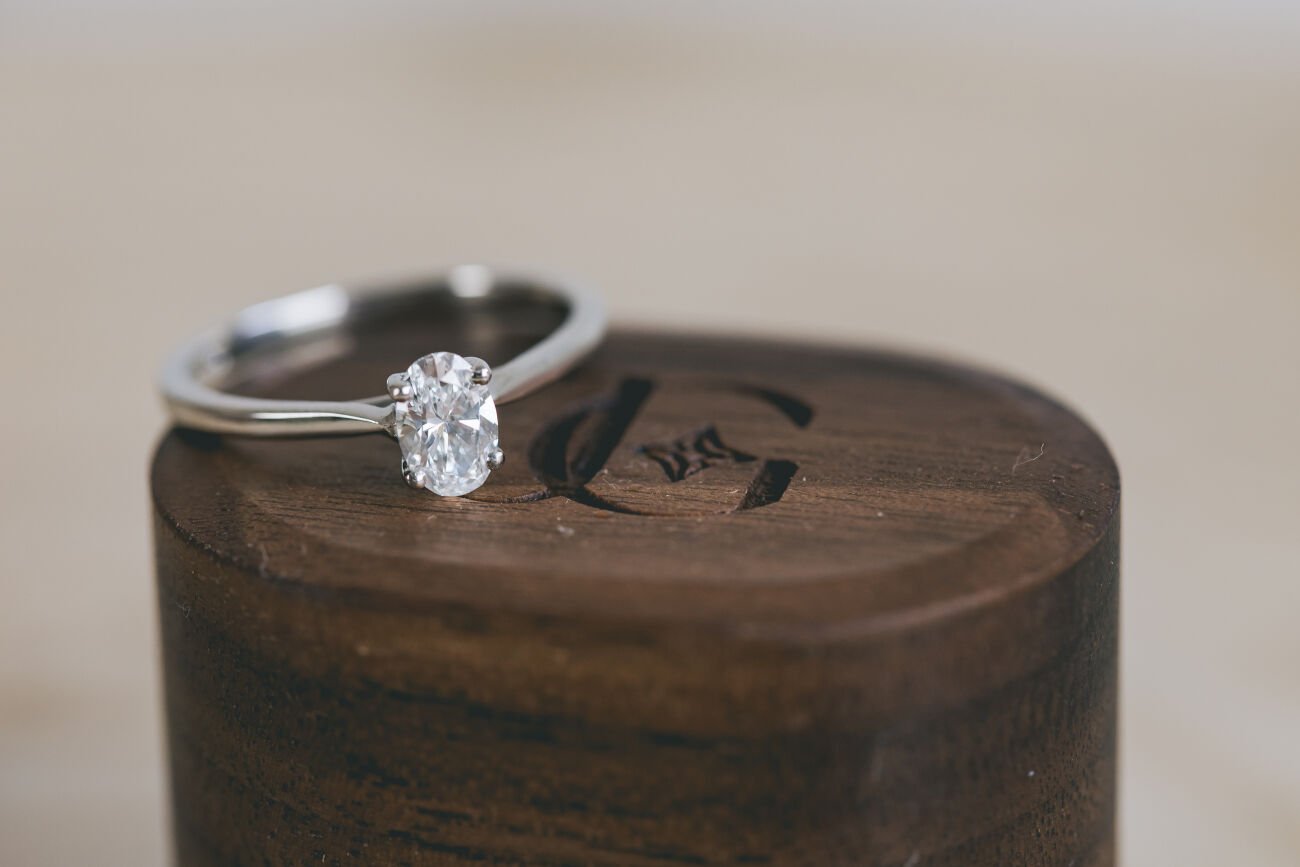
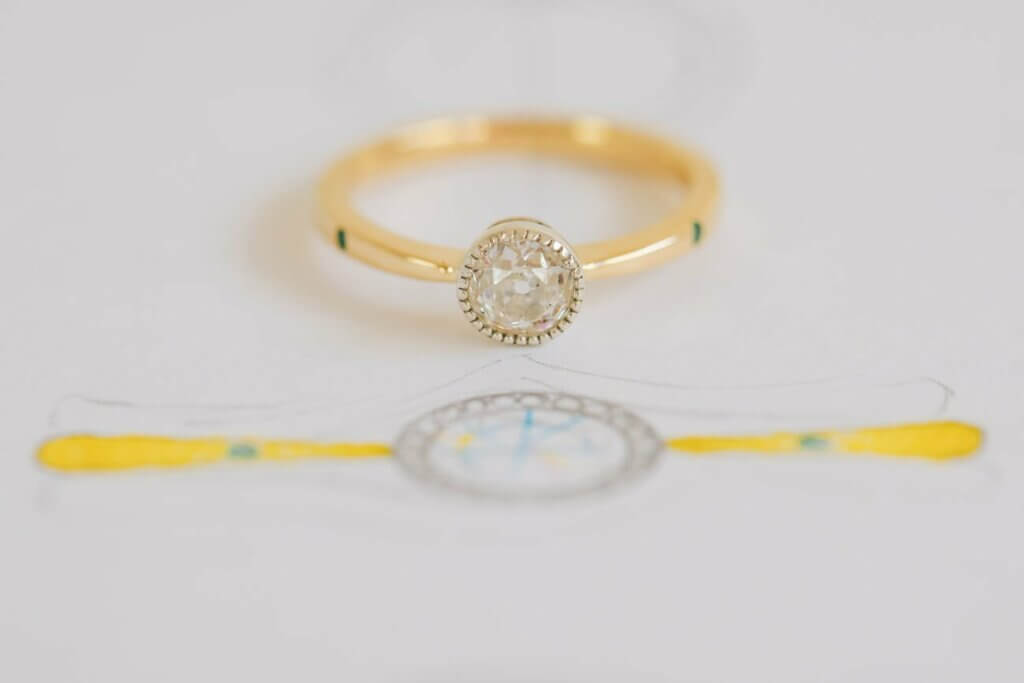
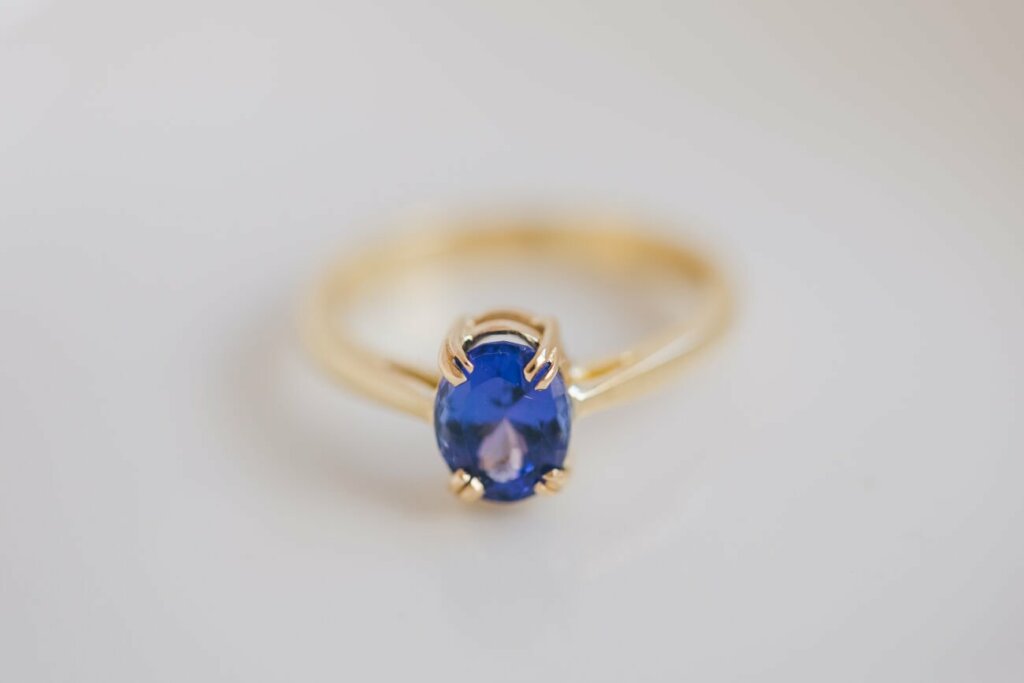
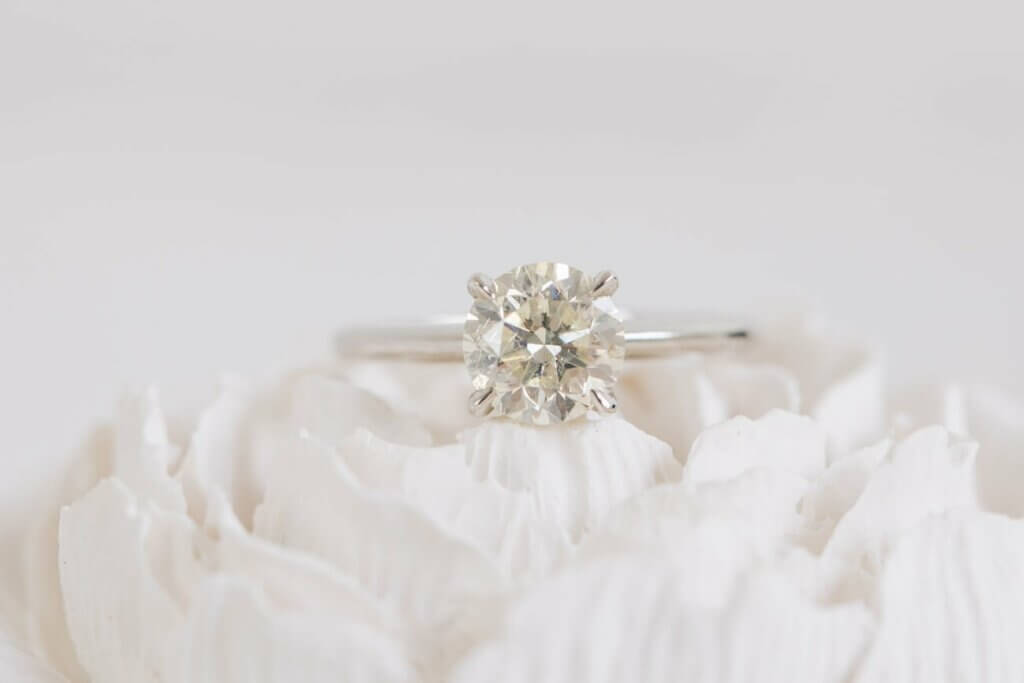
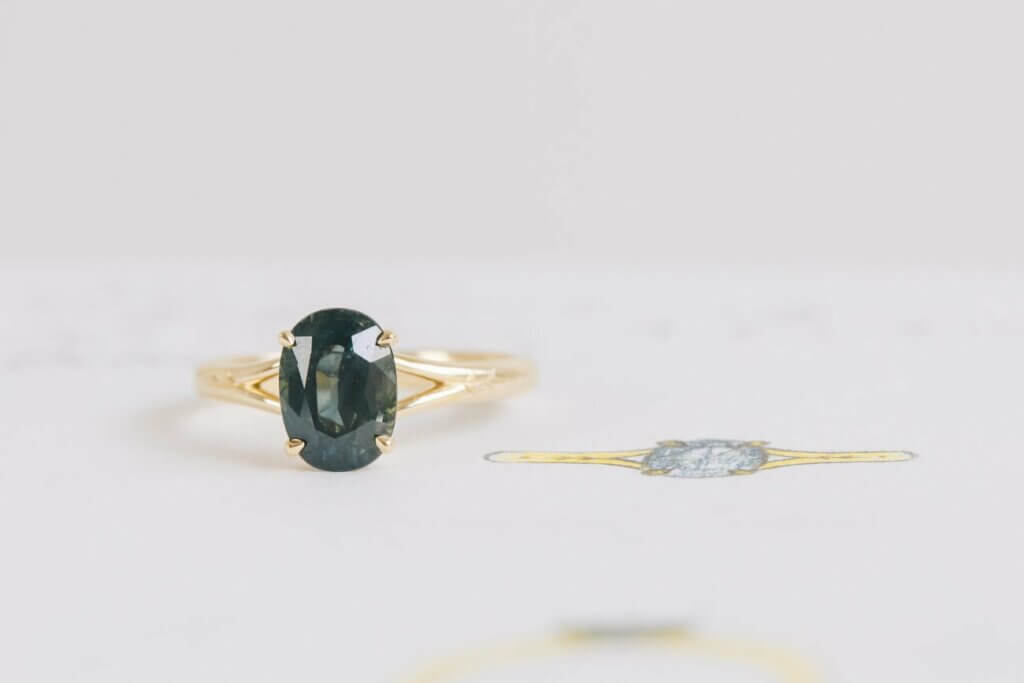
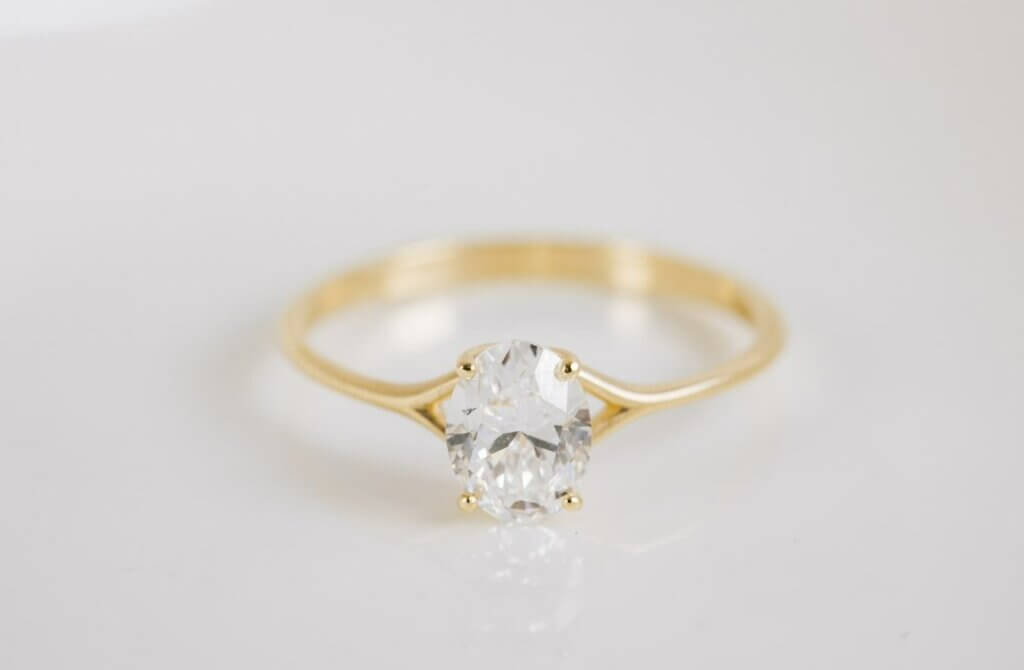
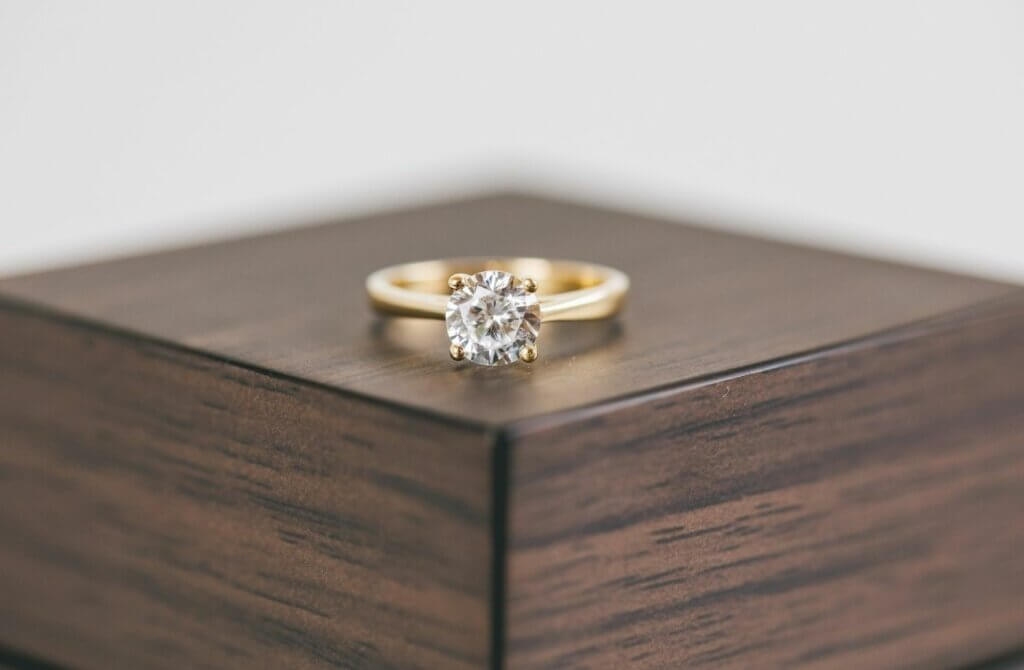
Toi Et Moi
Often designed with two differently shaped and coloured gemstones, Toi et Moi rings represent the two people within a couple. Although a popular contemporary style, the two stone concept goes back a long time in design history. The key is to not lay the stones out in a way that they look like eyes!
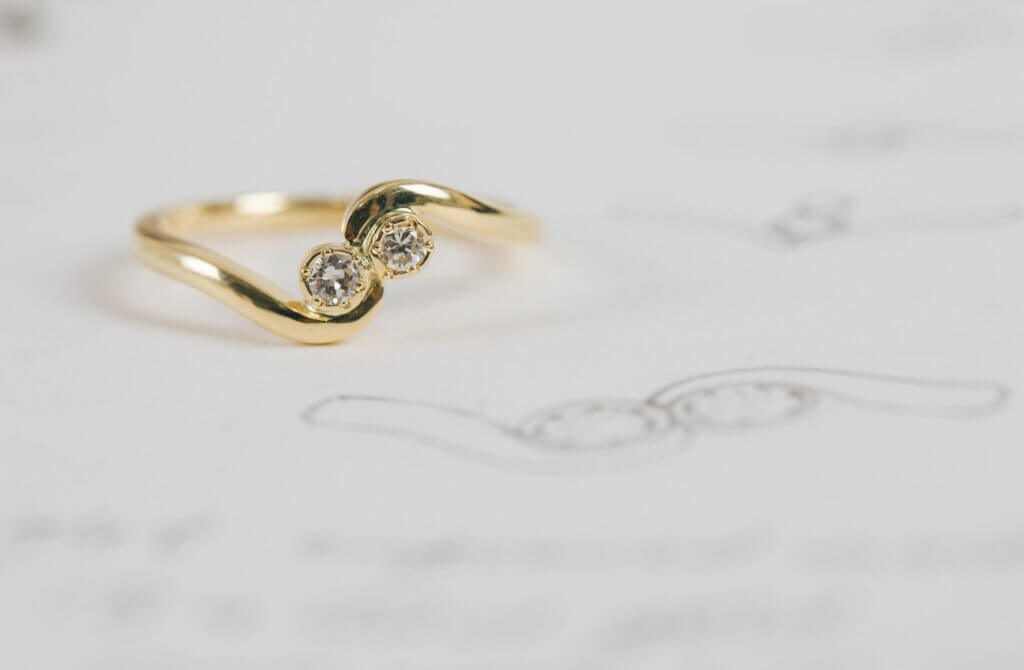
Trilogy
Trilogy rings feature three feature stones. The symbolism of the three stones is very romantic as they represent the past, present and future – a very lovely symbol for your engagement ring!
The centre stone is usually a little larger than the outer stones, and the outer stones are often a different shape to the central stone.
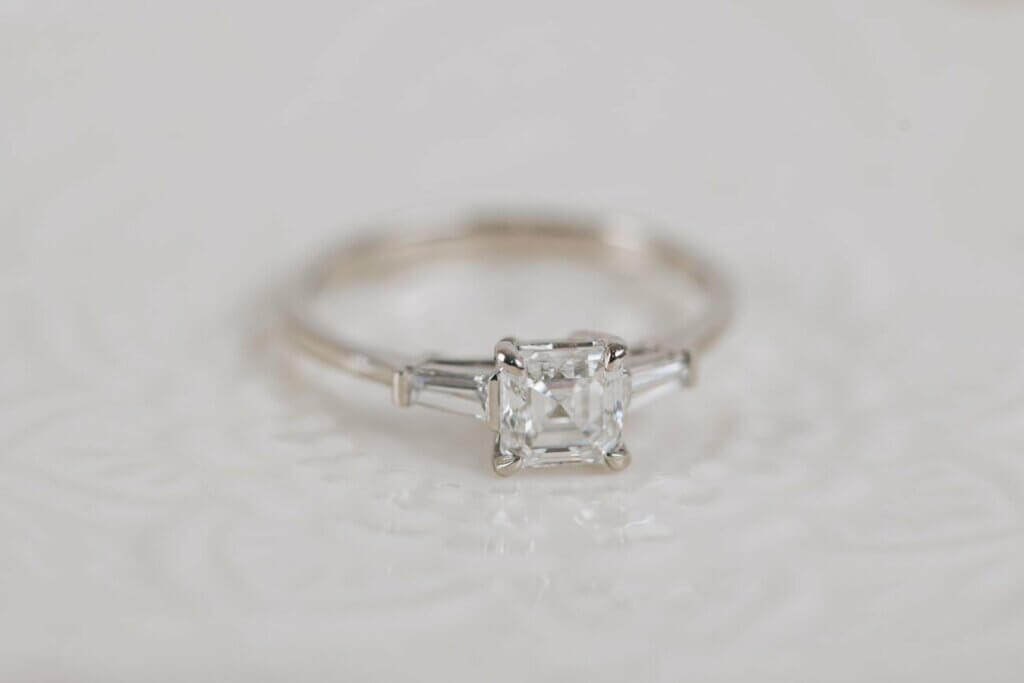
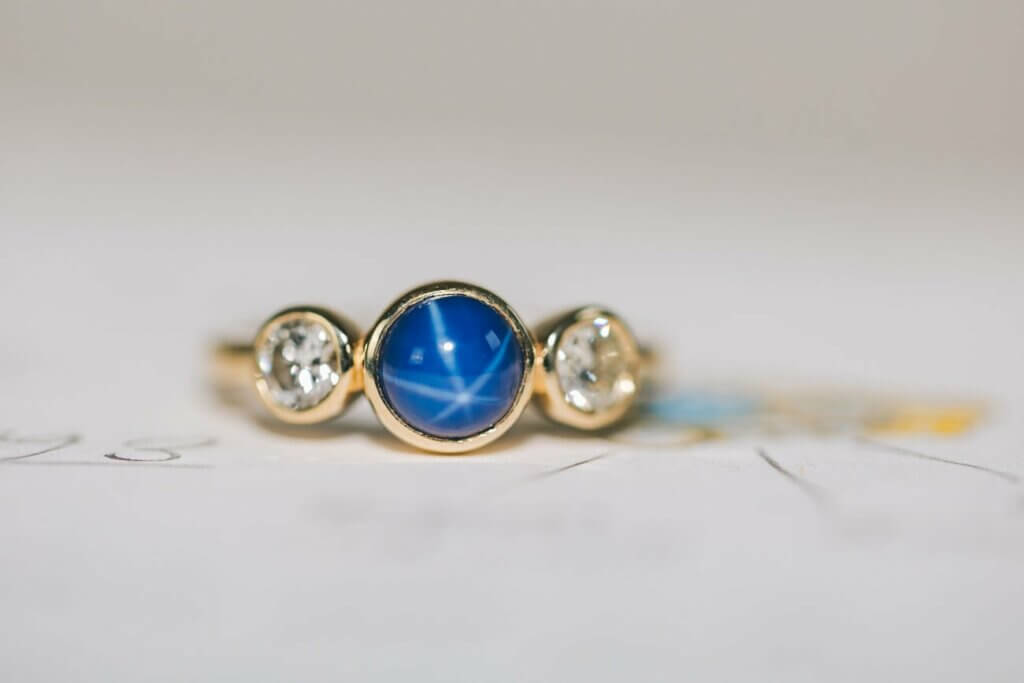
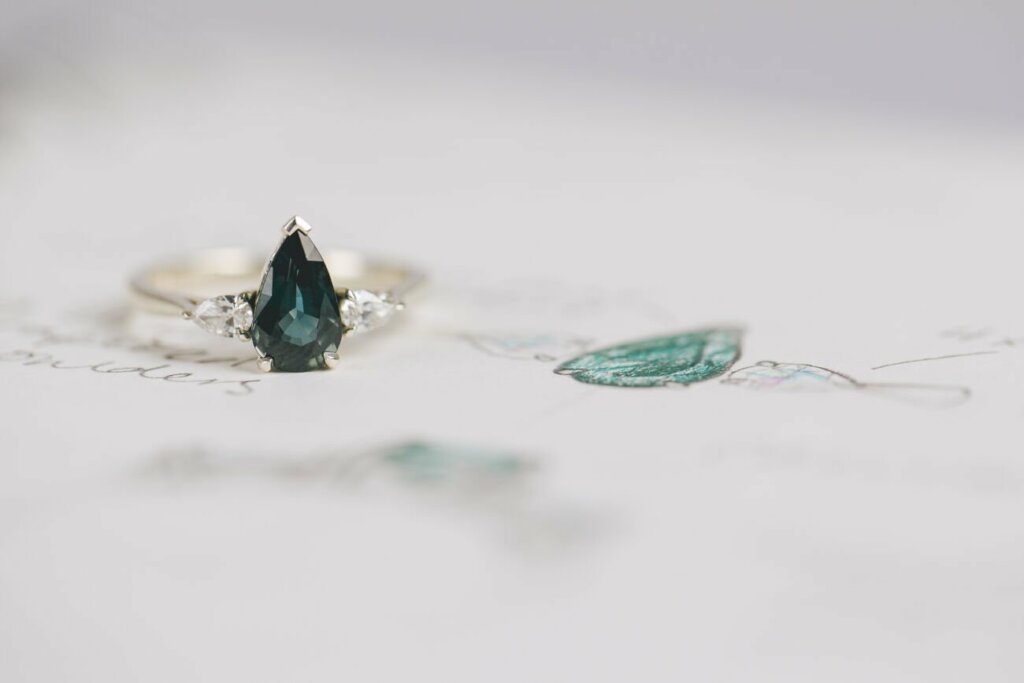
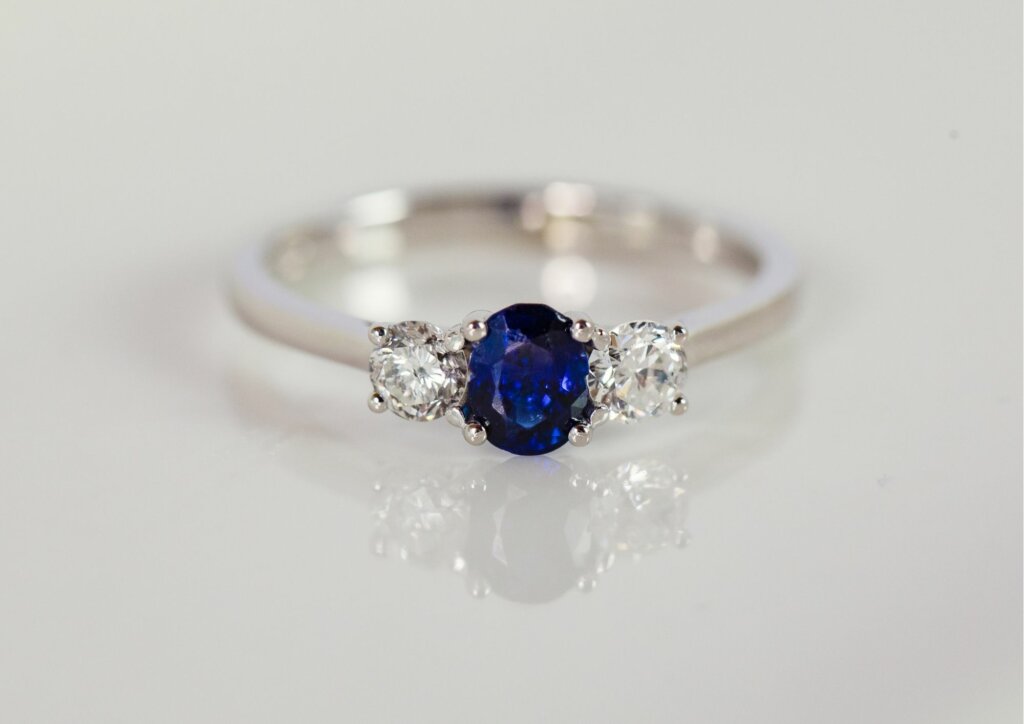
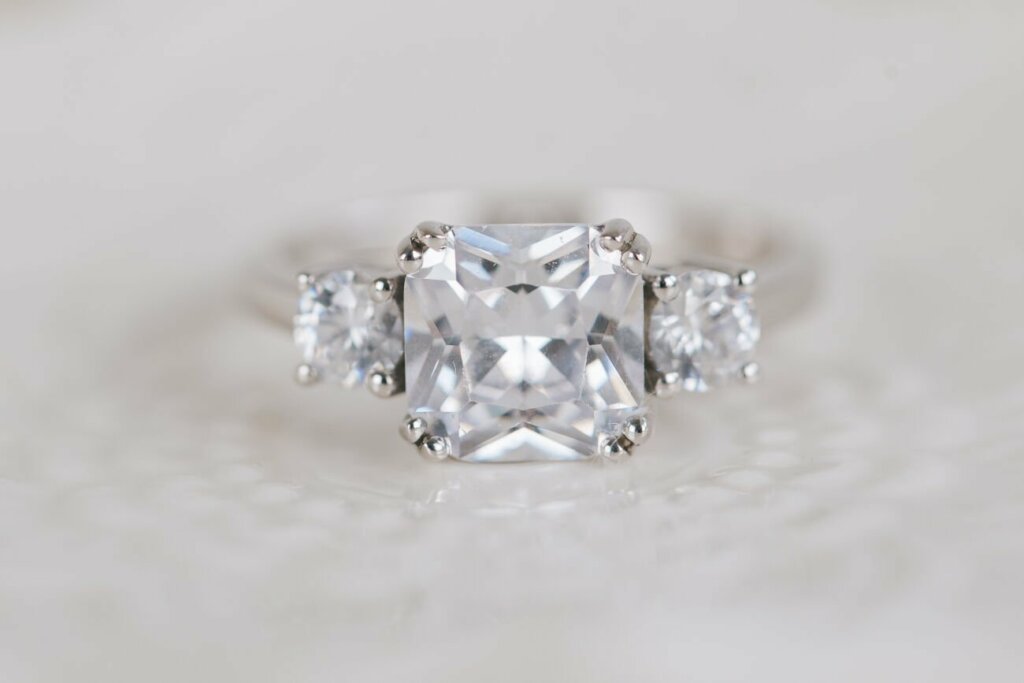
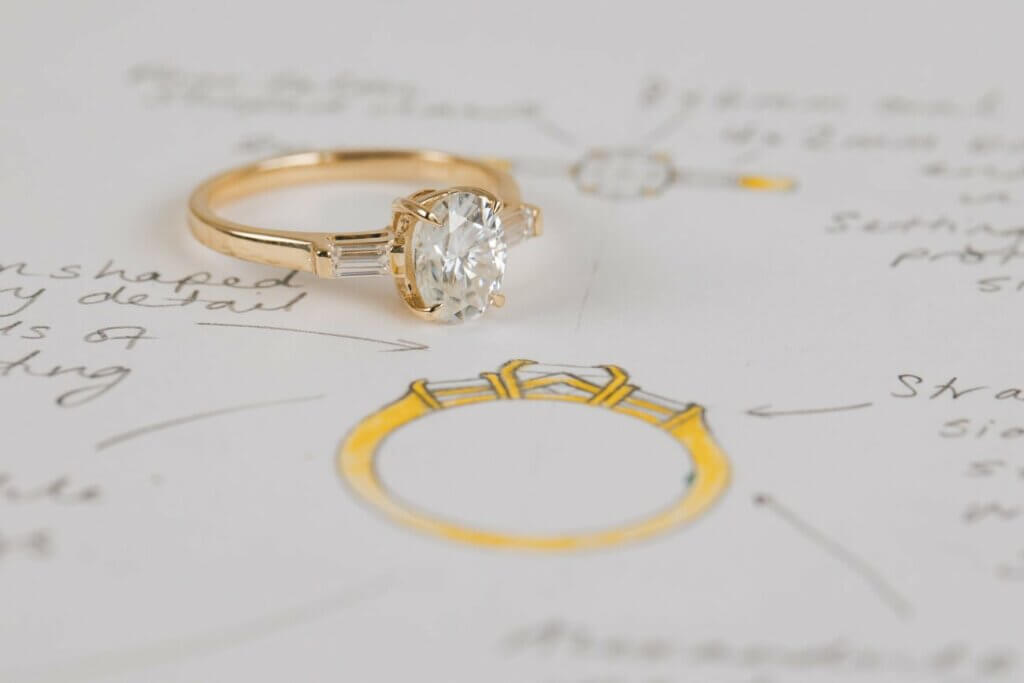
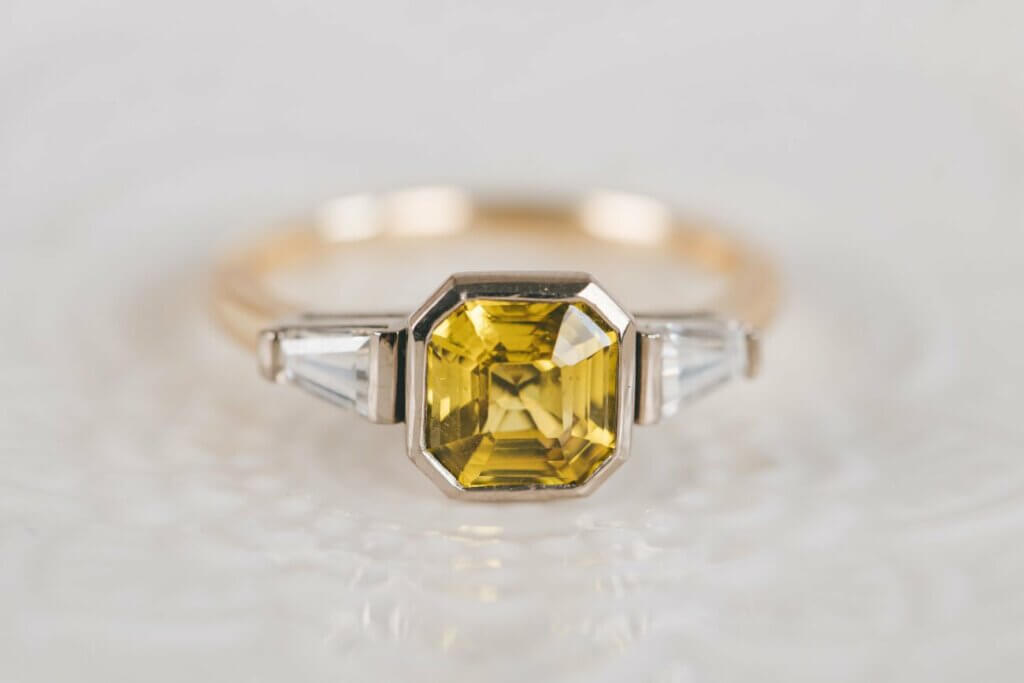
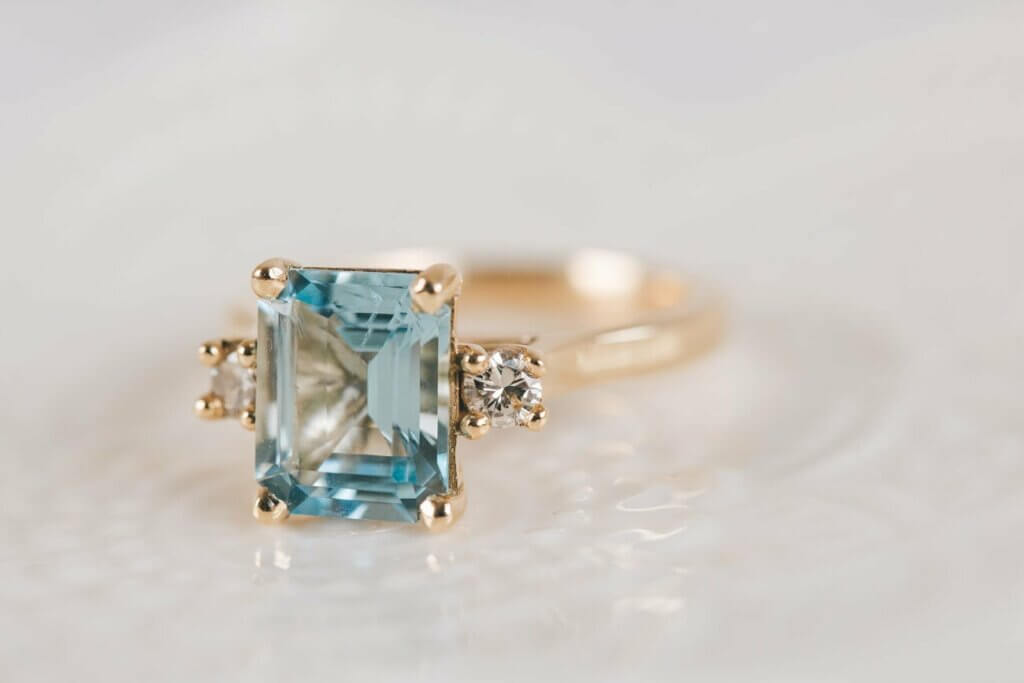
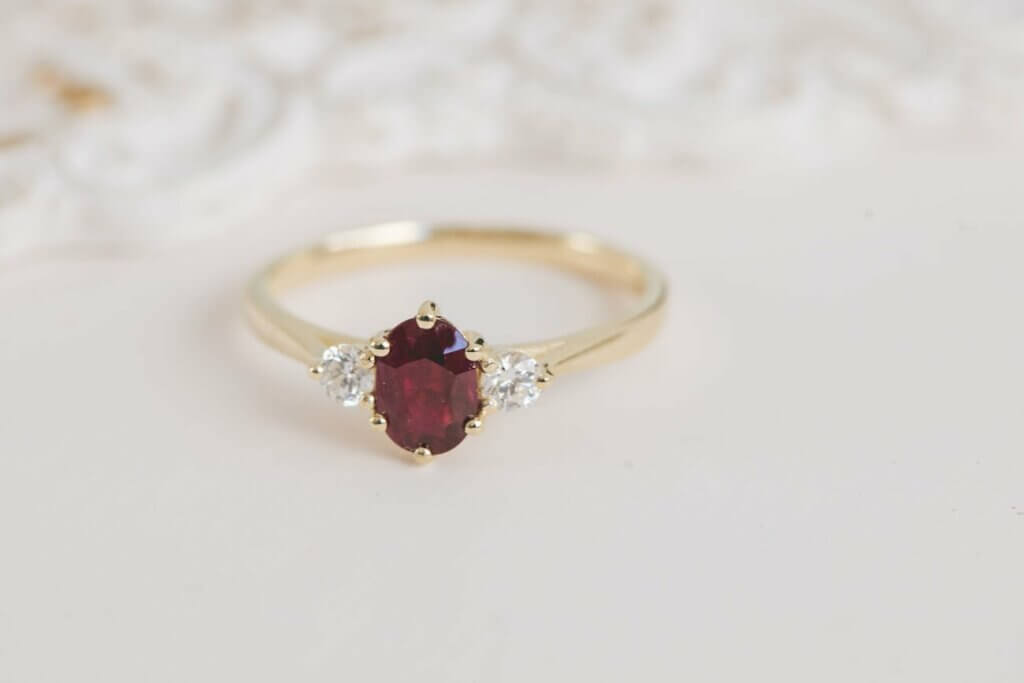
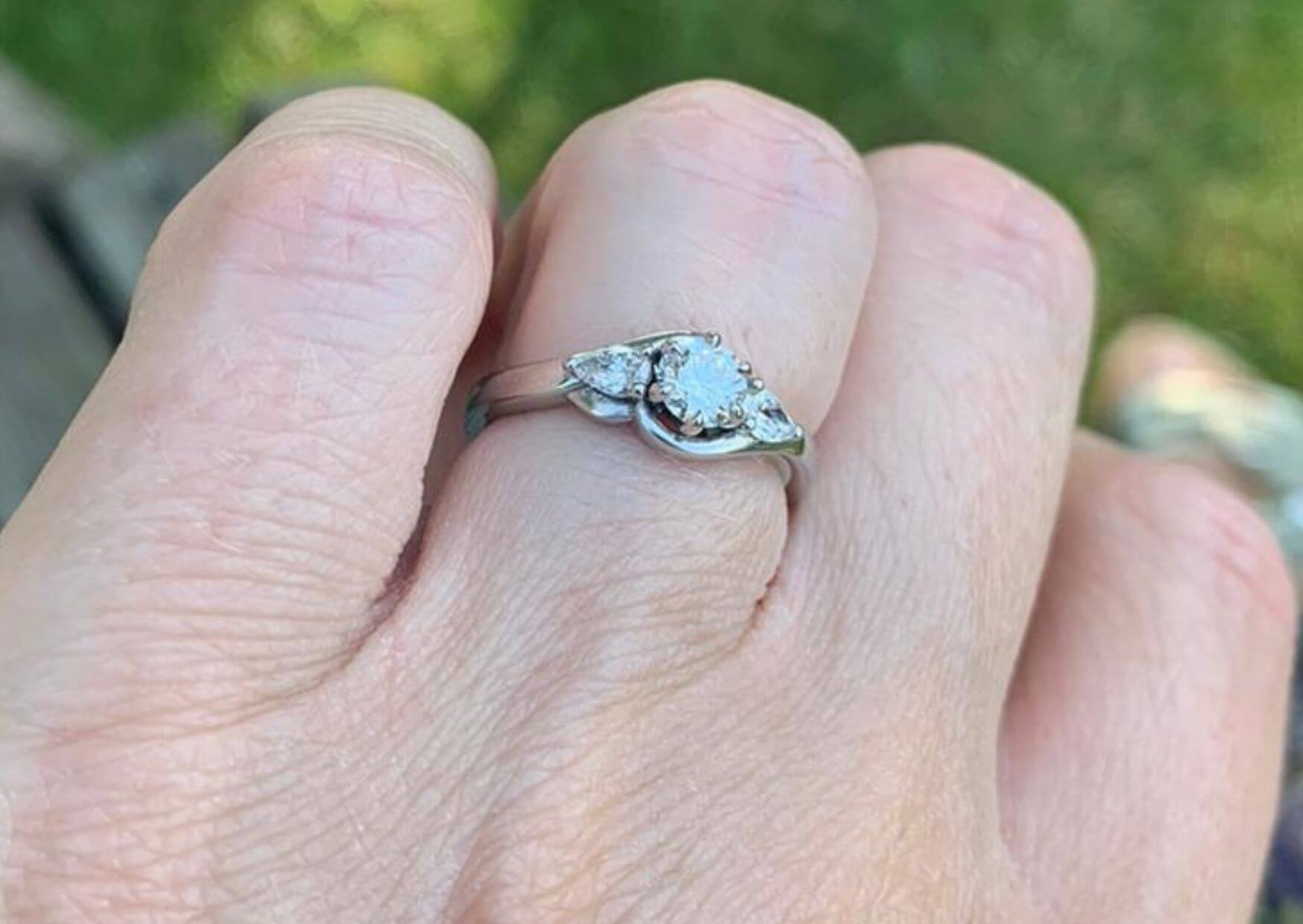
Five Stone Ring
Five stone rings are similar to a trilogy but with additional stones before the band starts. This design often suits squarer shaped stones, often with a longer shape like a baguette or emerald cut in the centre.
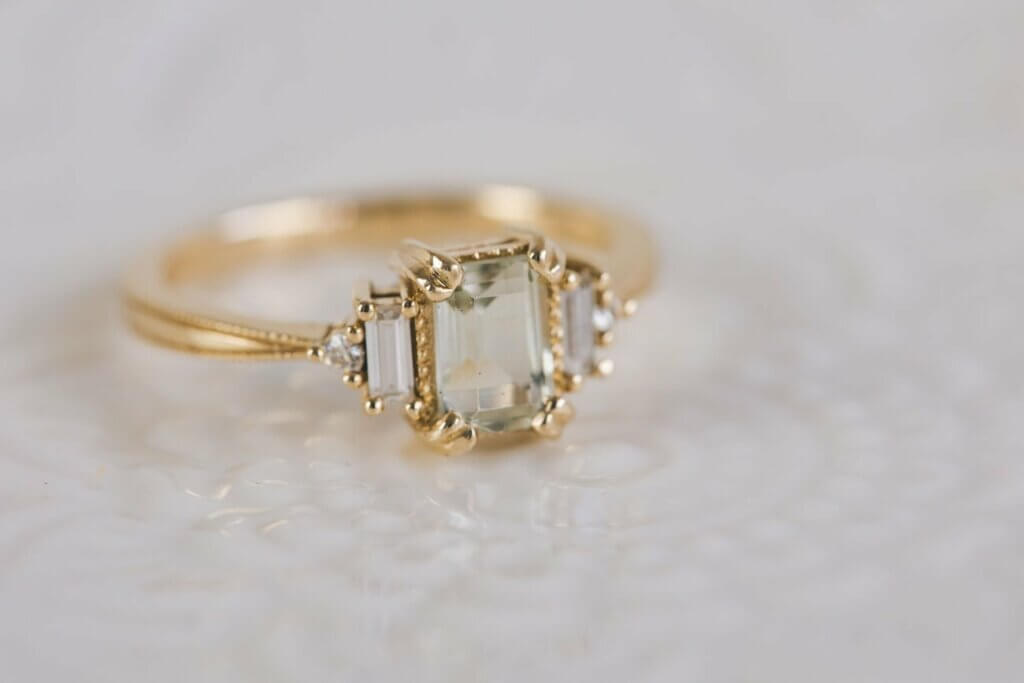
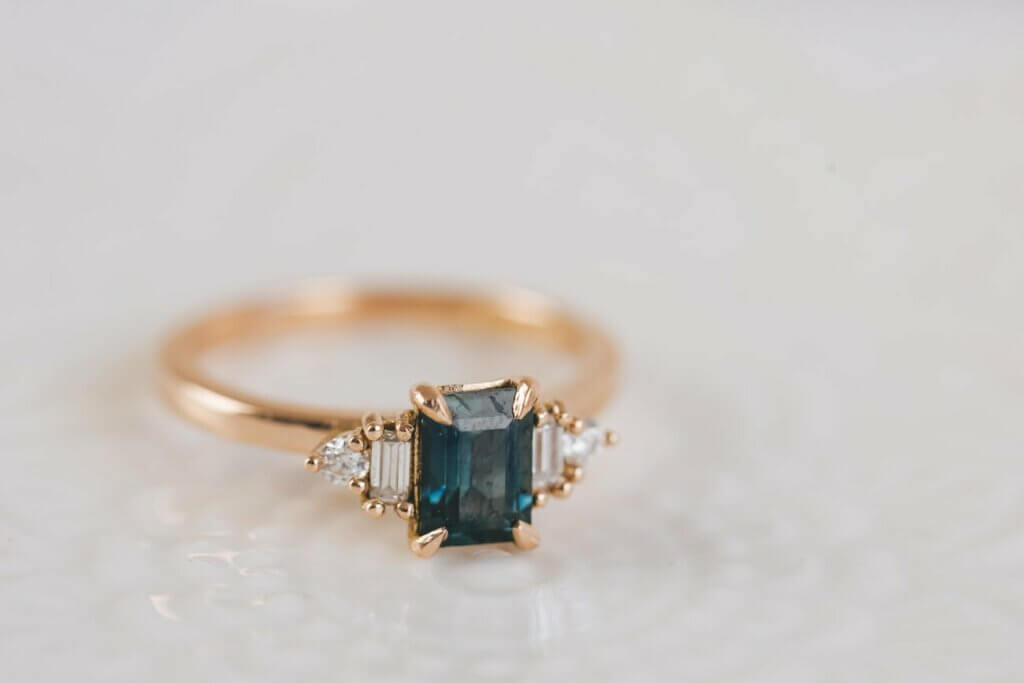
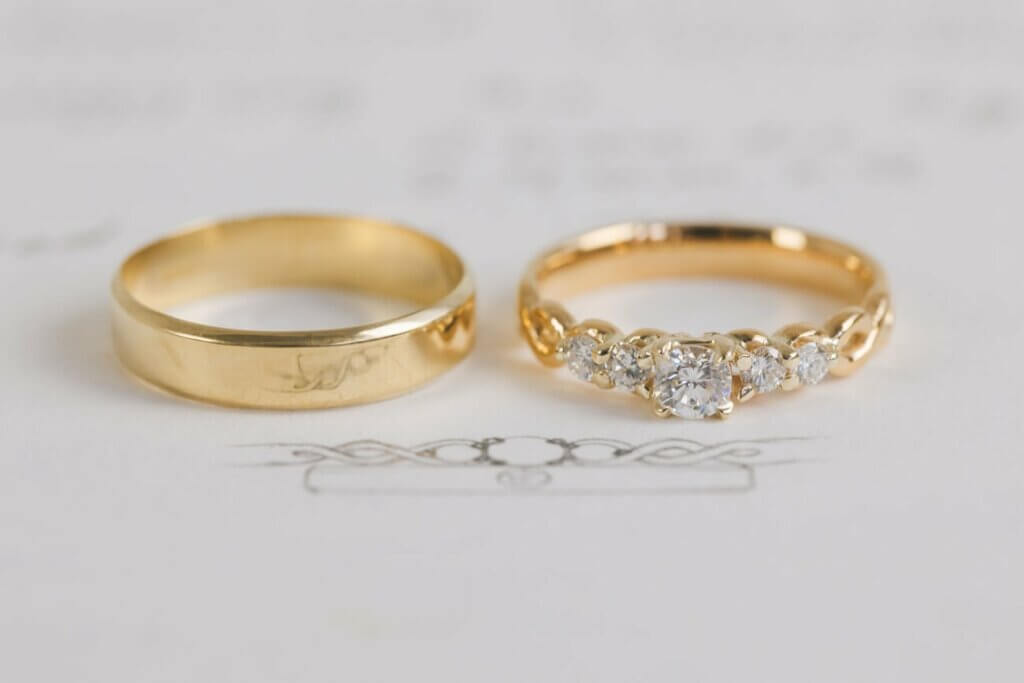
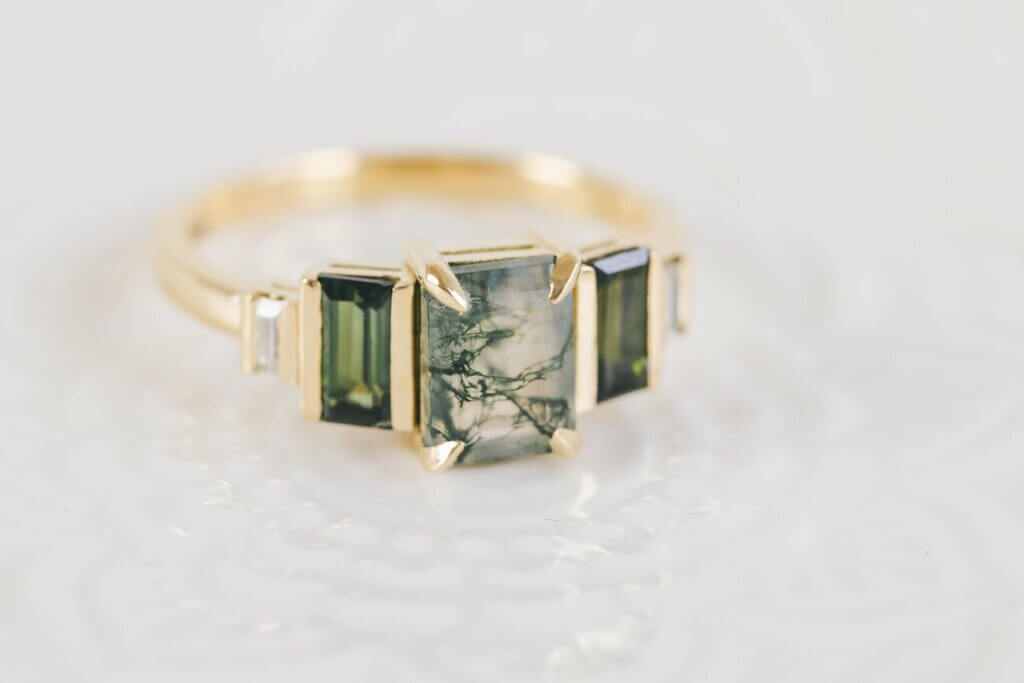
Halo
Halo styles usually have a larger stone in the centre, in either a claw or bezel setting, with a plate that surrounds it grain set with smaller stones (usually diamonds). The plate normally matches the shape of the central stone, but they can be a slightly different shape, such as Laura’s oval sapphire and cushion shaped halo engagement ring below.
Halo designs often have a vintage vibe, but they are actually a modern take on the cluster style.
When set with diamonds around a central diamond, halos make the central stone appear larger.
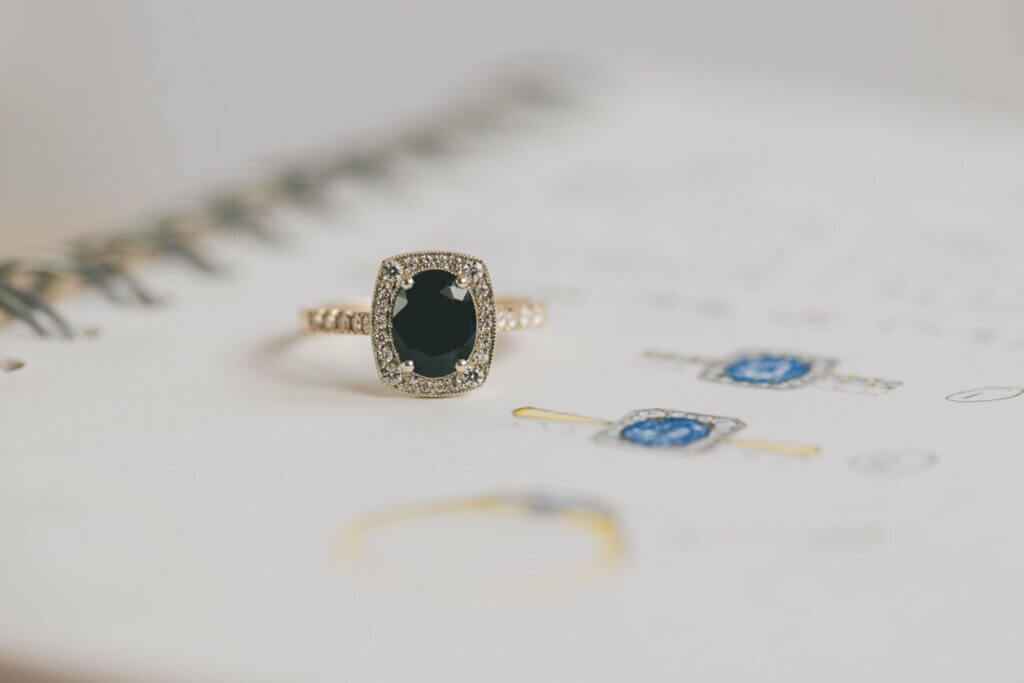
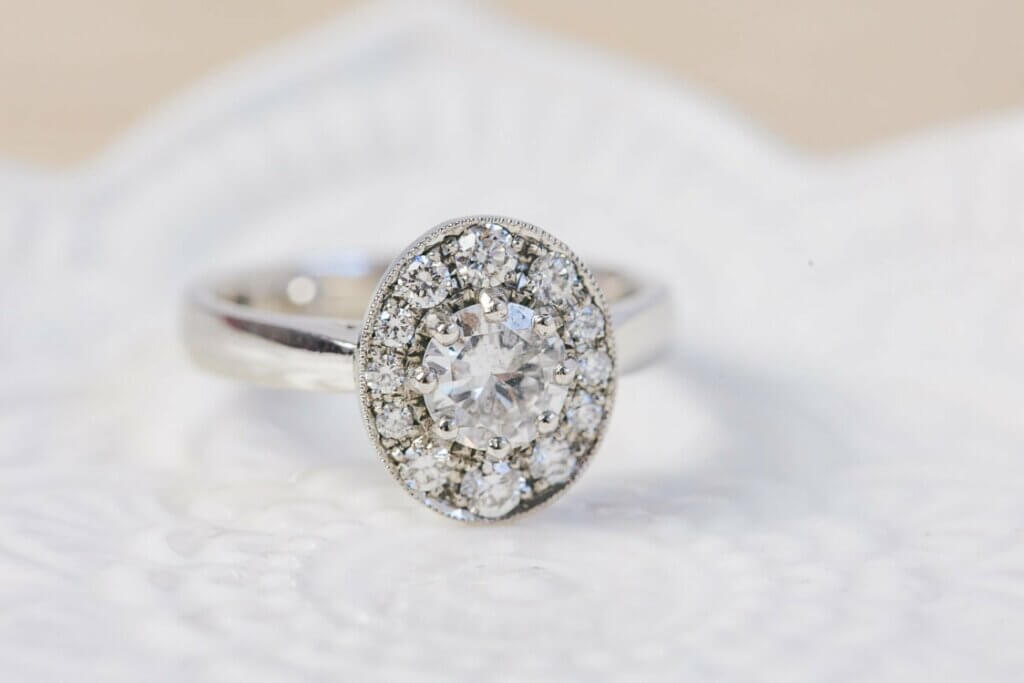
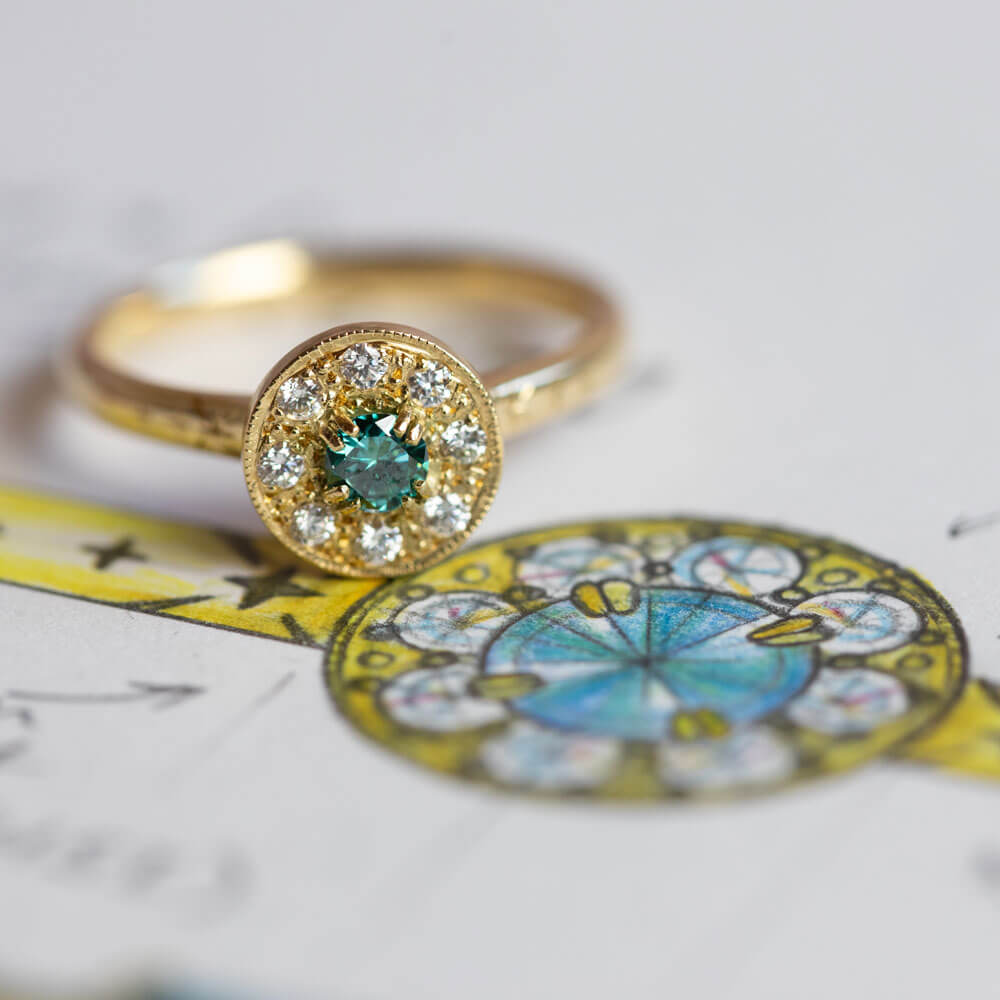
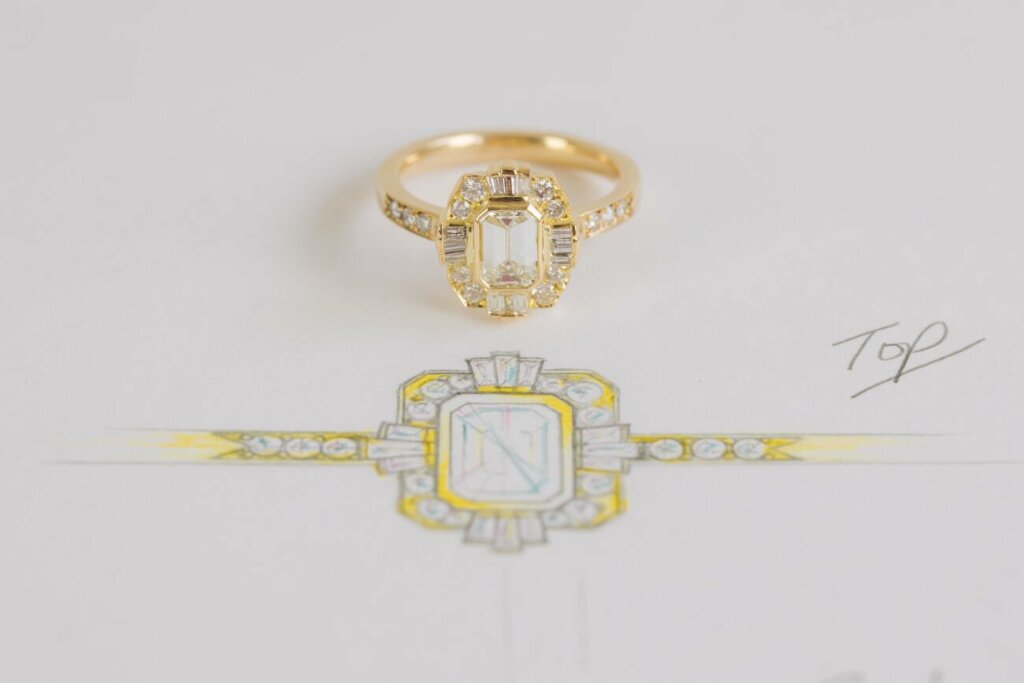
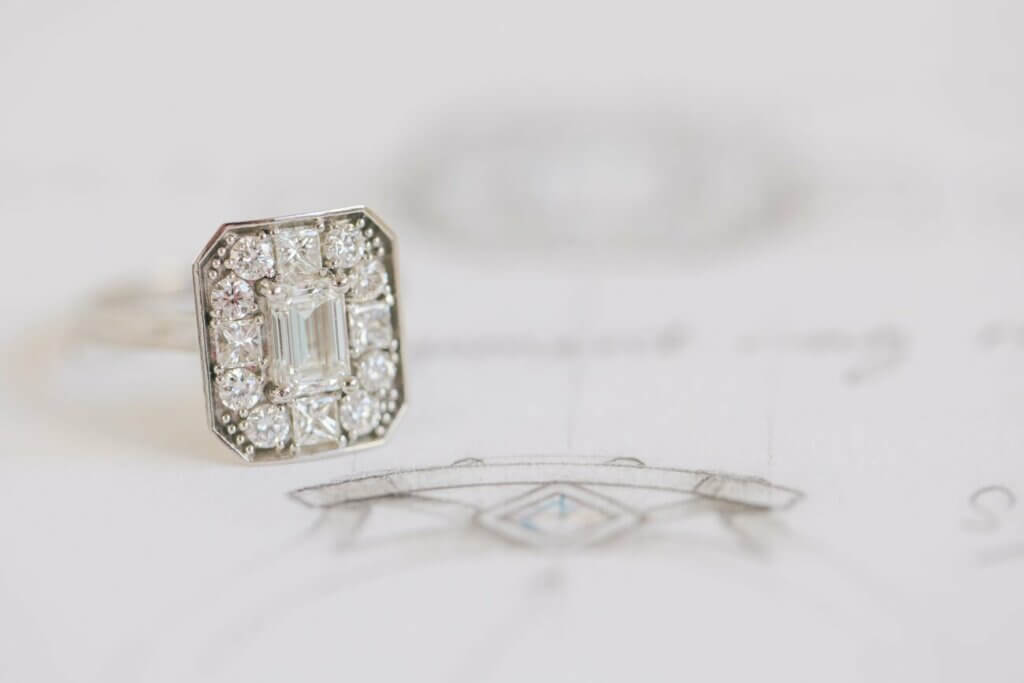
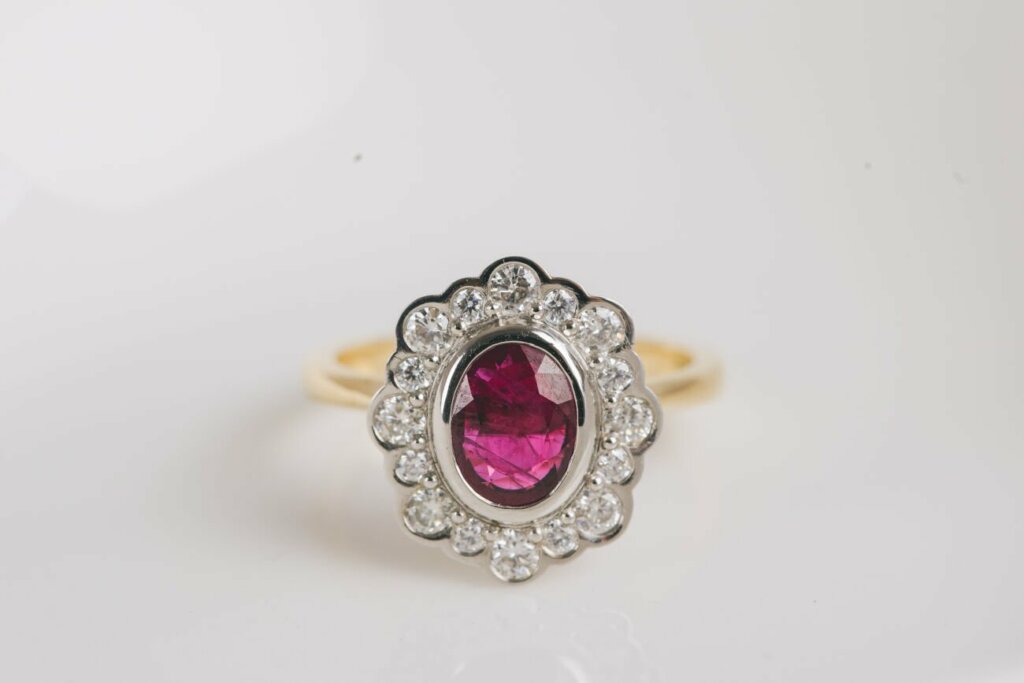
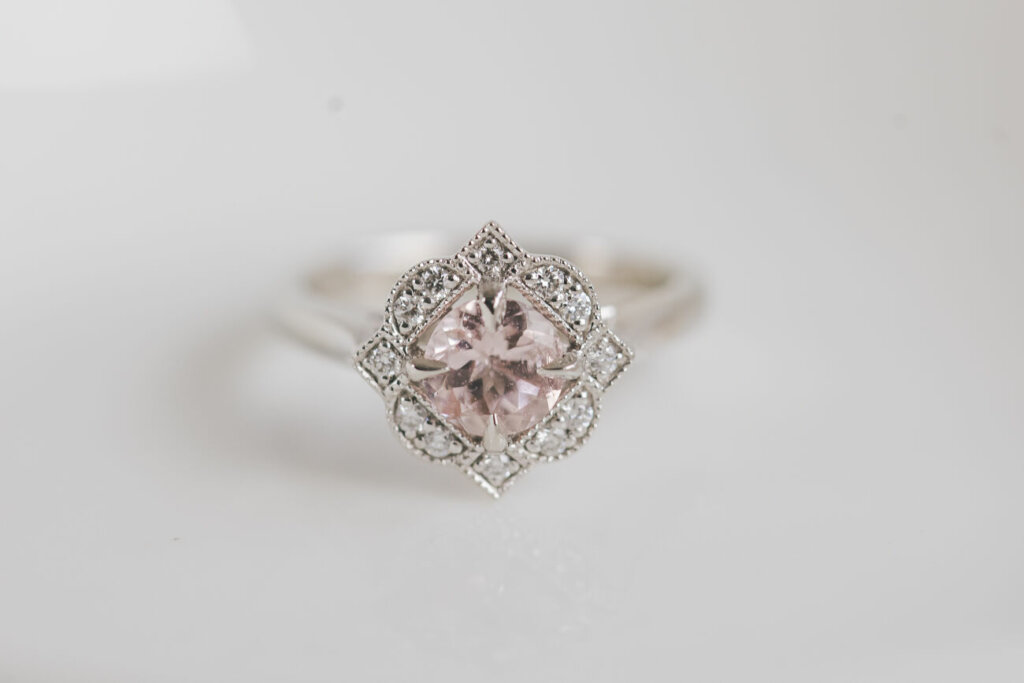
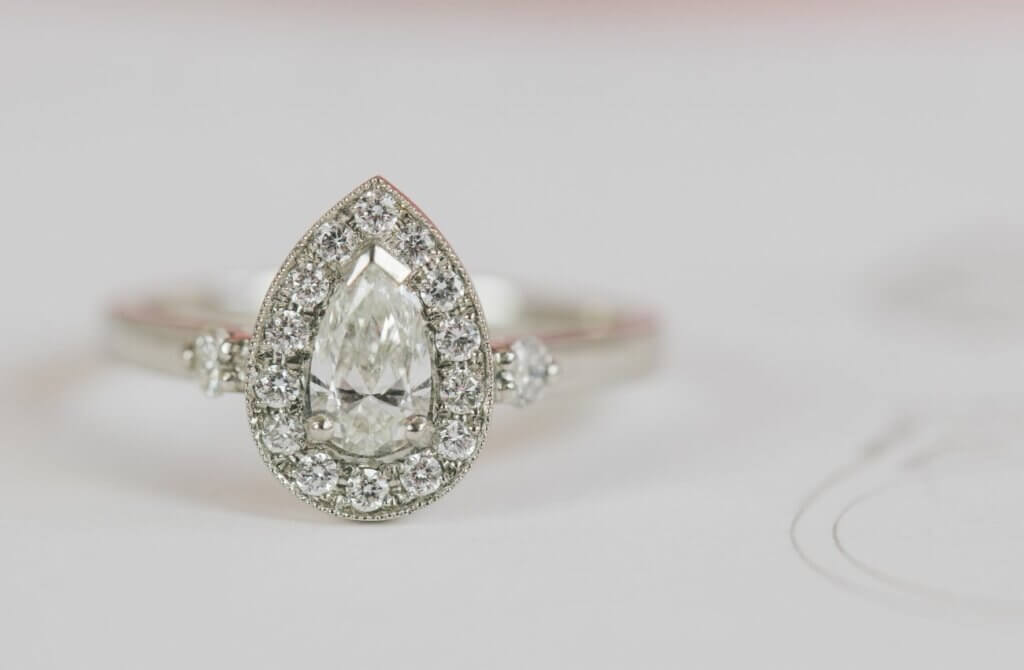
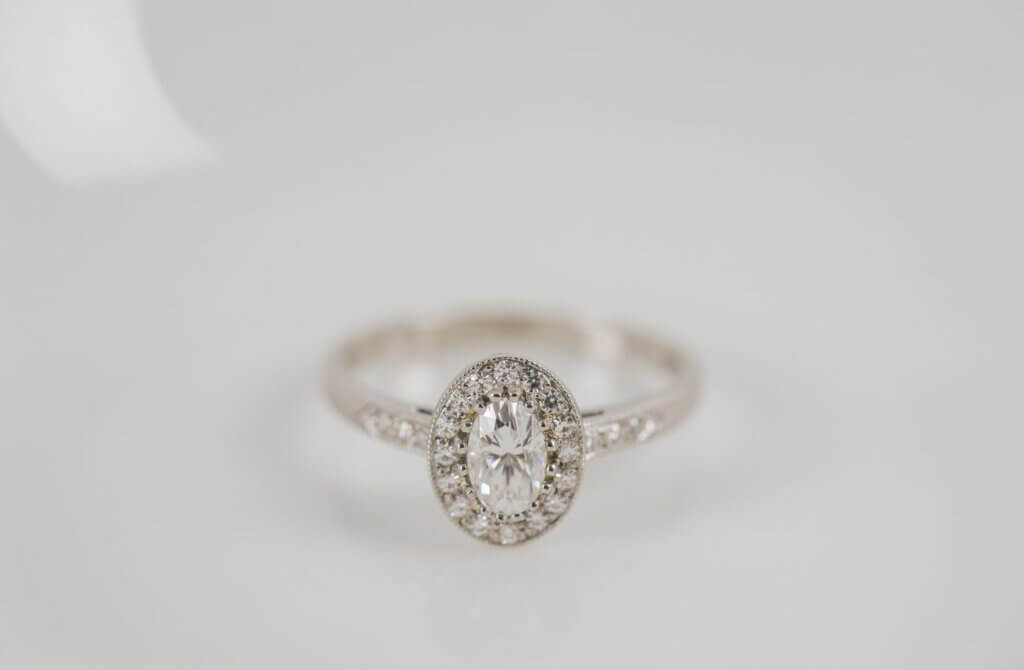
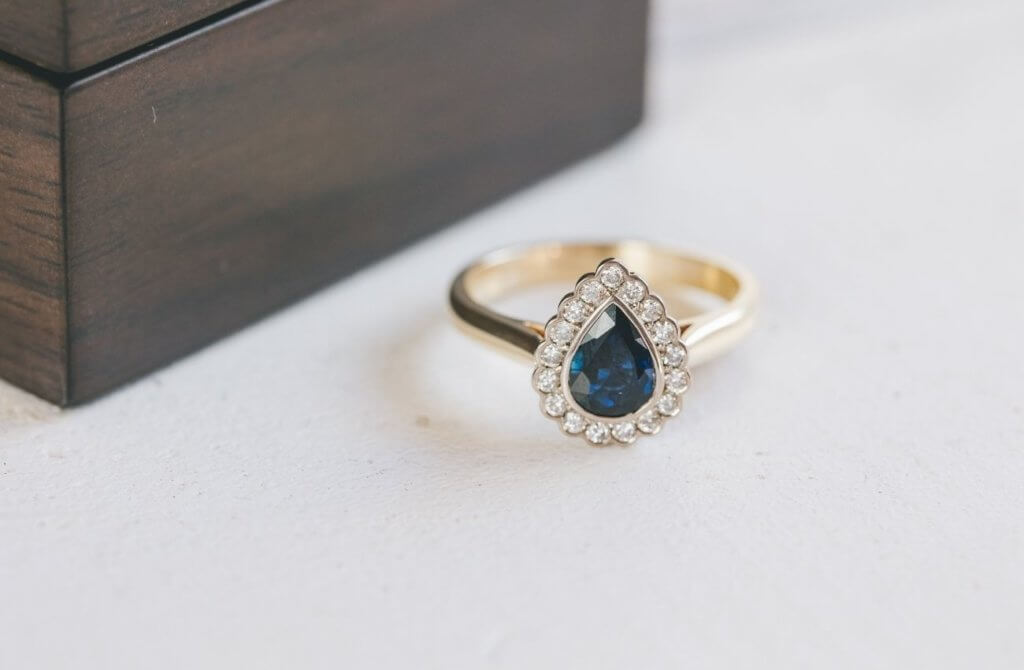
Cluster
Cluster engagement rings are a true classic – there is a reason that the Princess Di style ring continues to be so popular. Cluster settings are different from halo styles as the outer stones (usually diamonds) are larger and are in individual settings instead of set into a plate.
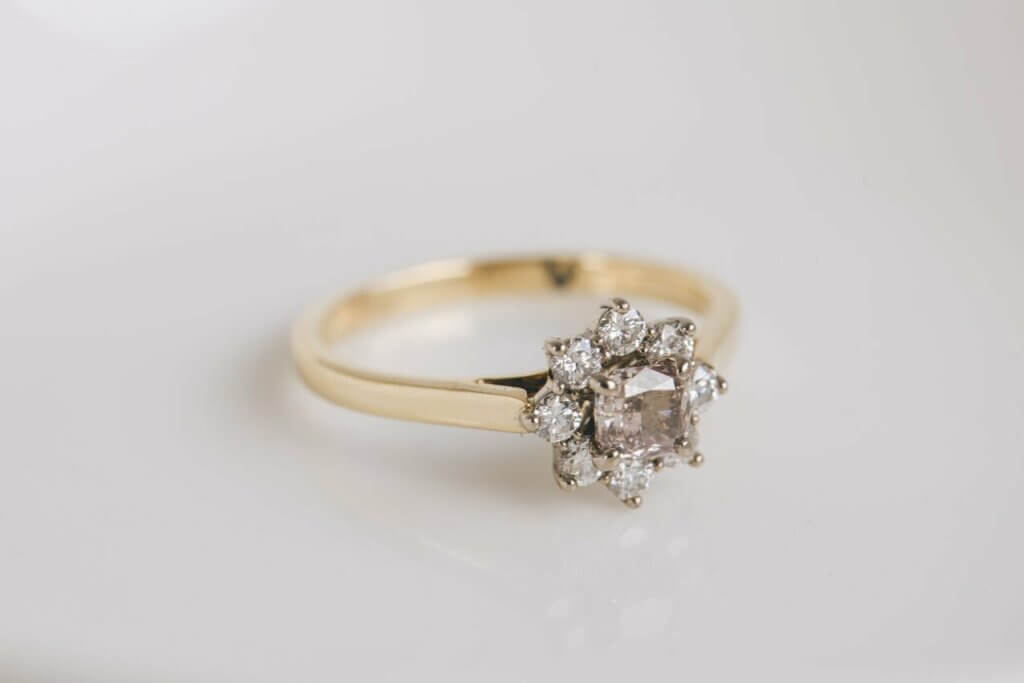
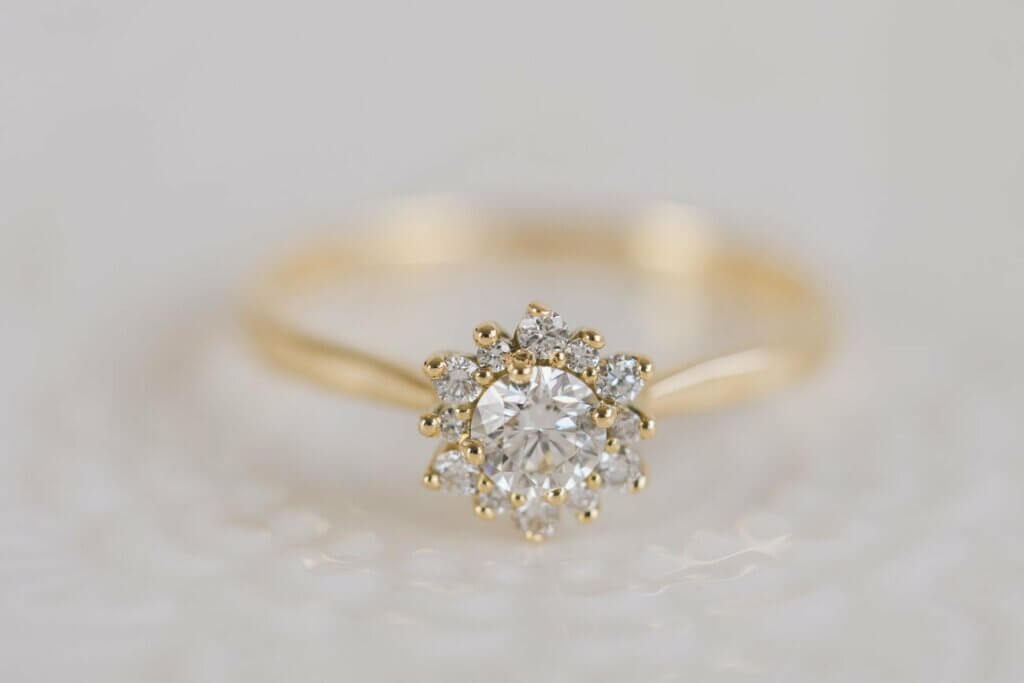
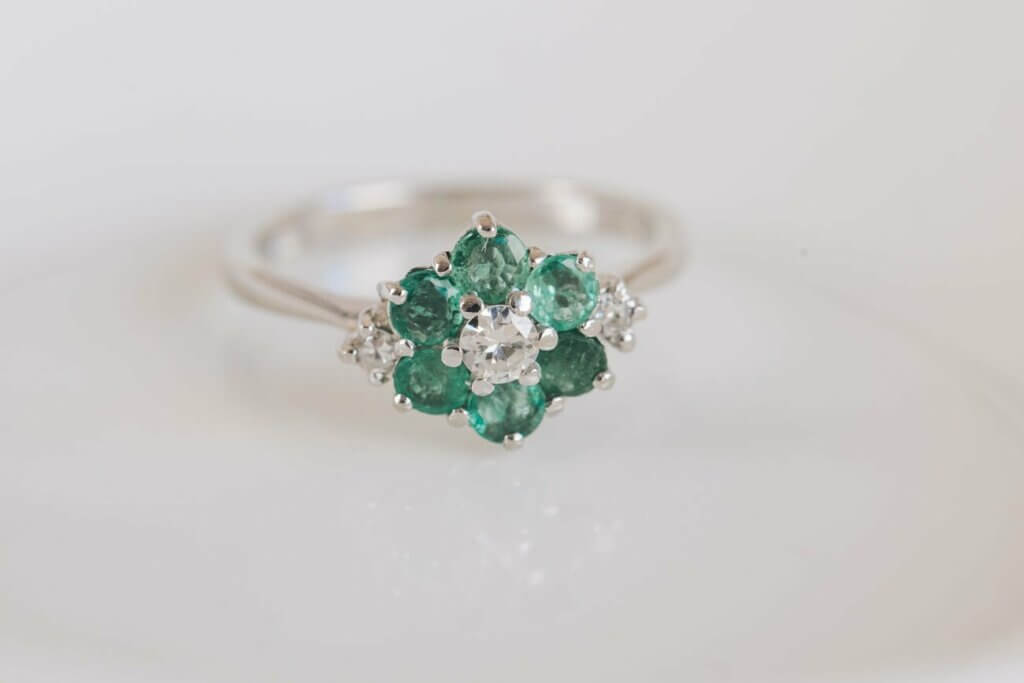
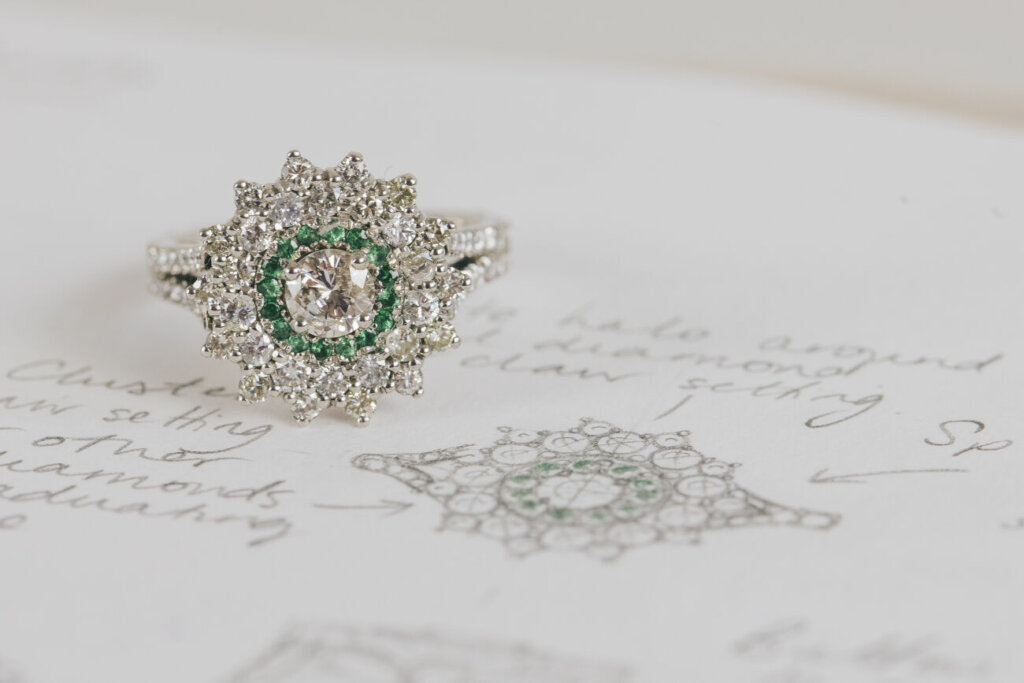
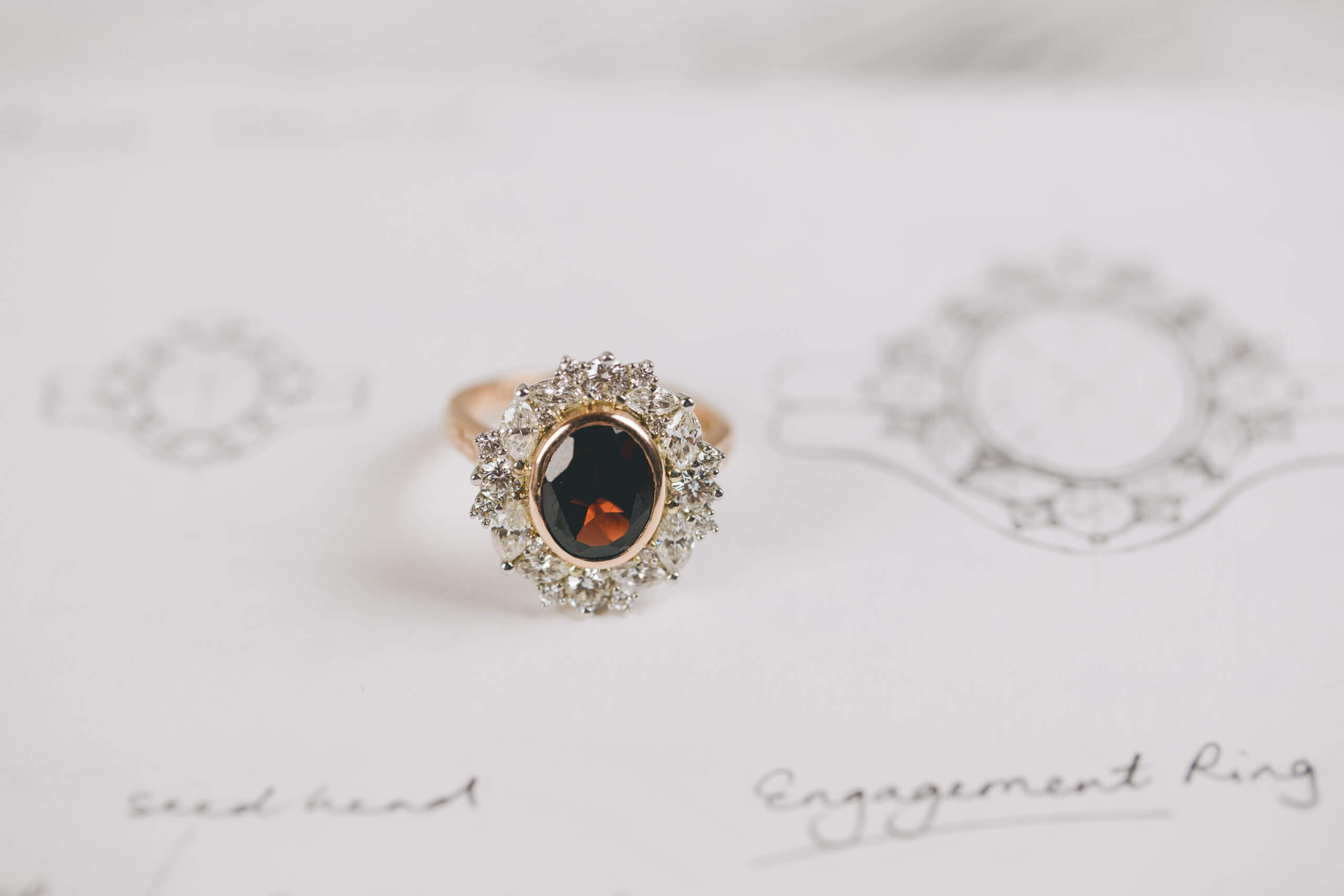
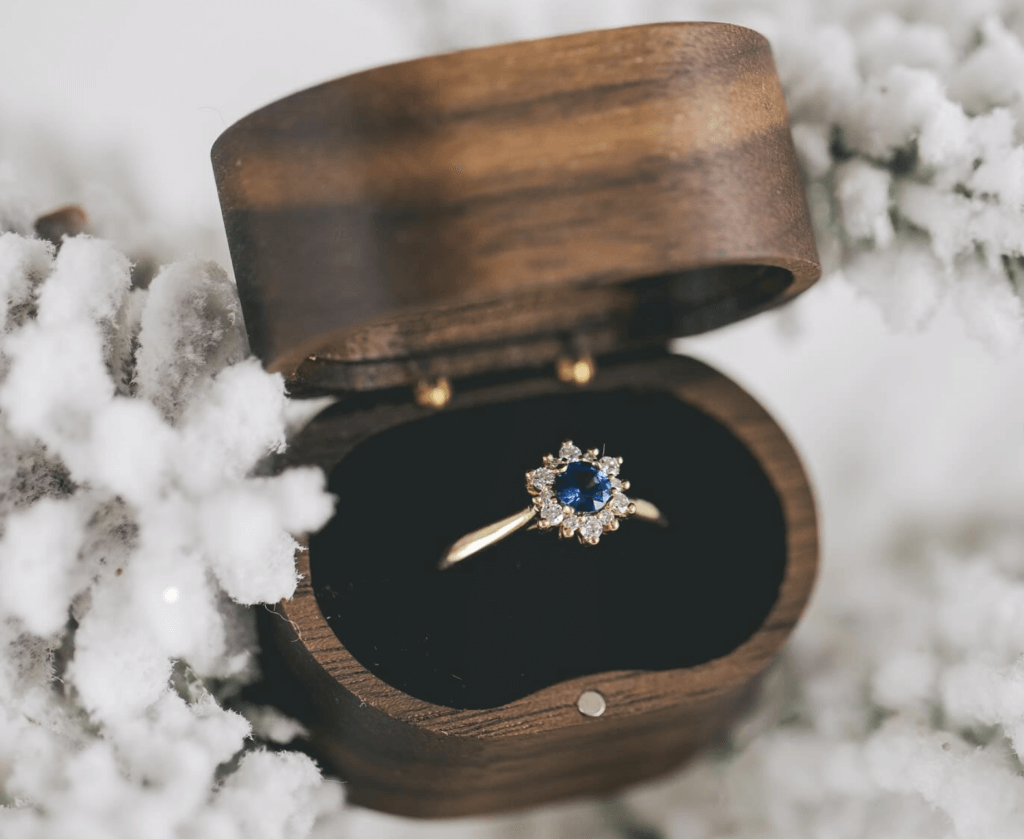
Modern cluster
A modern cluster ring will have a cluster of stones either side of the central stone rather than the accent stones going all the way around the central stone. This is a contemporary take on the cluster design.
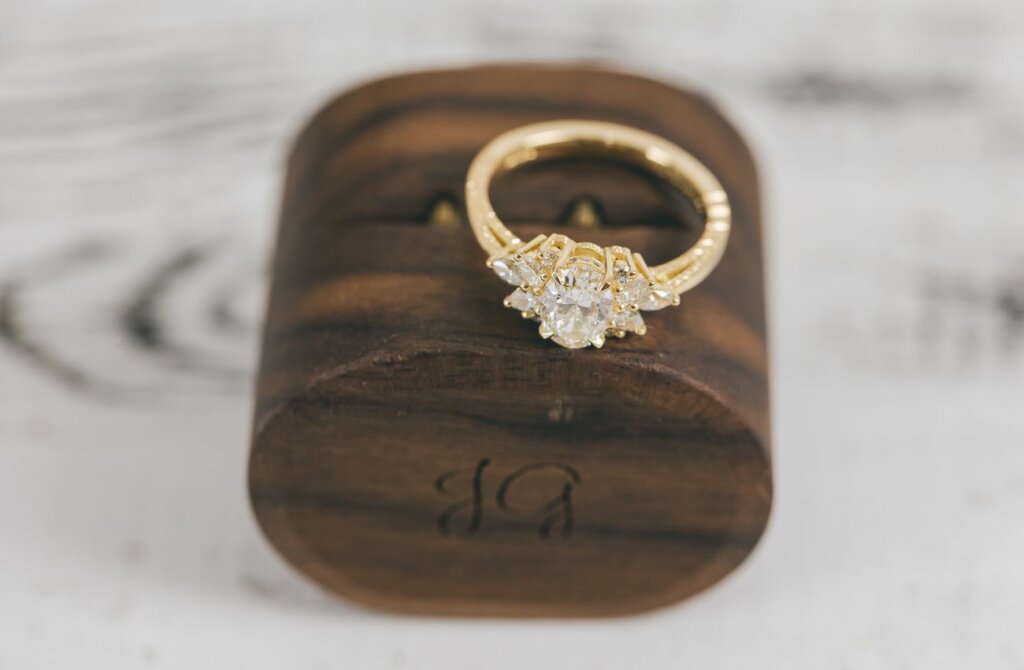
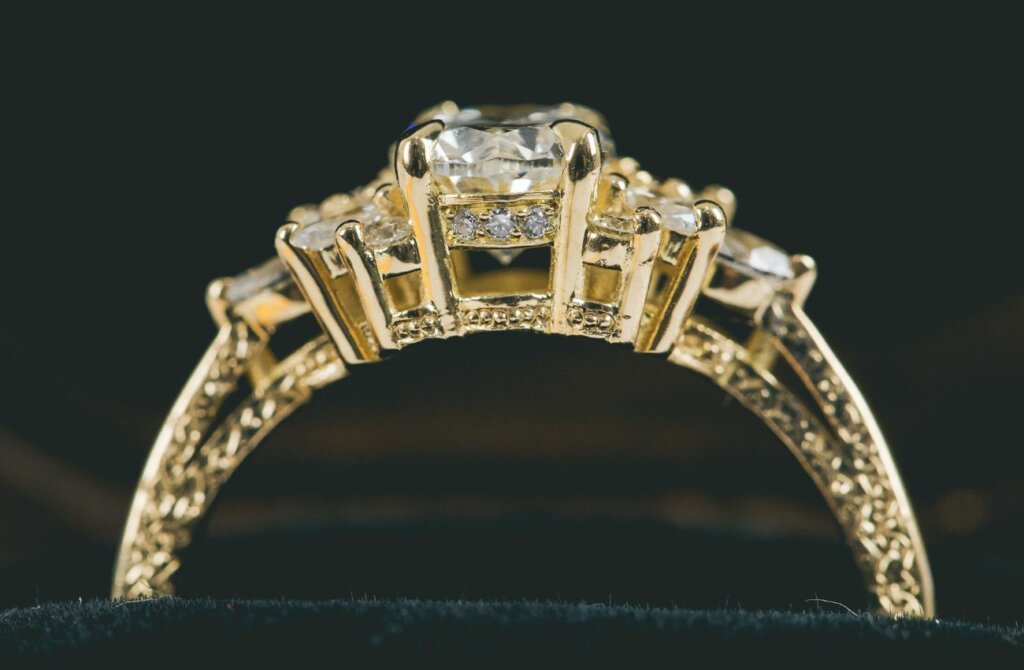
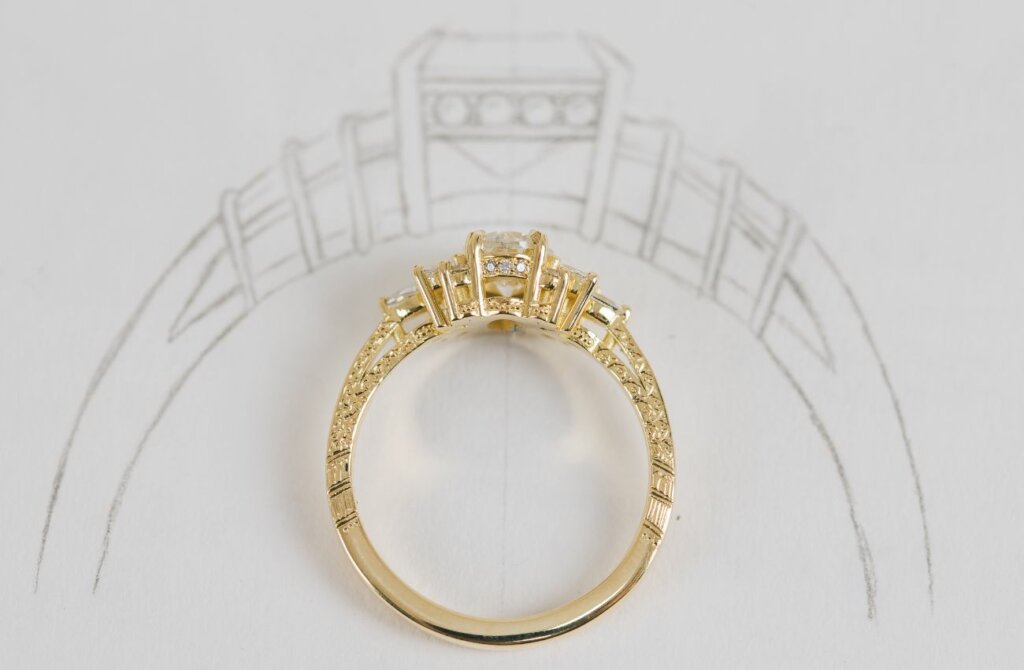
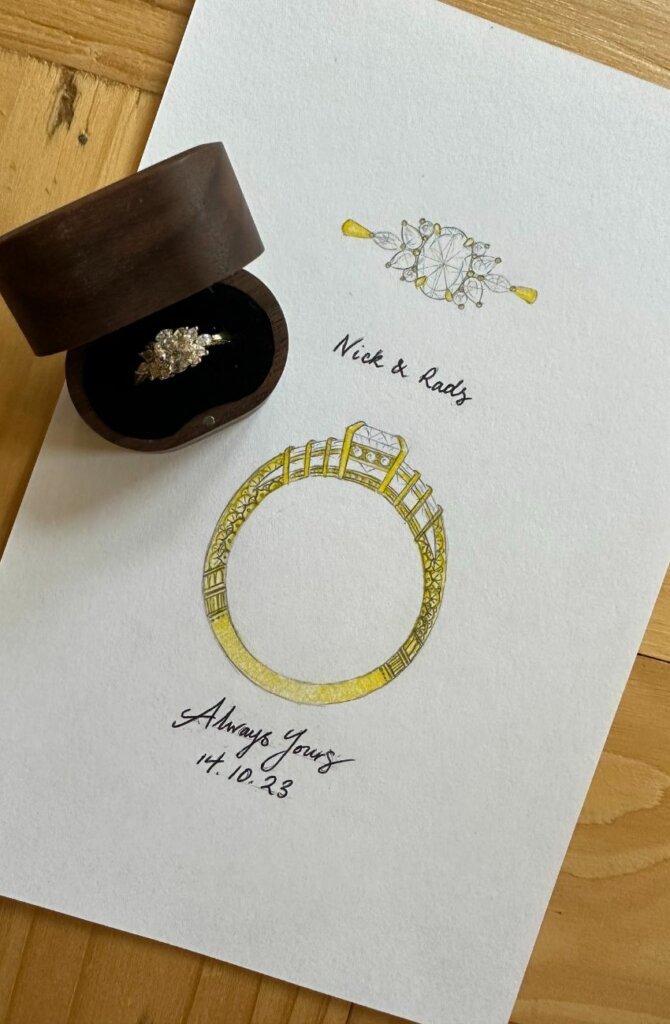
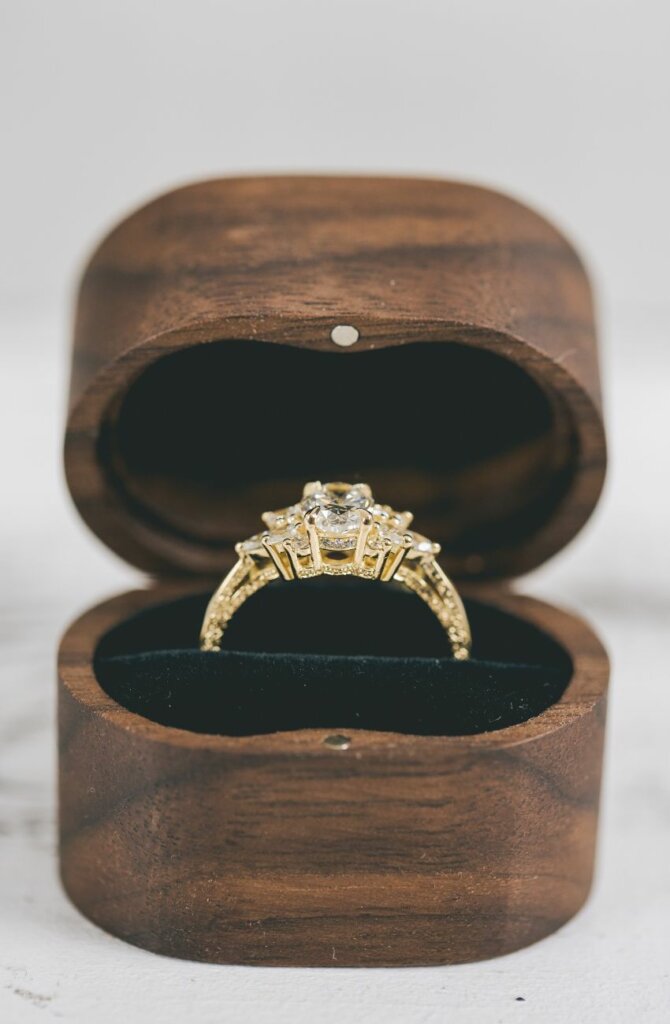
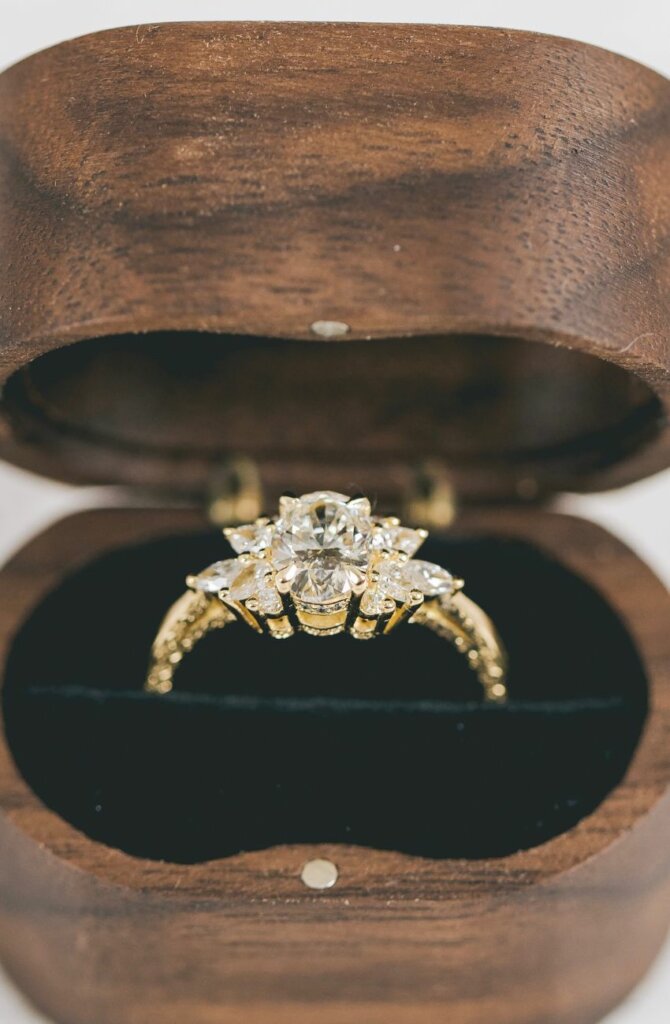
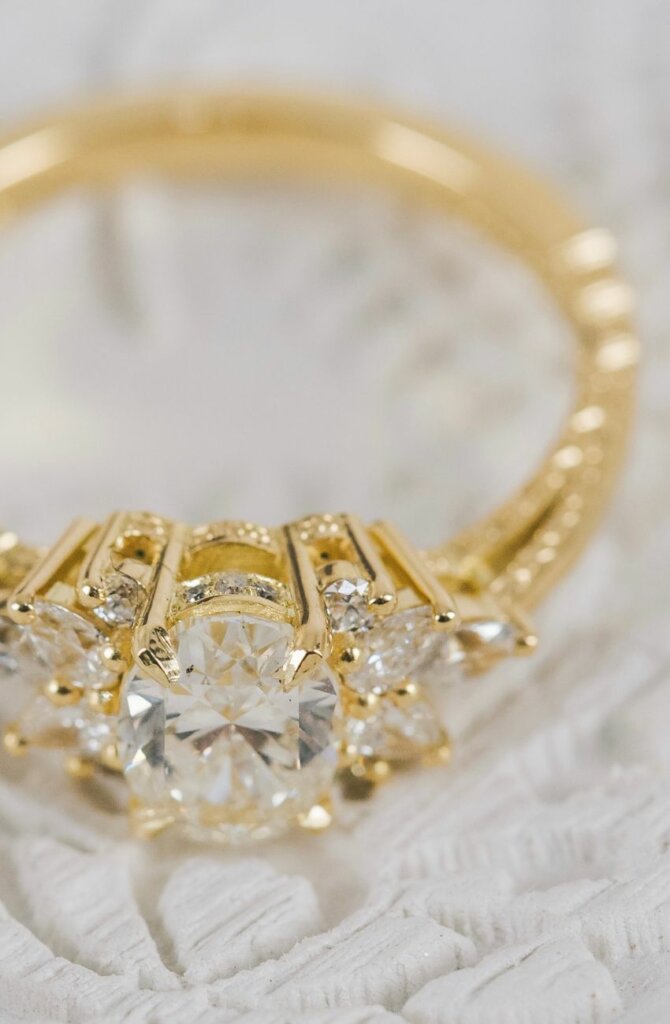
Trefoil Shoulders
Trefoil accent stones are an alternative to the trilogy style of rings. Grouping together three round stones in a trefoil shape complements the central feature stone and draw your eye down the shoulders of the ring.
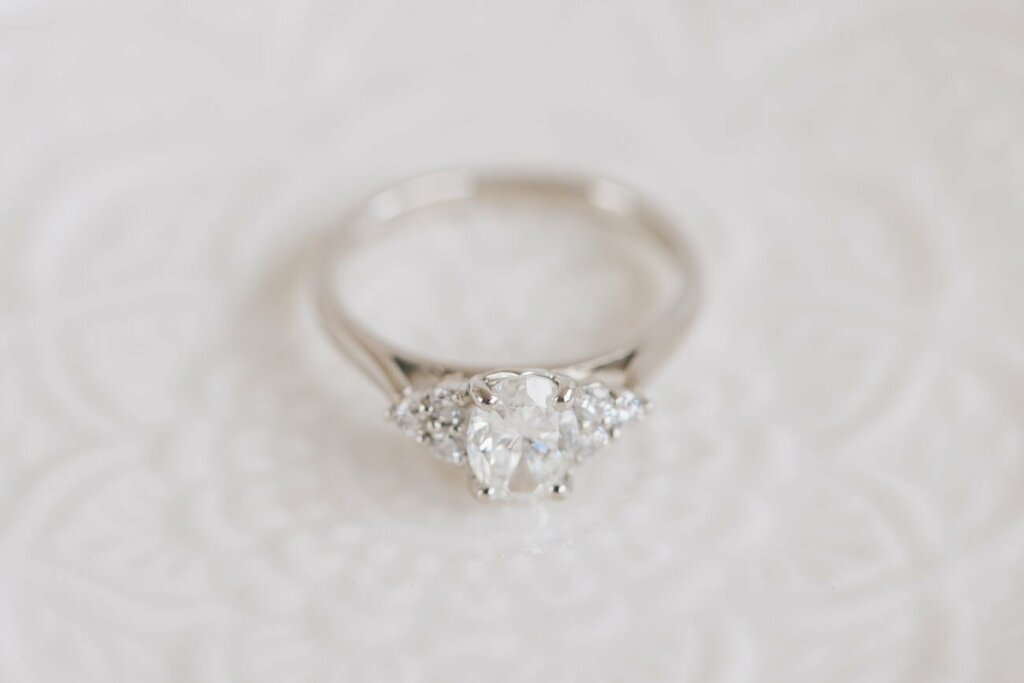
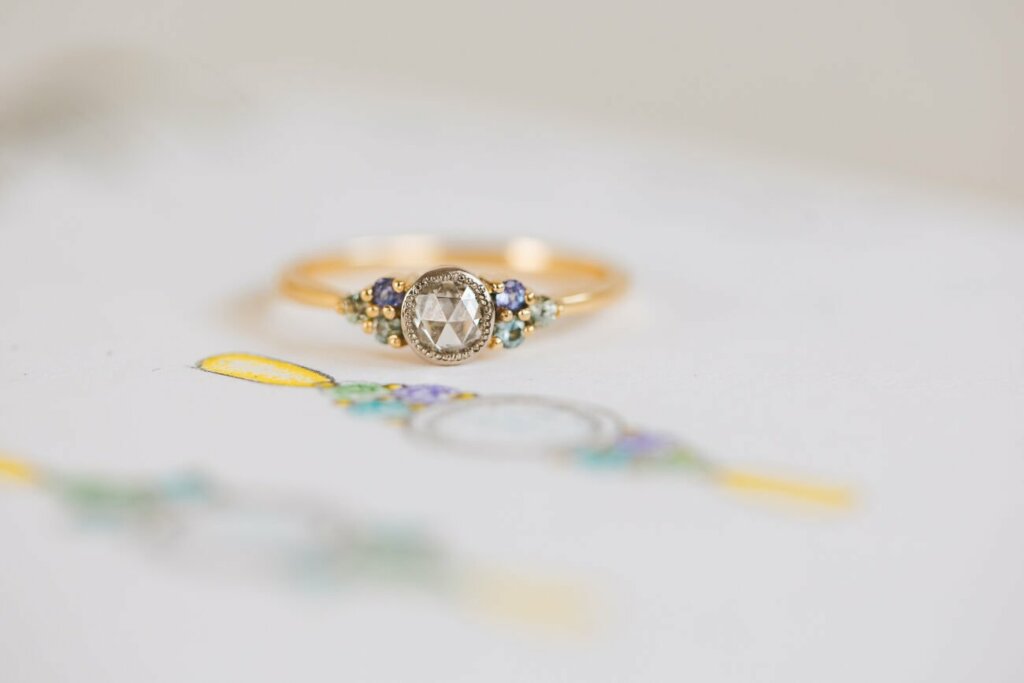
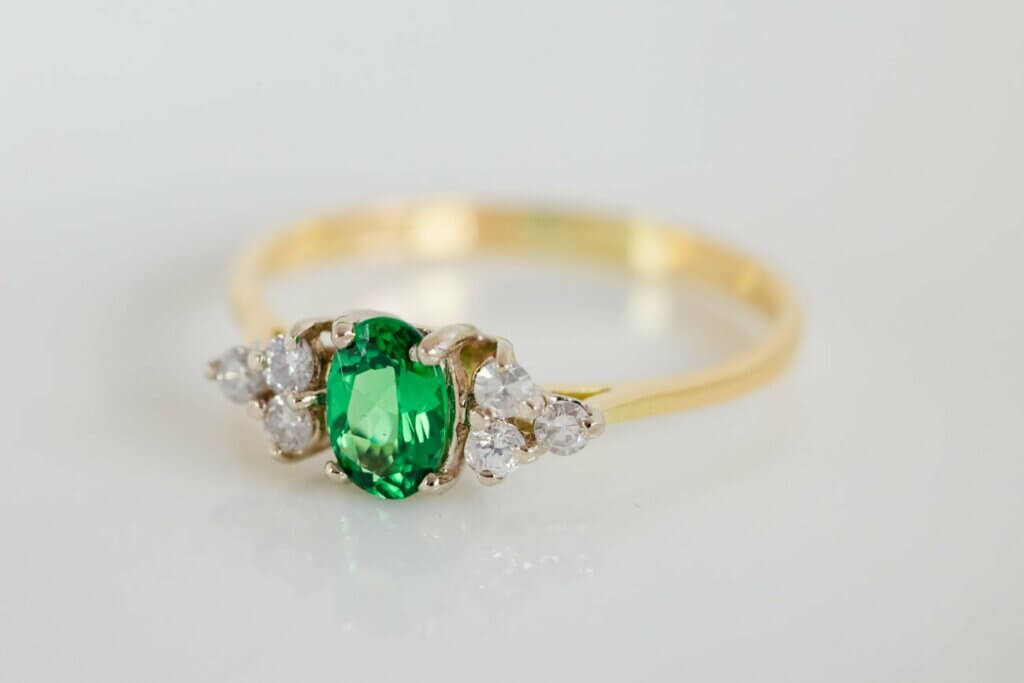
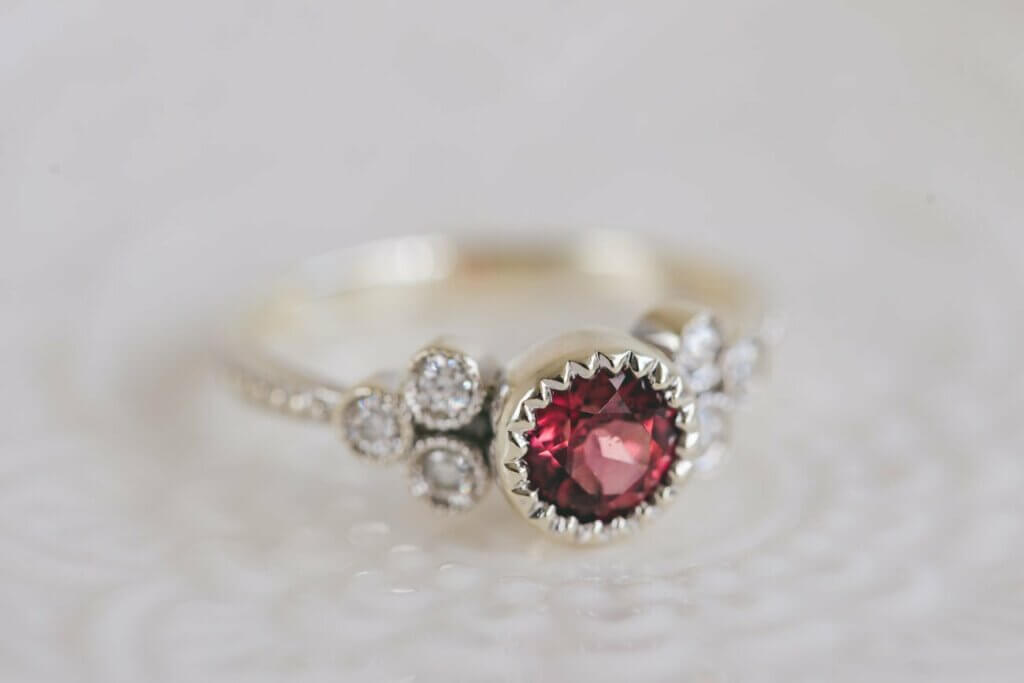
Groups of three stones can work in other shapes too as accents to a central stone – take a look at these examples for inspiration:
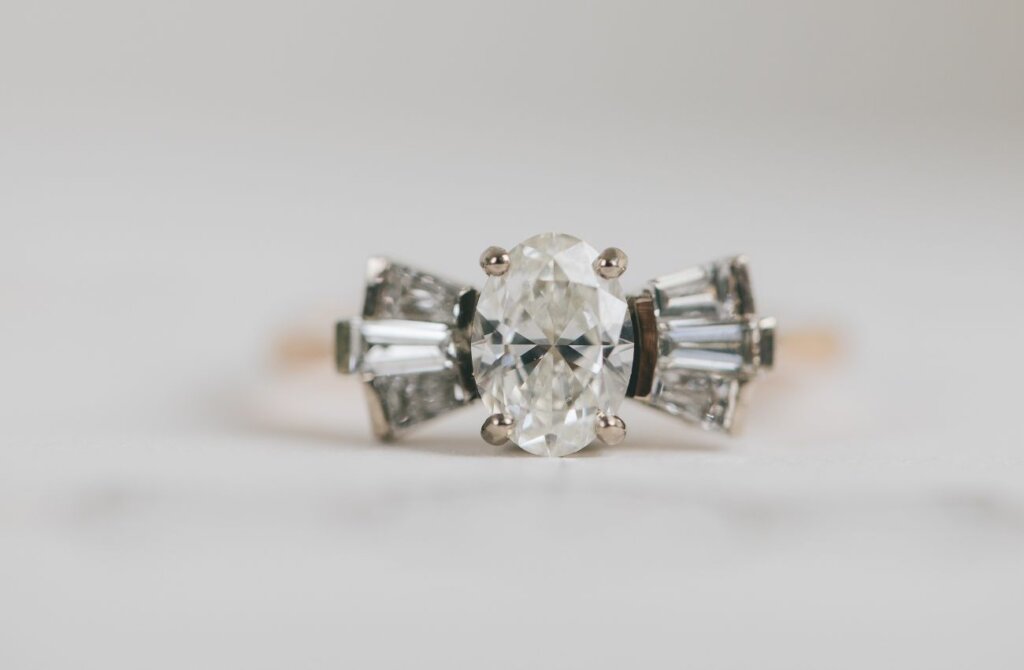
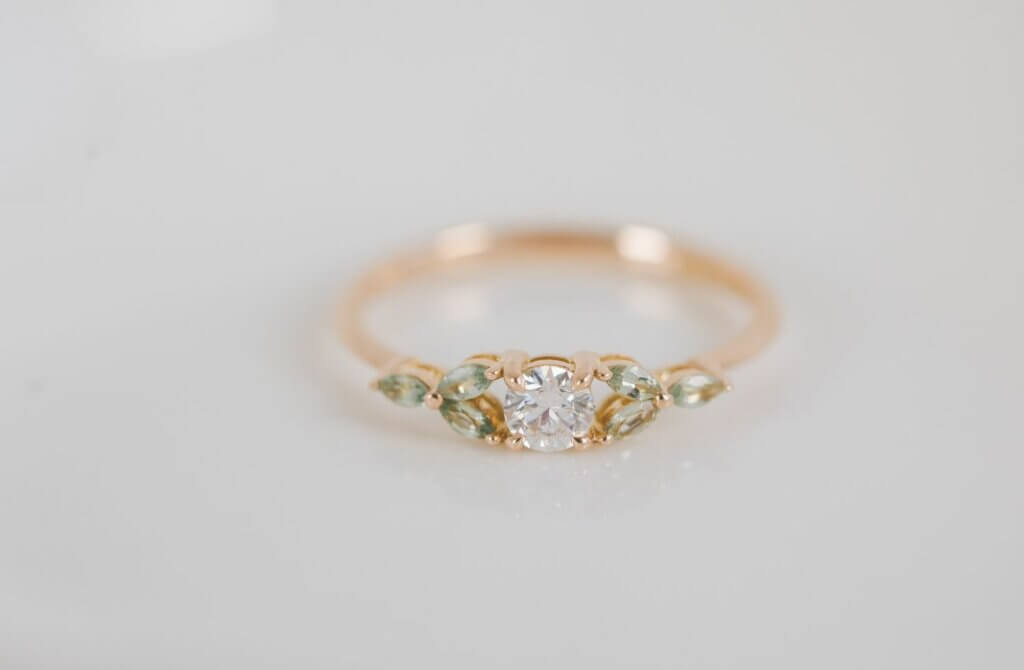
Shape of Ring
Once you have settled on a core design style for your ring, you can then think about other details to make it unique, such as the overall shape of the ring – does the classic symmetrical look work best for you, or are you more drawn to organic and asymmetric designs?
Symmetrical
Most engagement rings are symmetrical. If you like classic design and are drawn to design eras such as Art Deco or Classical, then a symmetrical design is most likely your favoured route.
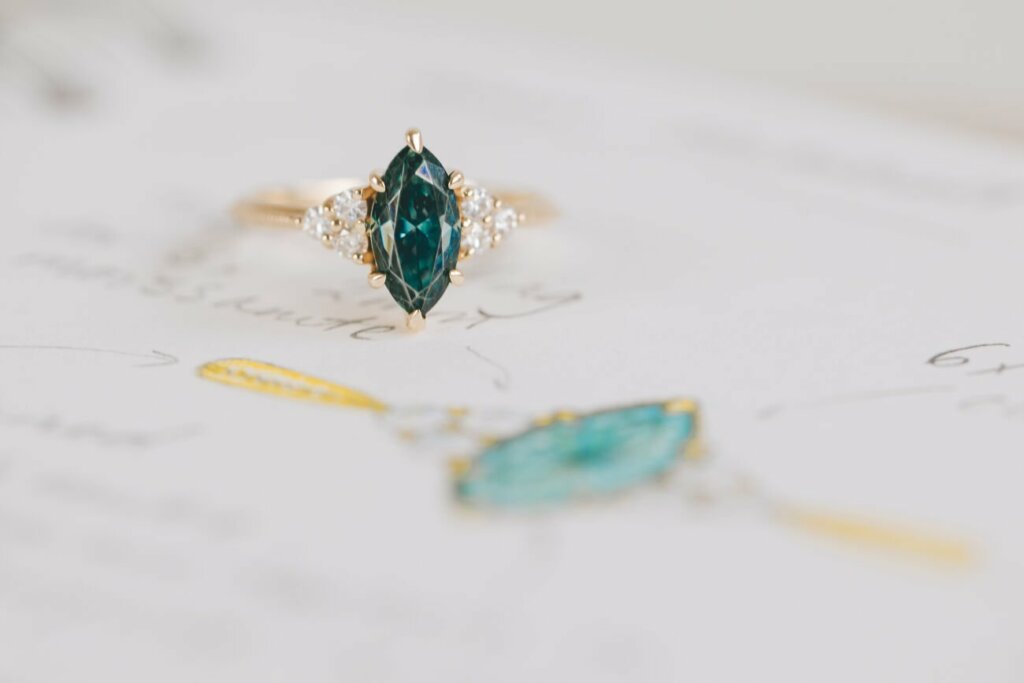
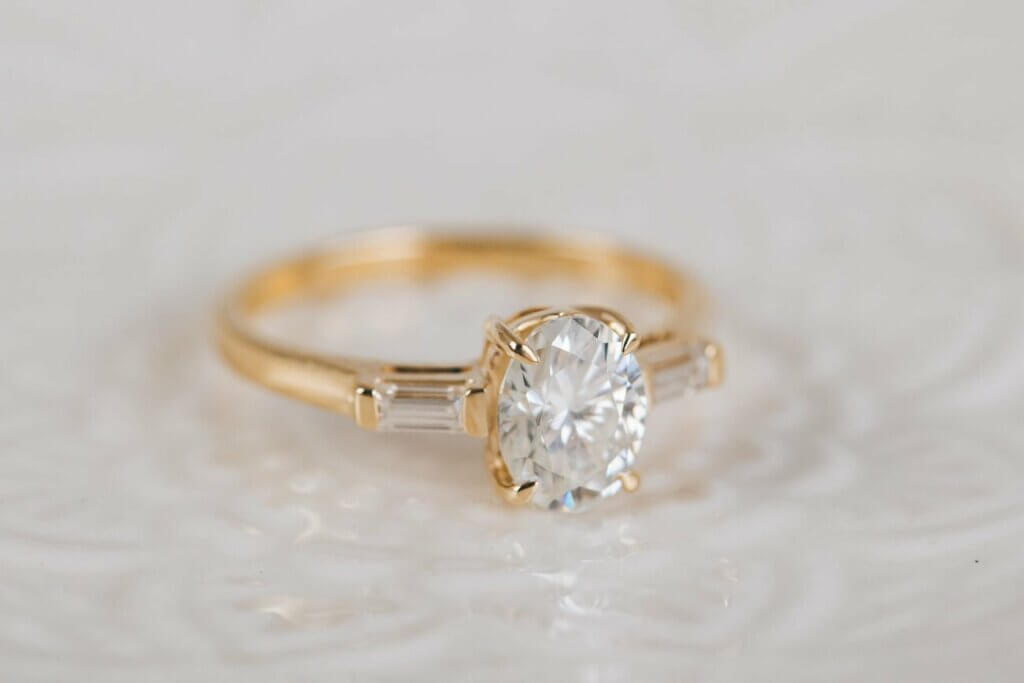
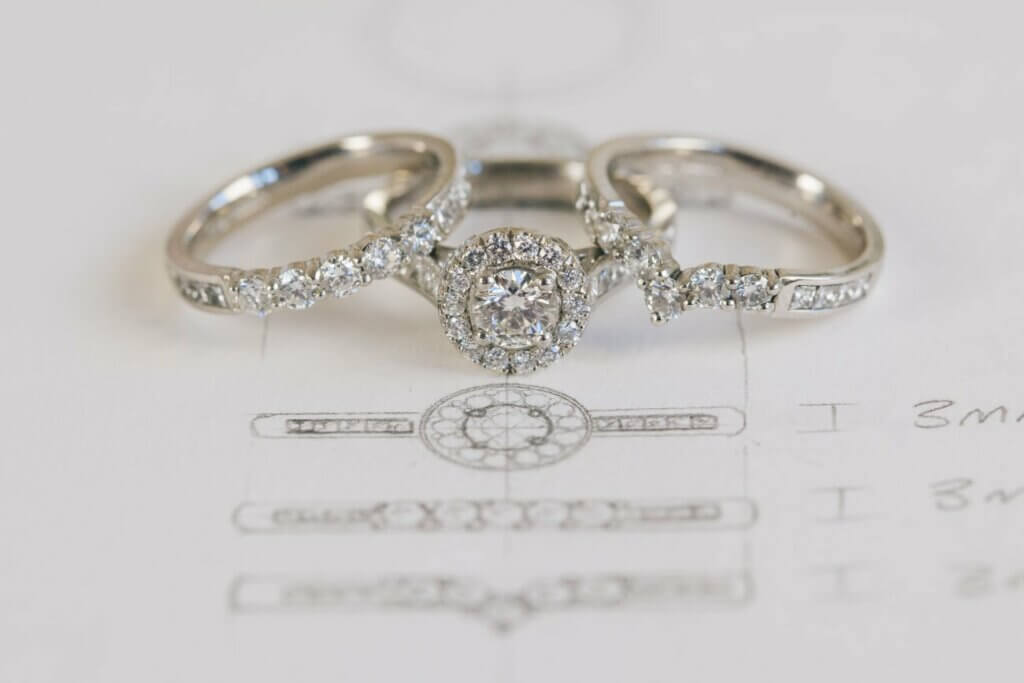
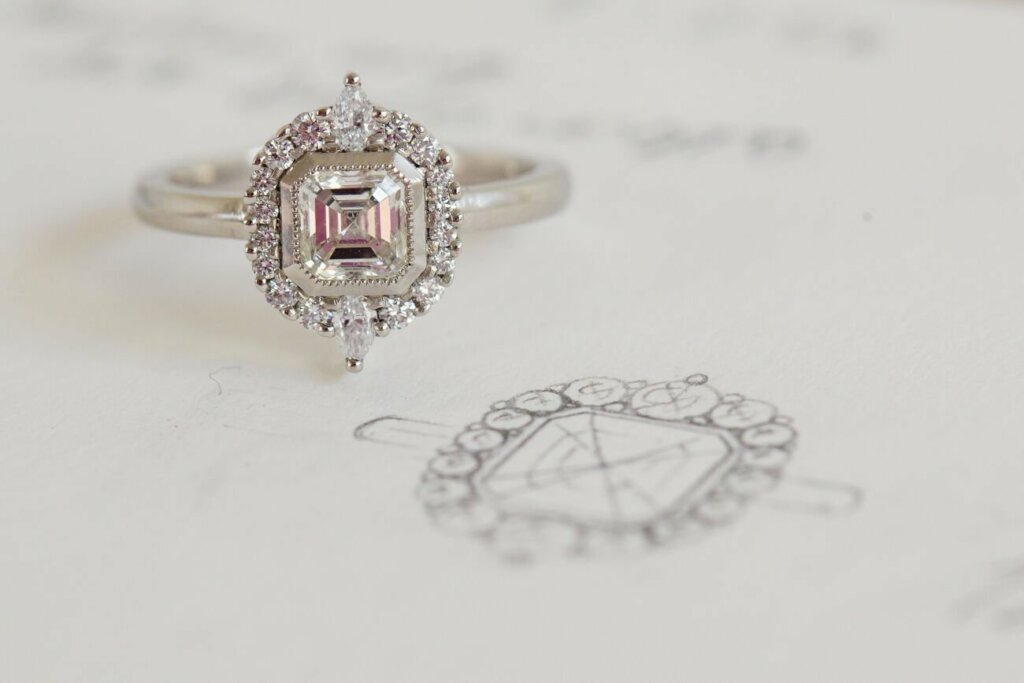
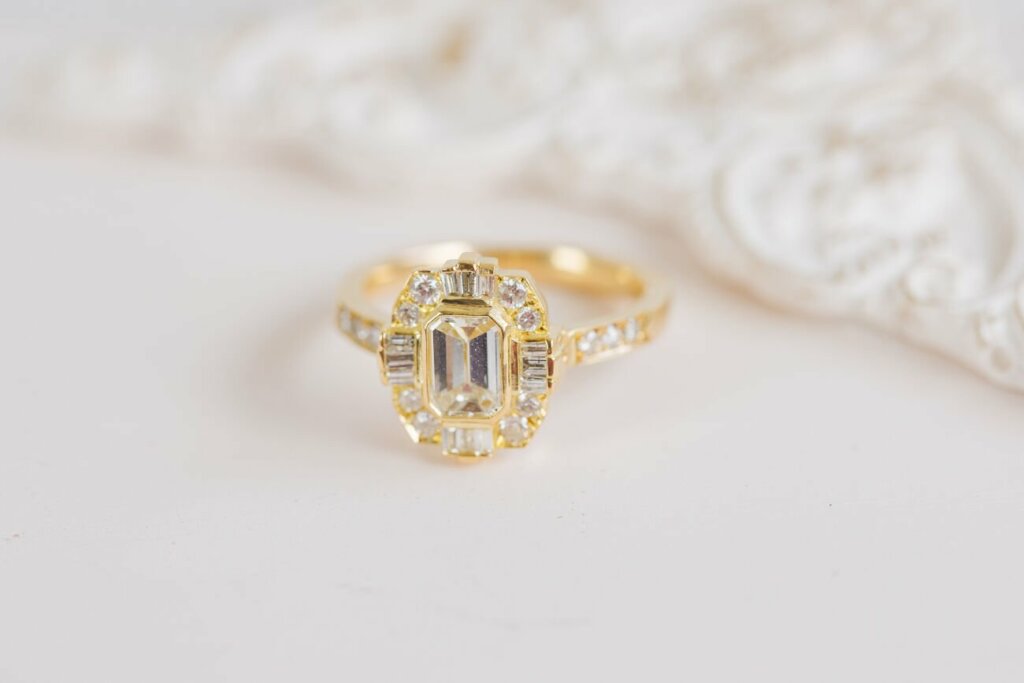
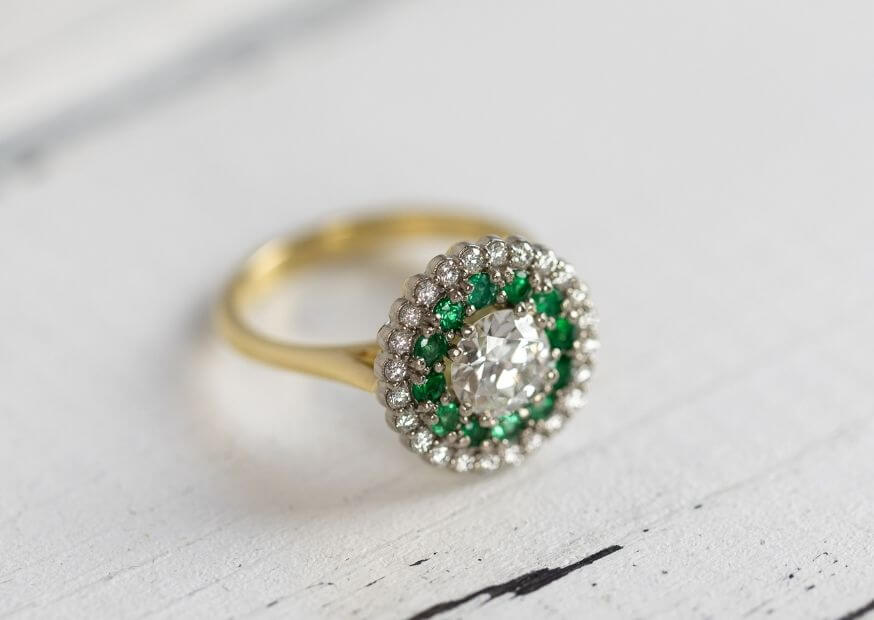
Asymmetric
If you are looking for something a bit different and out of the ordinary, you might like the ring to be less organised and structured and to have a more scattered and organic look.
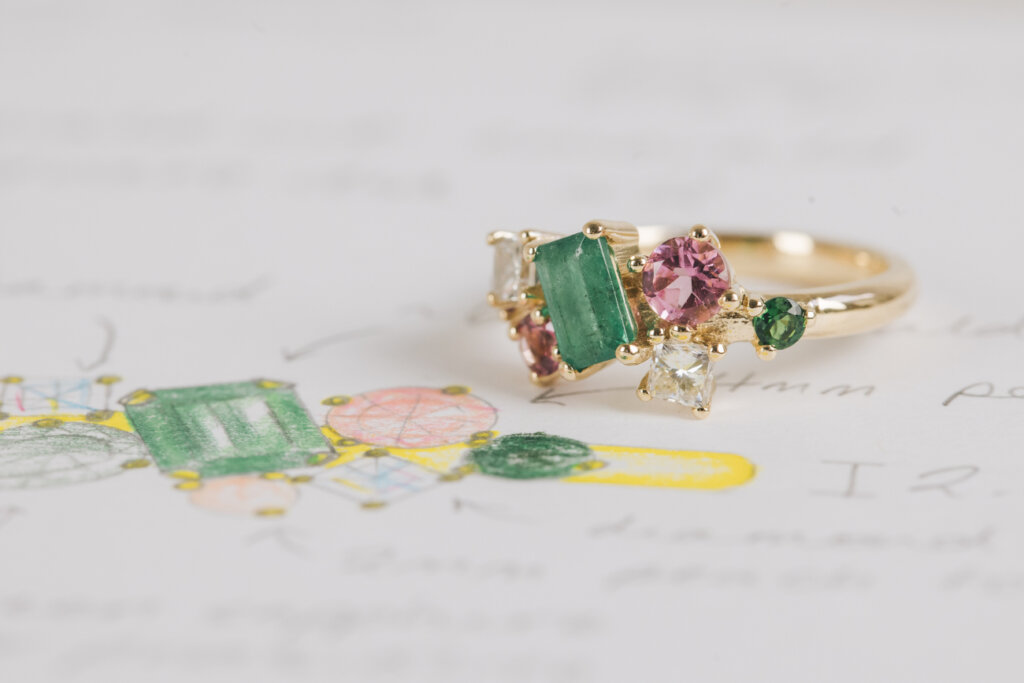
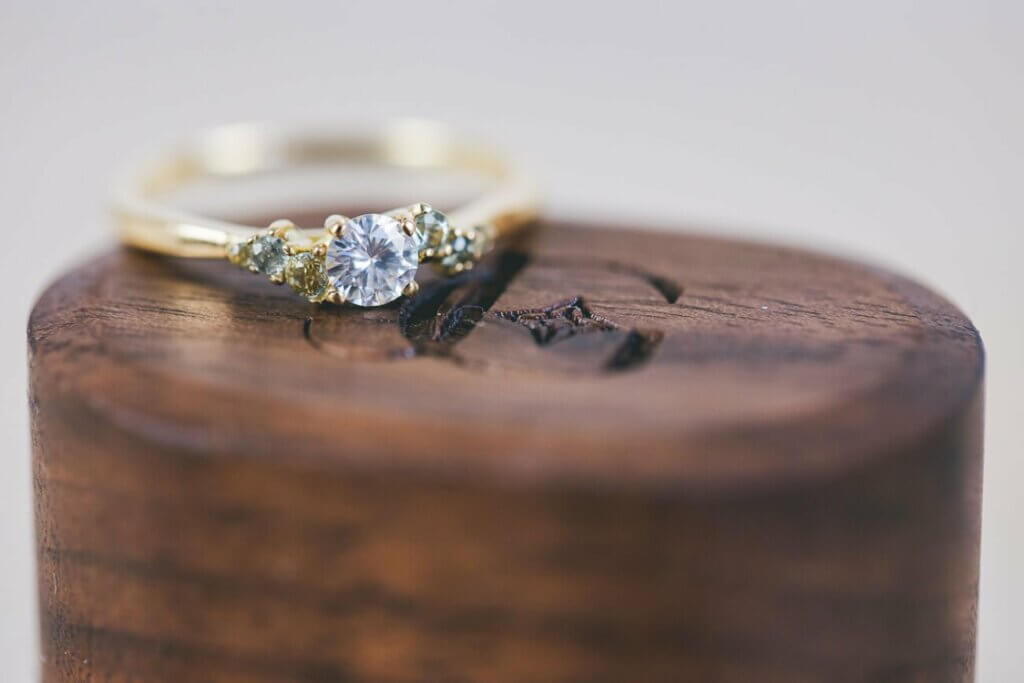
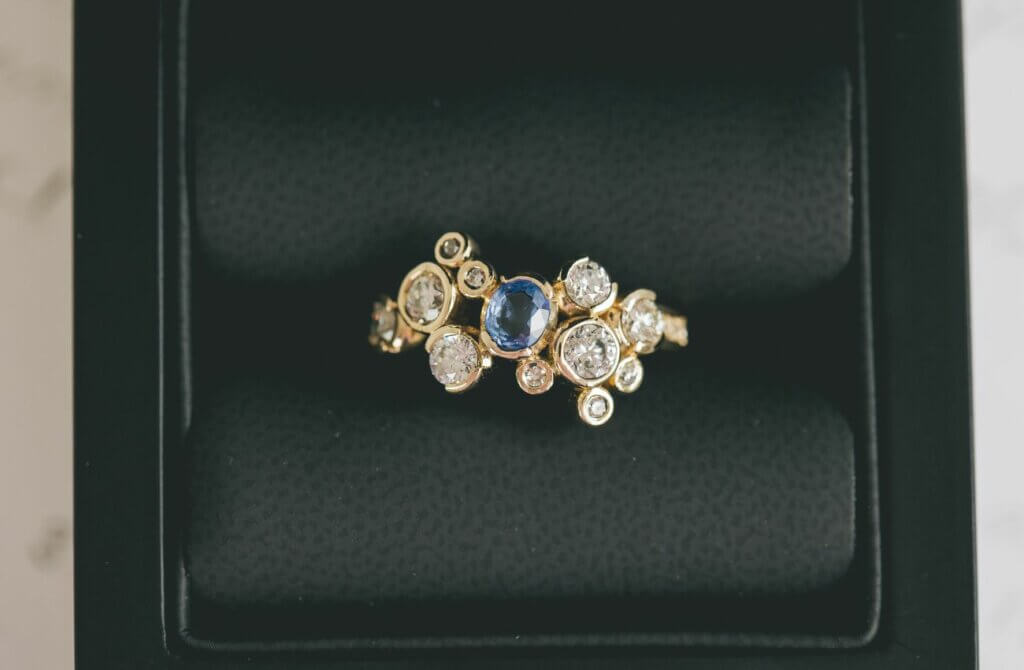
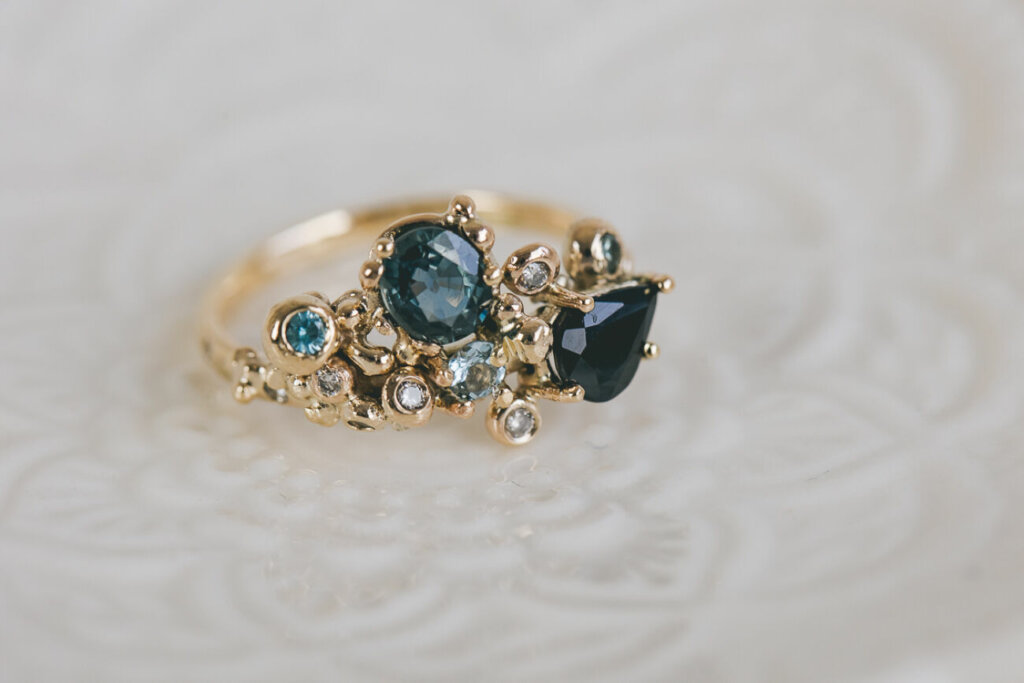
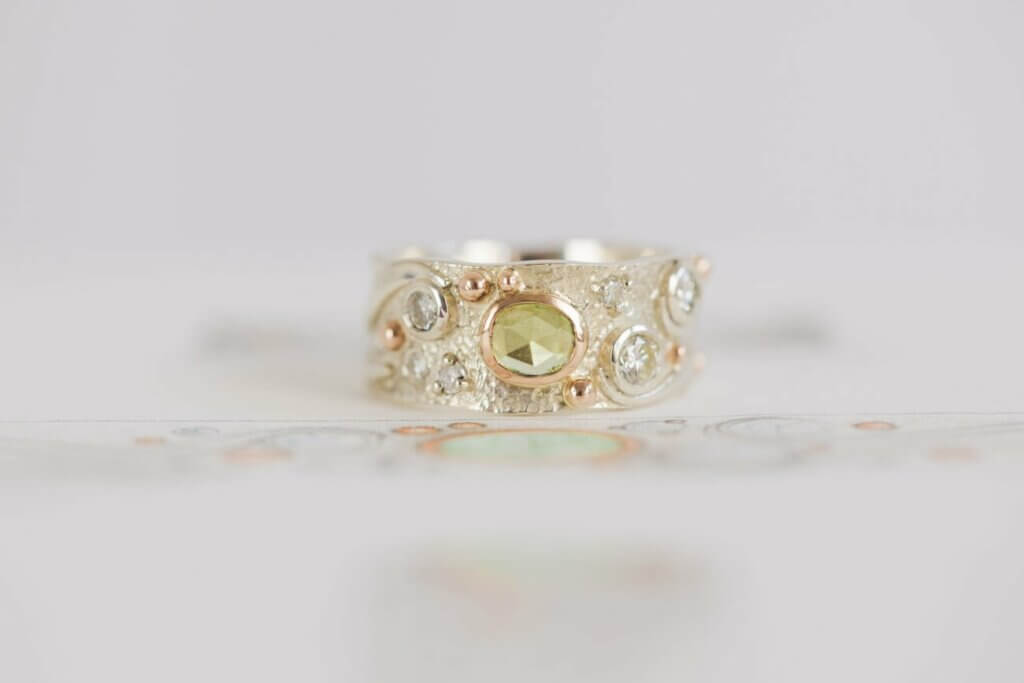
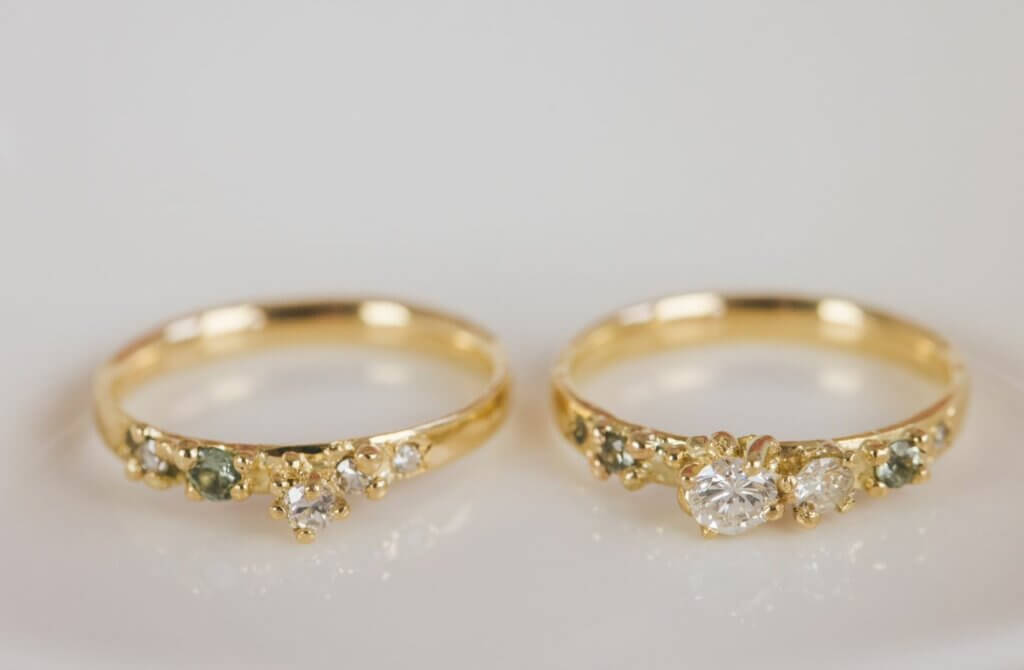
Wedding Ring Friendly/Wed-fit, or Low Profile
This needs to be one of your first decisions when selecting or designing an engagement ring, but it is often overlooked! You need to think ahead to the future wedding ring that will sit alongside the engagement ring – the rings will be a pair for far longer than the engagement ring will be alone on their finger, so this is a key consideration.
So many engagement rings available on the high street are low profile, which means that the setting for the stones goes down to the finger. This is great as it stops the settings from feeling very high and precarious, and much more wearable, but it does mean that in the future you will need a fitted wedding ring instead of a straight one. Bizarrely, the high street shops do not offer many options for fitted wedding rings, and therefore this can cause some buyers remorse, or damage caused between the two rings over time. Find out more about this and the different shaped wedding ring options here.
Wedding Ring Friendly, or Wed-Fit
This means that the engagement ring can sit next to a straight, unshaped wedding band. The settings are mounted on top of the band, leaving room underneath for an unshaped wedding band to slot underneath. This makes future wedding ring shopping very straight forward, but it does make the stones sit up high.
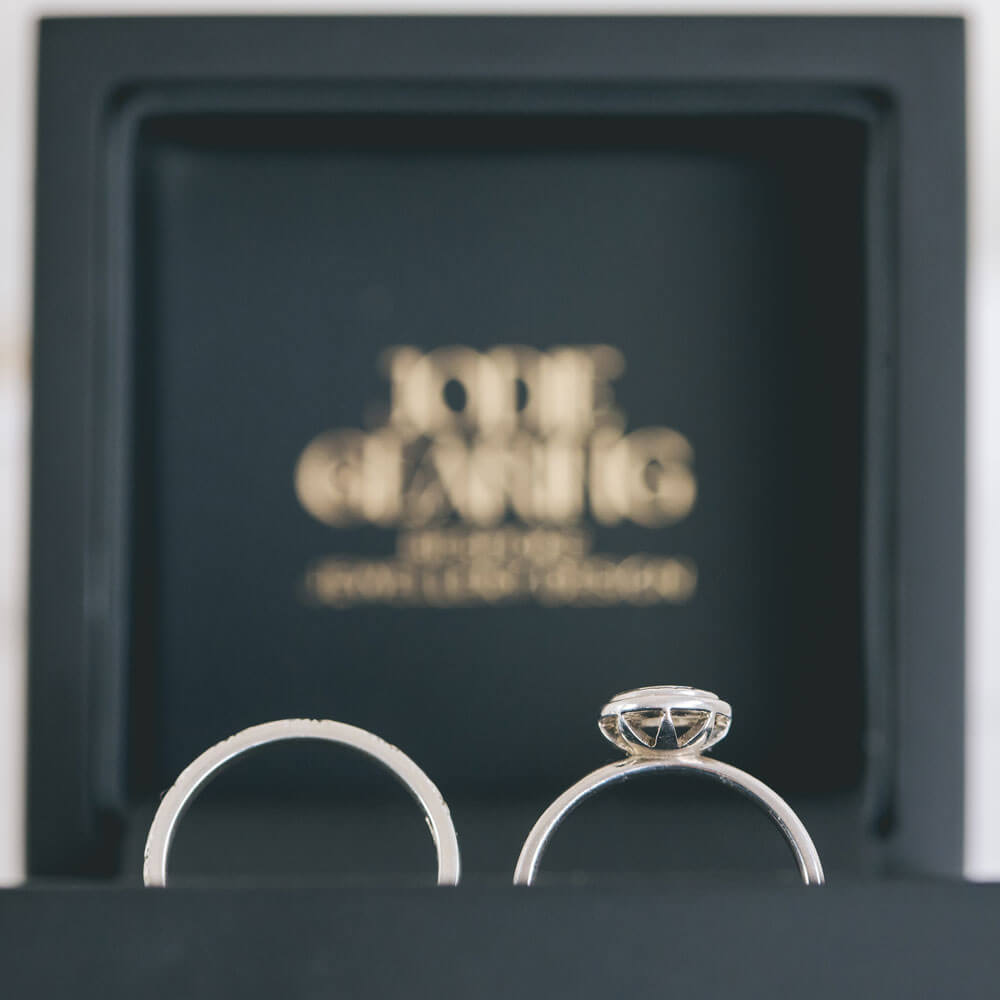
Low Profile
If you have a hands on lifestyle, I would recommend opting for a low profile setting and having a shaped wedding ring in the future. The setting is as low as possible, which makes the ring very wearable, but this means that the settings will usually protrude further than the width of the band, making a straight band unfeasible. Lots of people prefer this style for its ease of wear, and often love the look of a fitted wedding ring that snuggles up against their engagement ring.
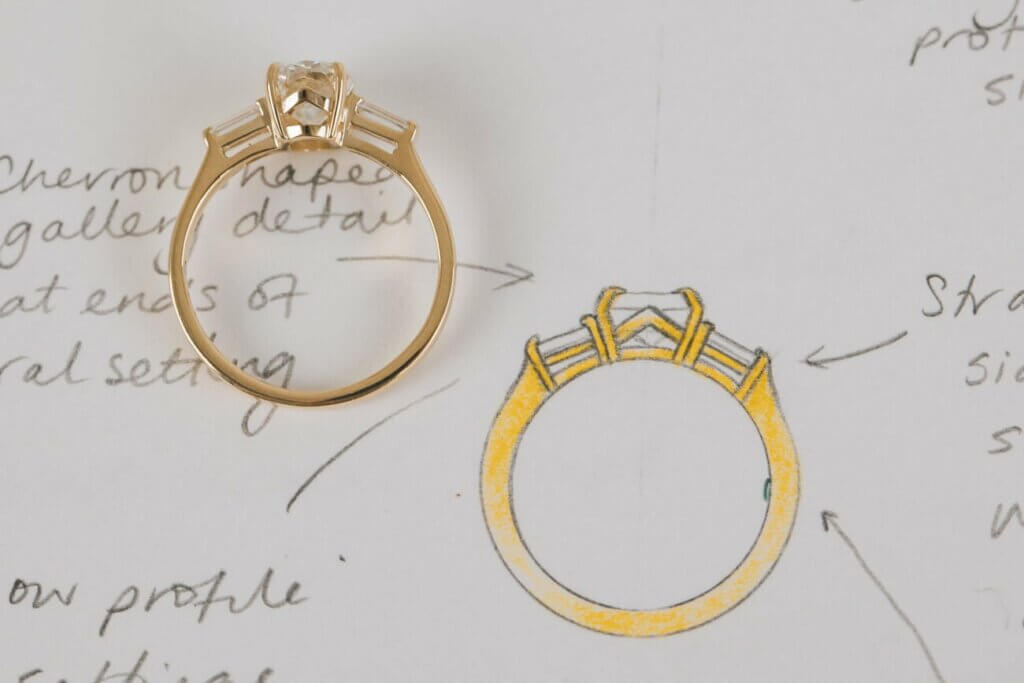
Off-set
Another option that is seen less often is the offset style. Offset engagement rings allow a longer cut central stone to be low profile, but still sit next to a straight wedding band. This style often lends itself to Art Deco or very organic designs.
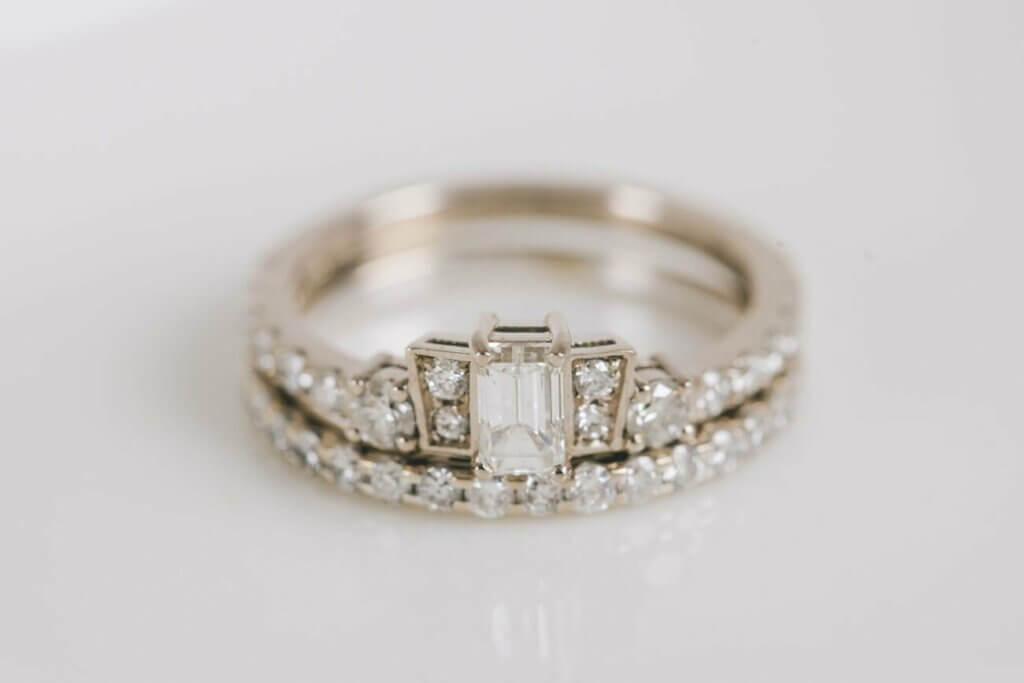
Shoulders
Very often, the shoulders of the ring can be an area where you can insert some personality, more sparkle, or something that makes it unique. Here is a a run down of some of the options for the shoulder shapes and styles that might inspire your own design.
Straight
Straight, symmetrical shoulders are the classic choice for an engagement ring. They can be plain, stone set or engraved, but let the centre stone do all the talking.
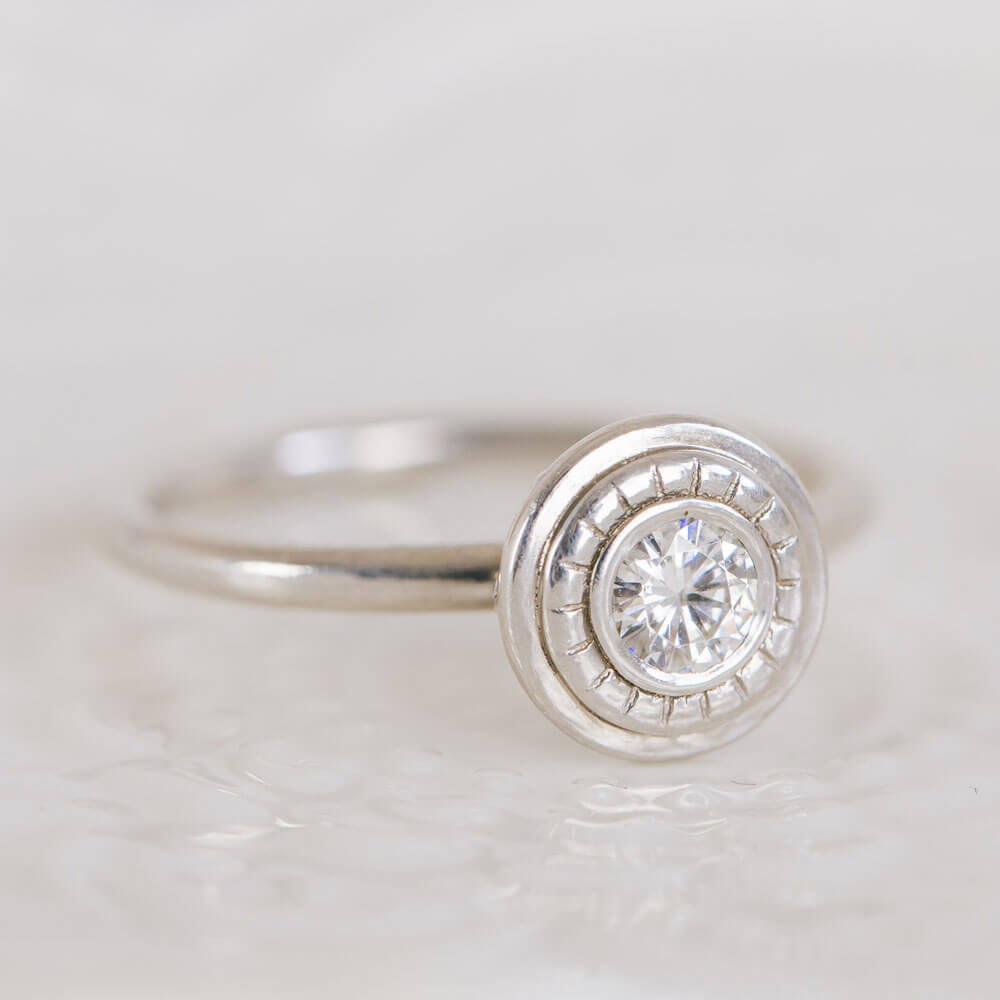
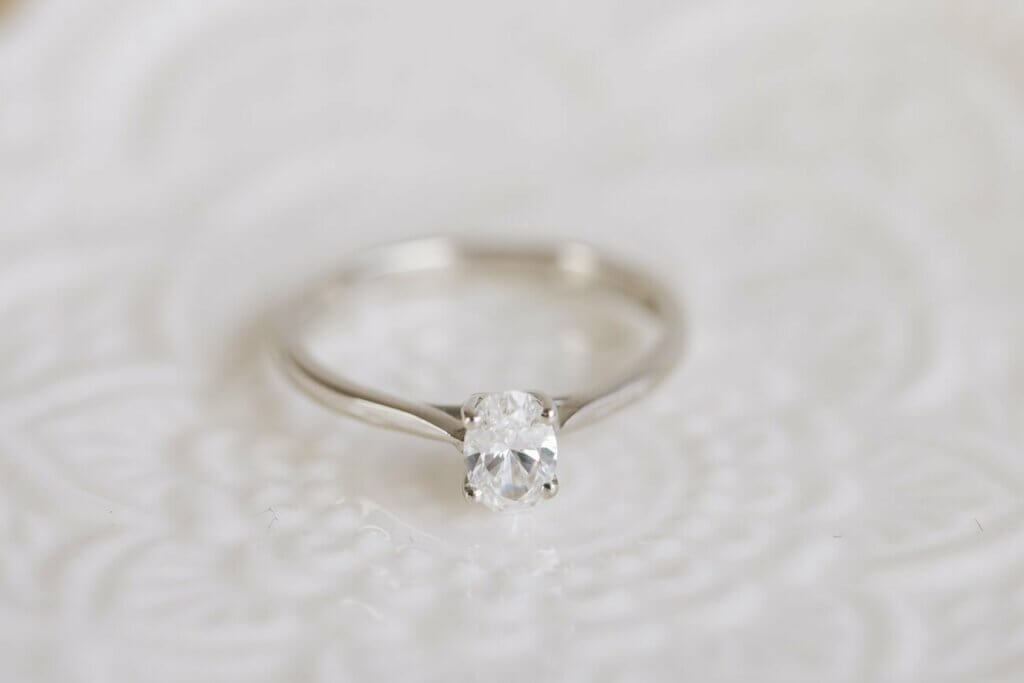
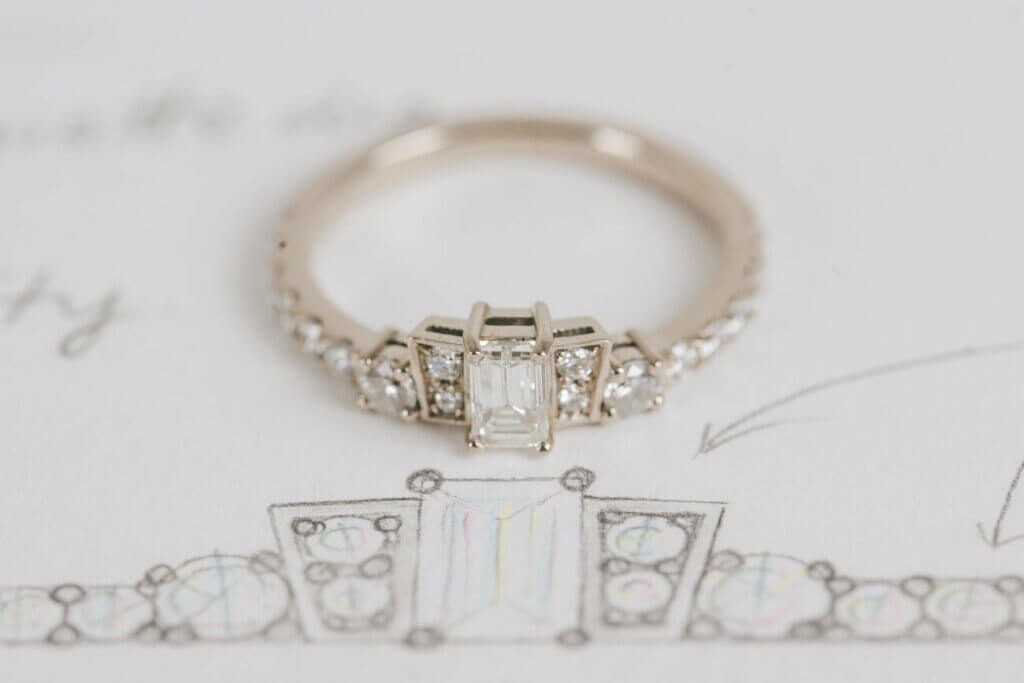


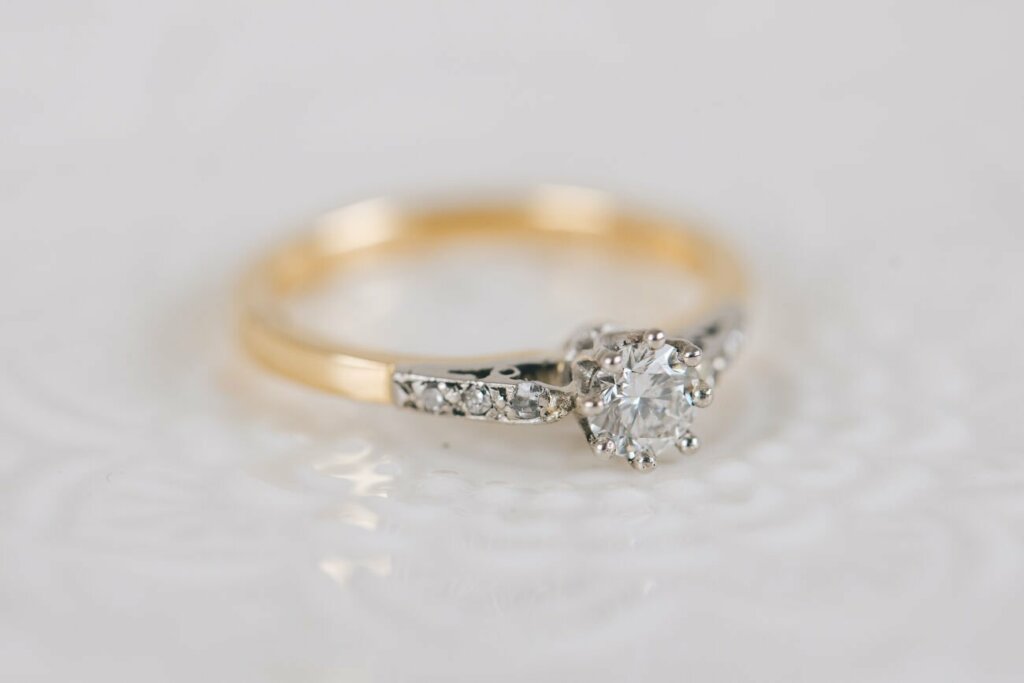
Twist
Shoulders that twist around the central design of a ring adds drama and movement to a design. These rings look fantastic on long fingers and create an organic flow around the central stone. The twist can be rotationally symmetrical or asymmetric – whatever works best for the design.
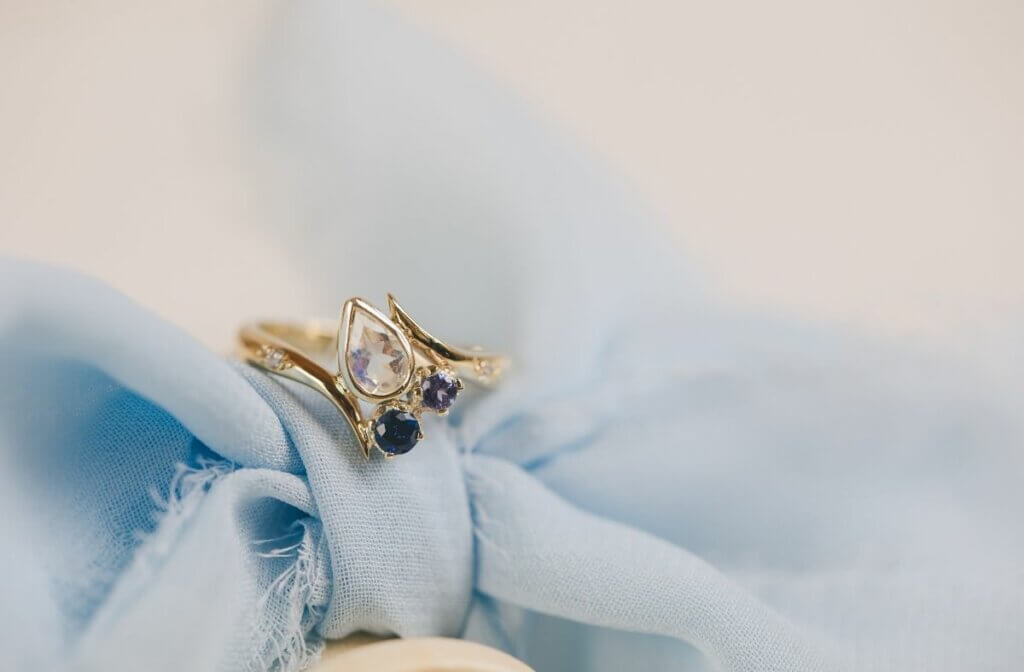
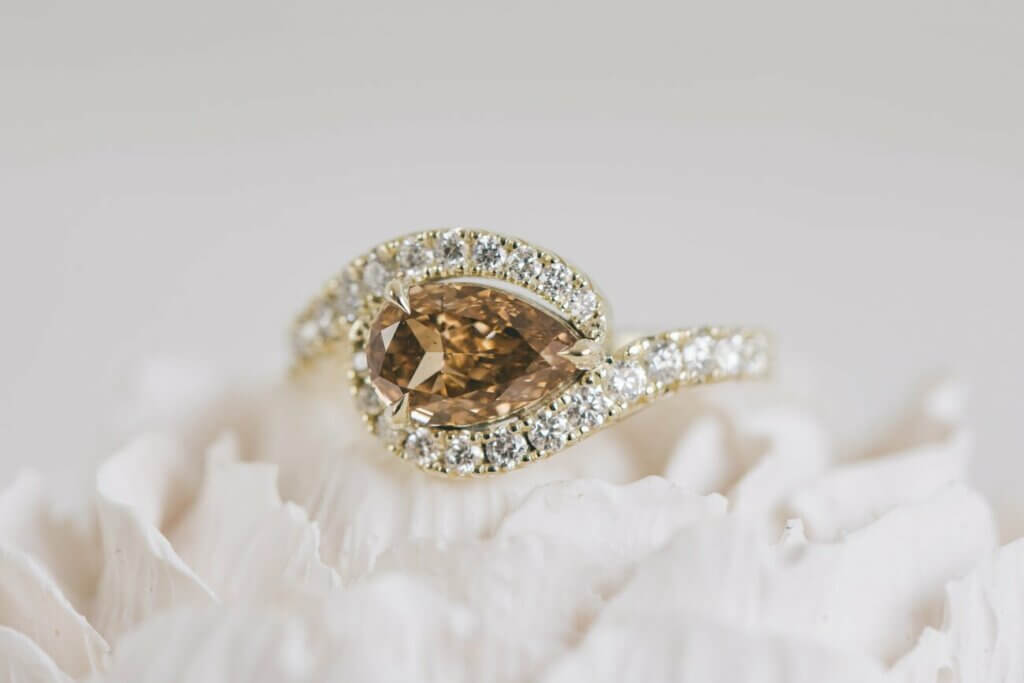
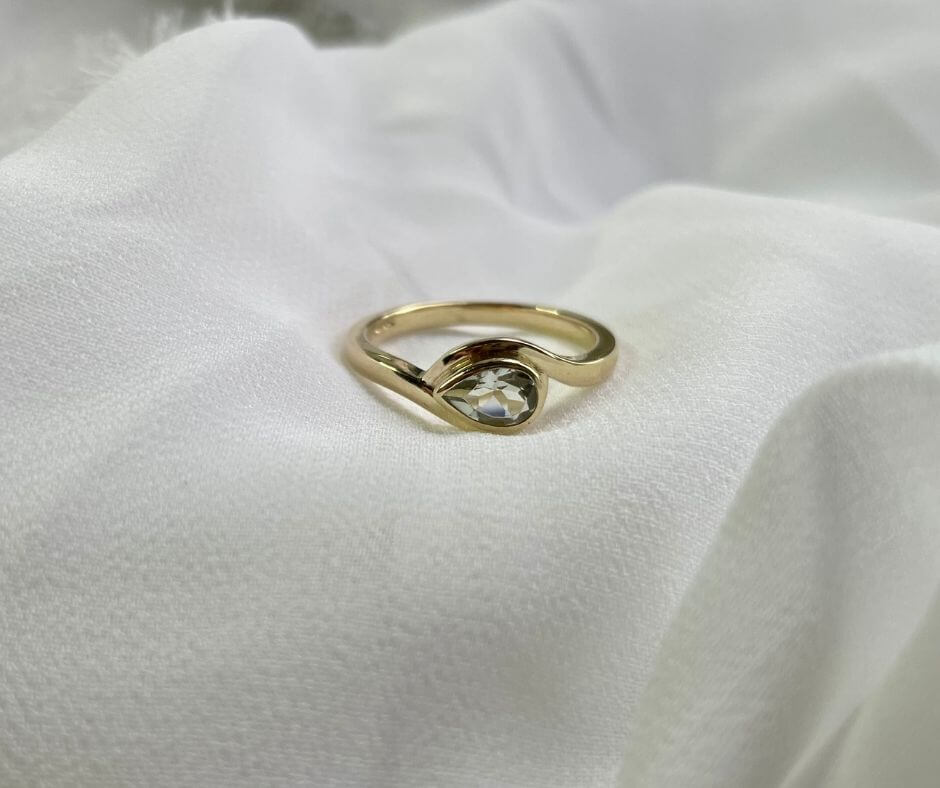
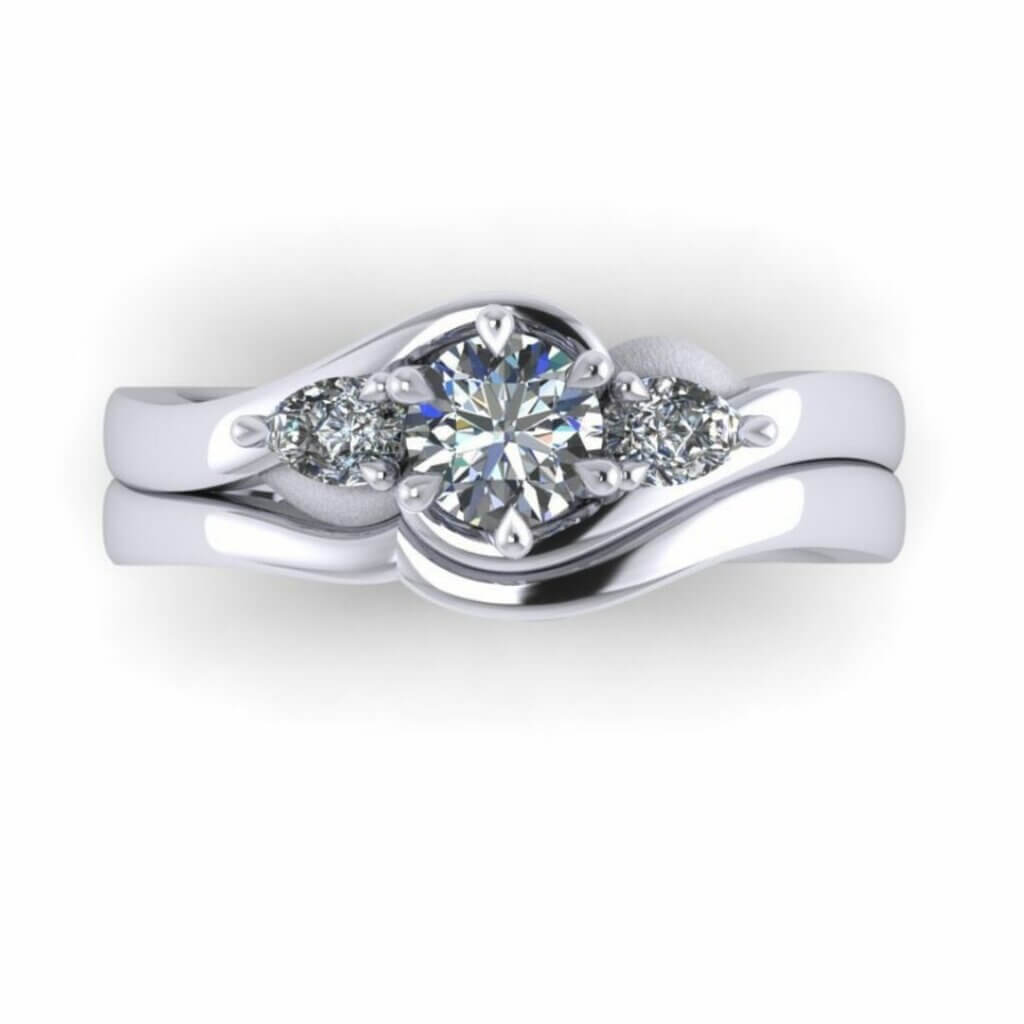
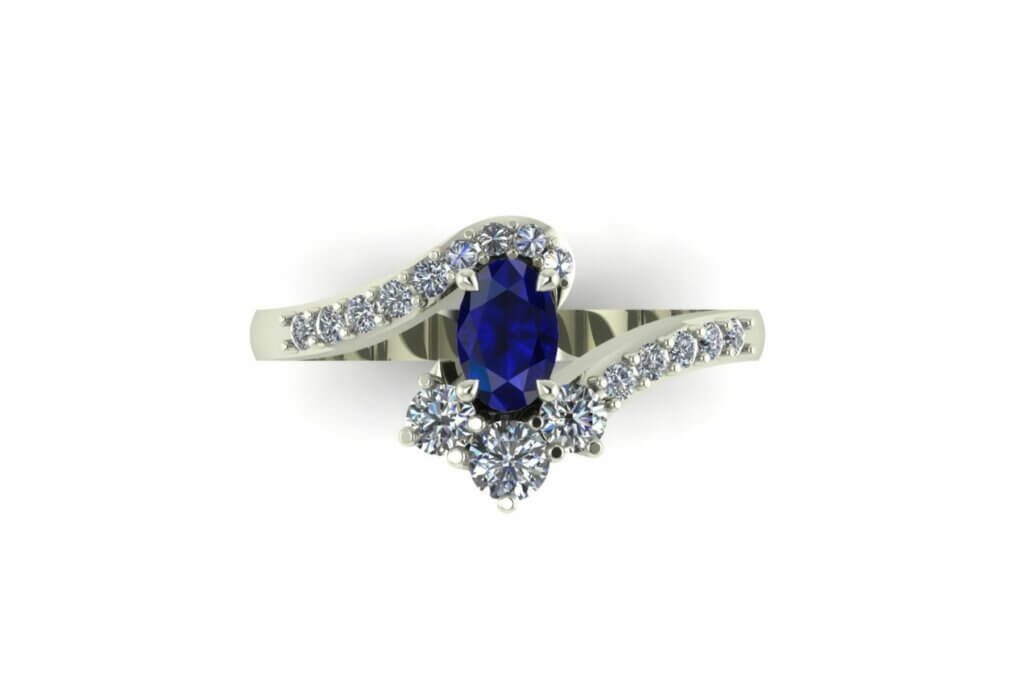
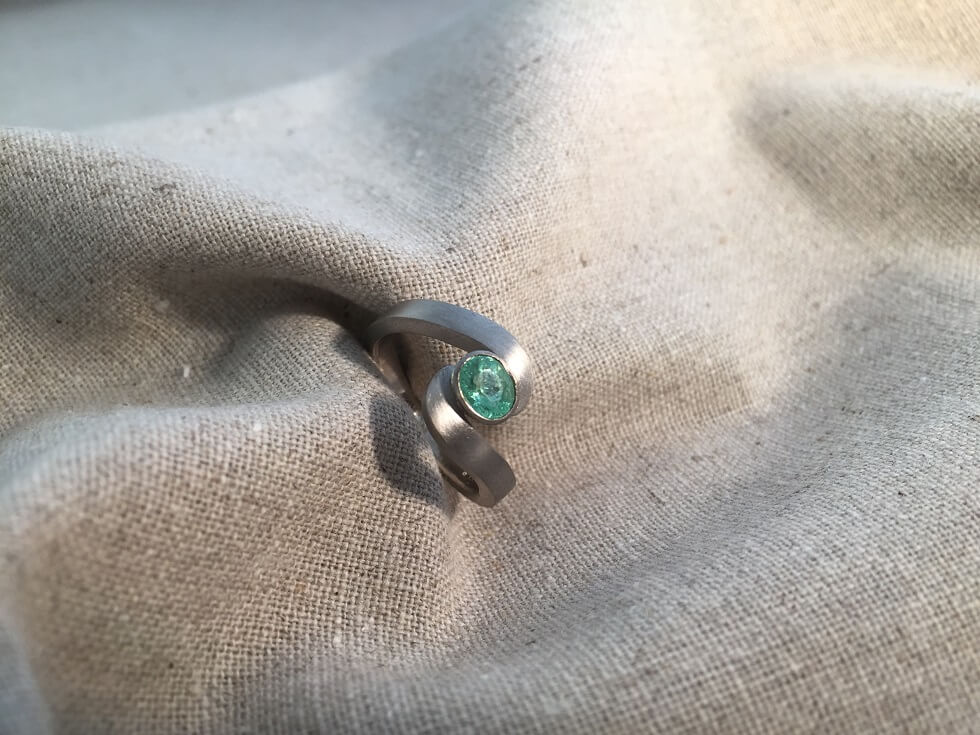
Split Shoulders
Split shoulders can add a look of delicacy to a design. A lot of popular engagement ring designs taper down towards the stone, so to achieve a slightly more unique style, consider split shoulders that instead widen towards the central stone.
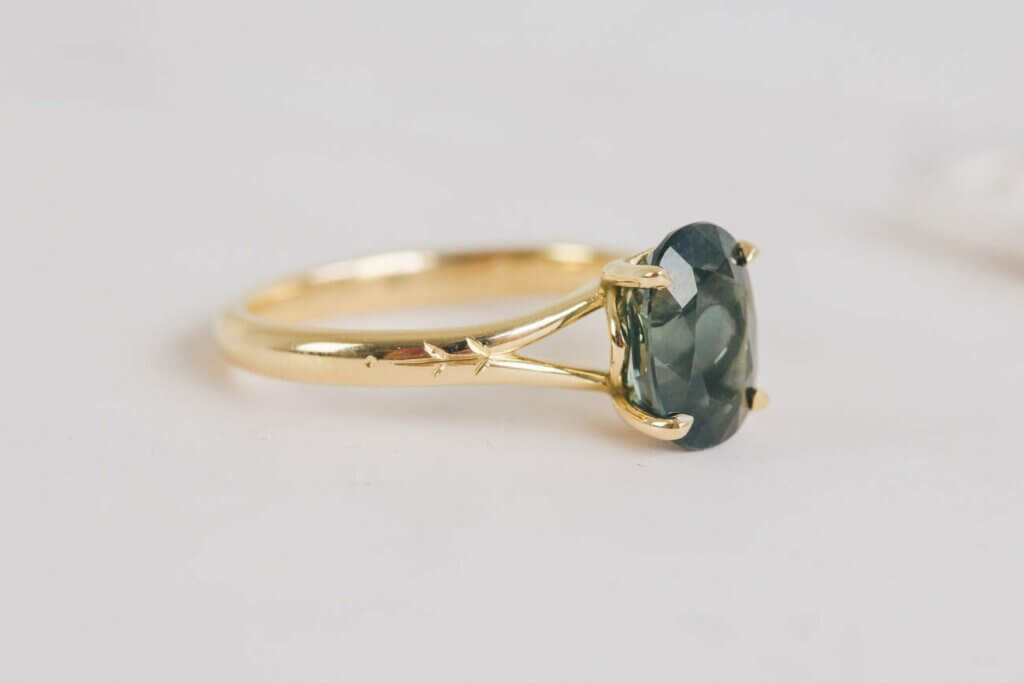

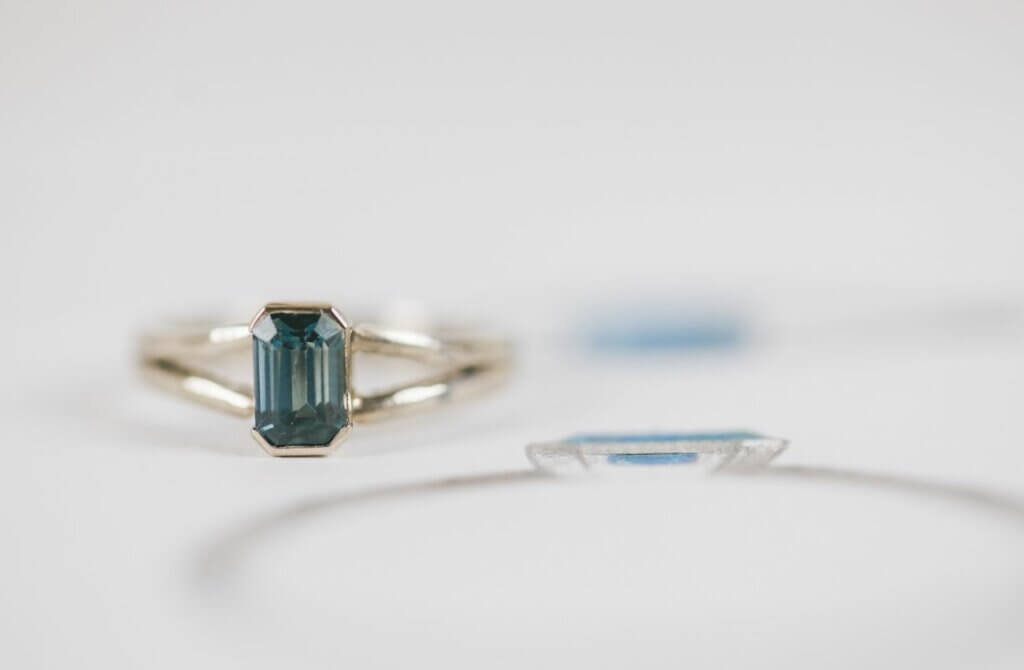
Split shoulders can have a Celtic feel with knot work or infinity loop shapes like these two designs below.
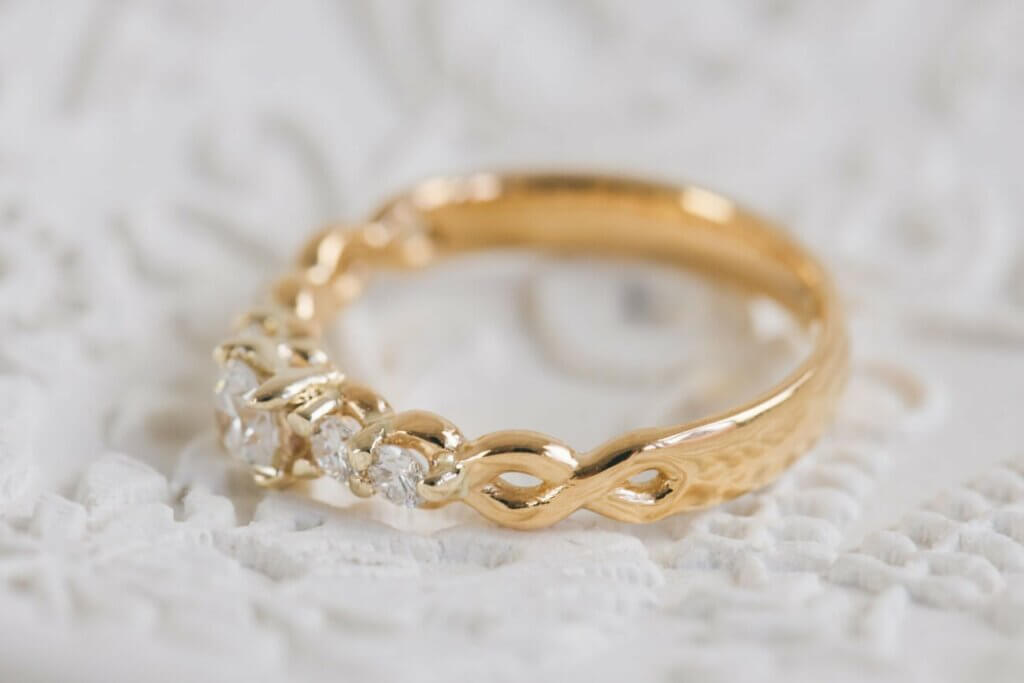
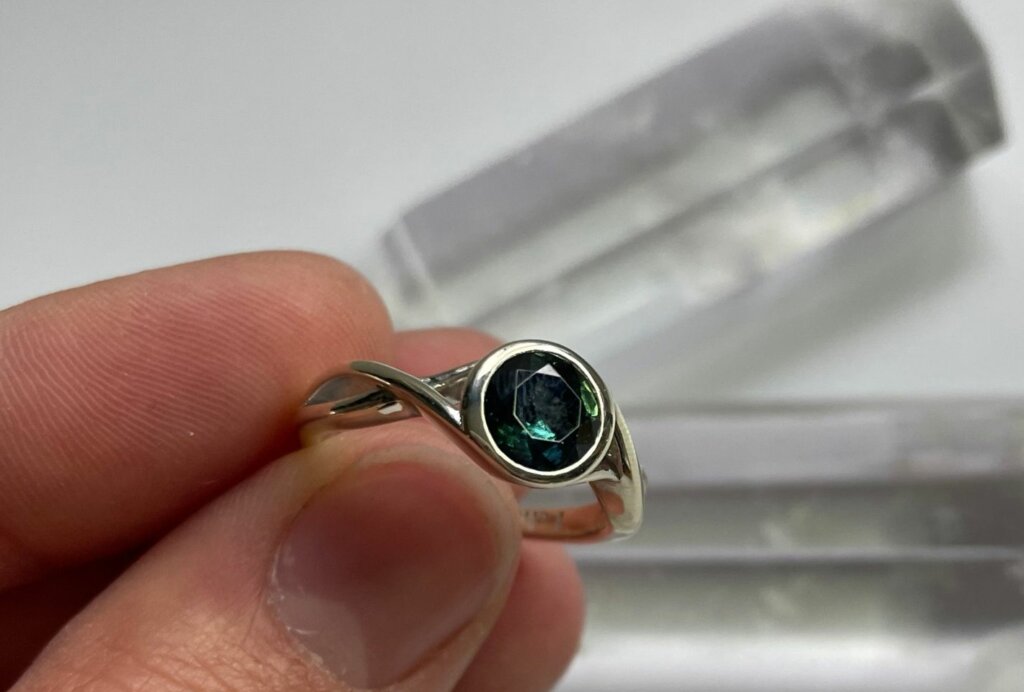
Stone Set
The shoulders are a great space to add additional stones, whether they are sparkly diamonds, or a space to add in some colour to the design. Stone set shoulders have gemstones set into the shoulders rather than the stones being in individual settings. There could be many stones, or just one each side. They can be set invisibly, channel set, or grain or pavé set.
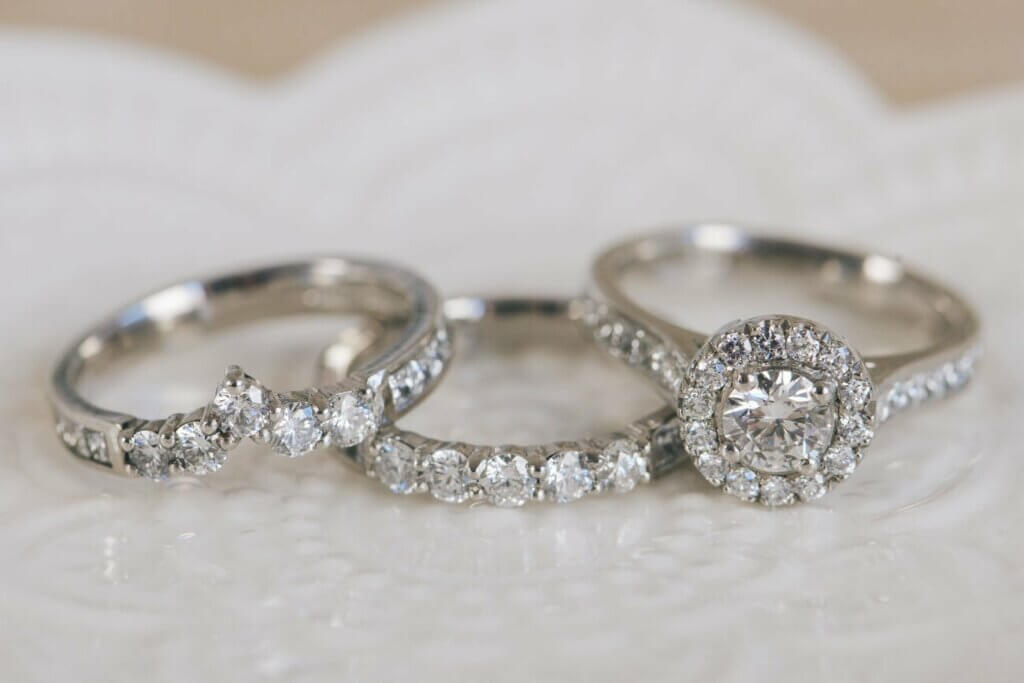
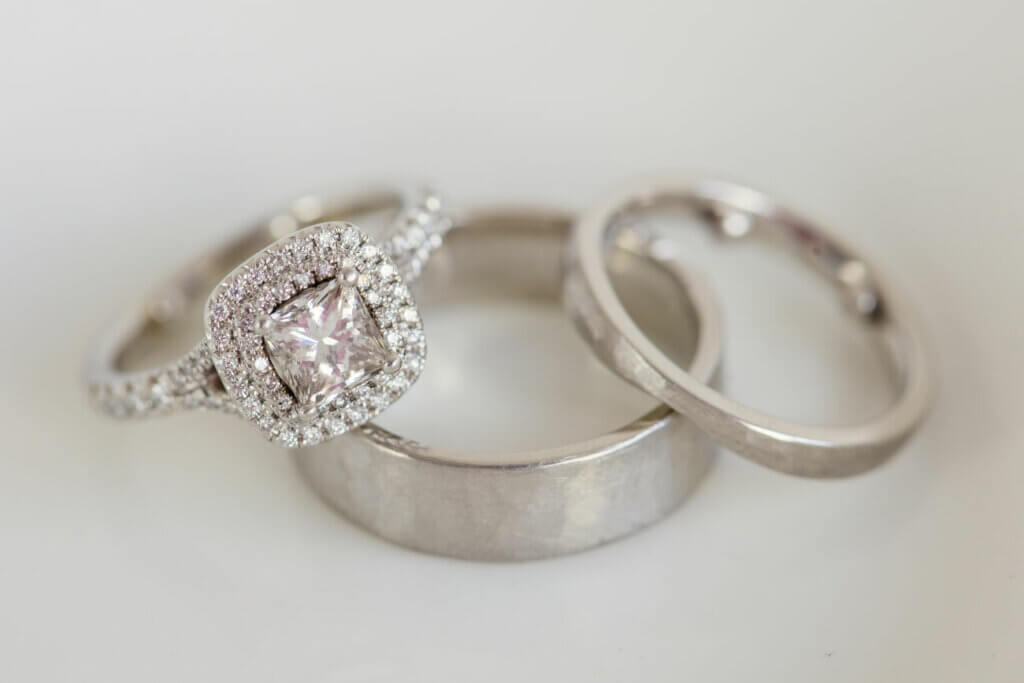
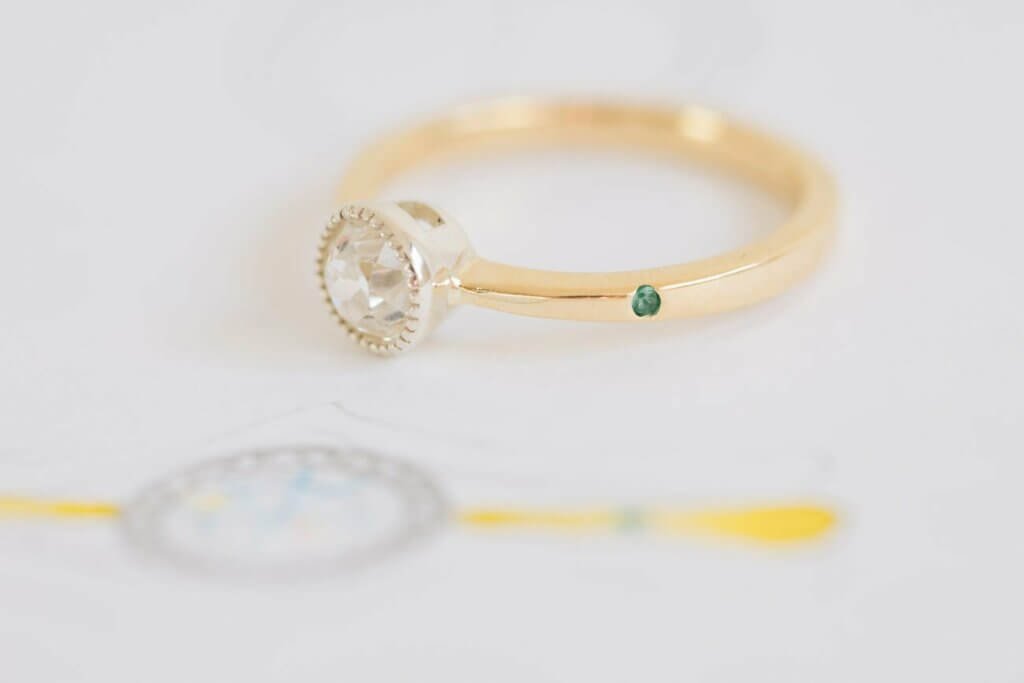
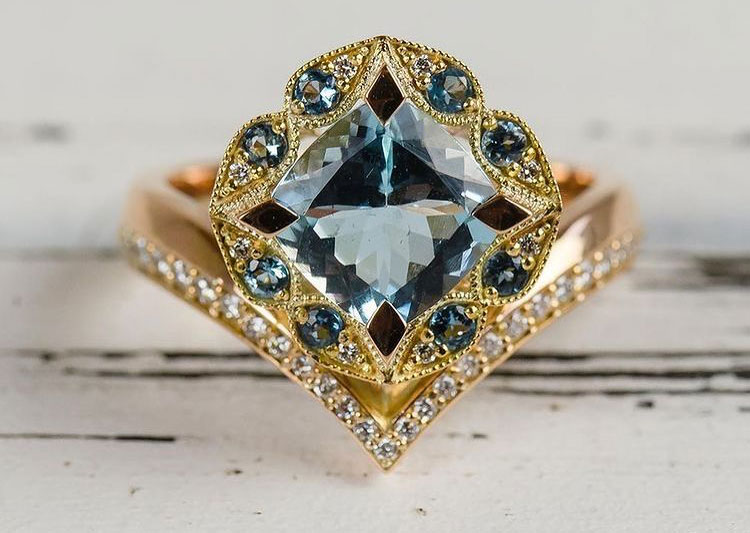
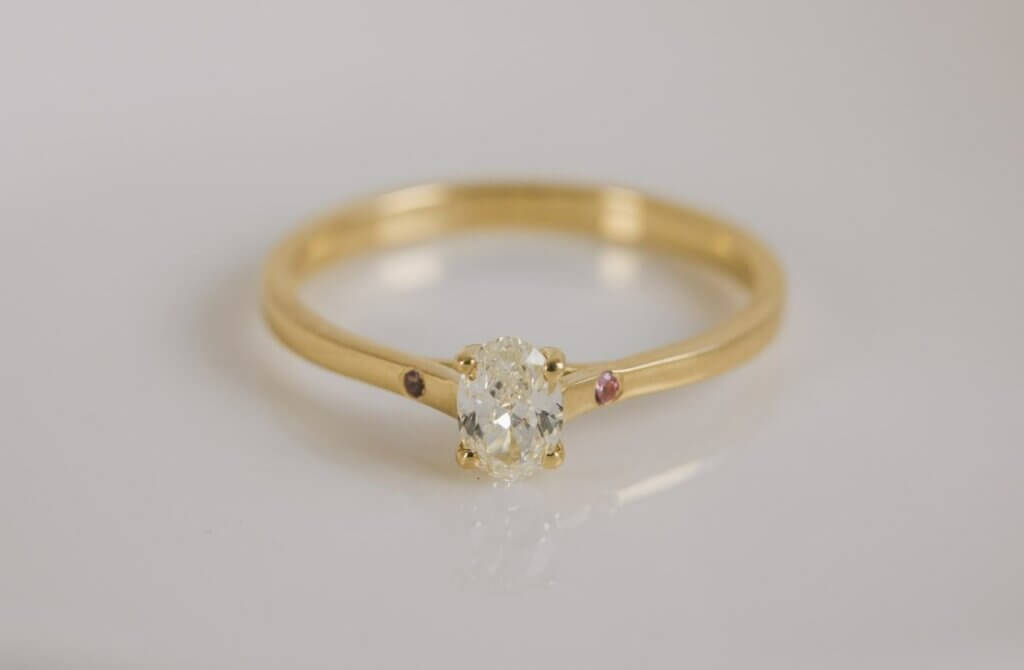
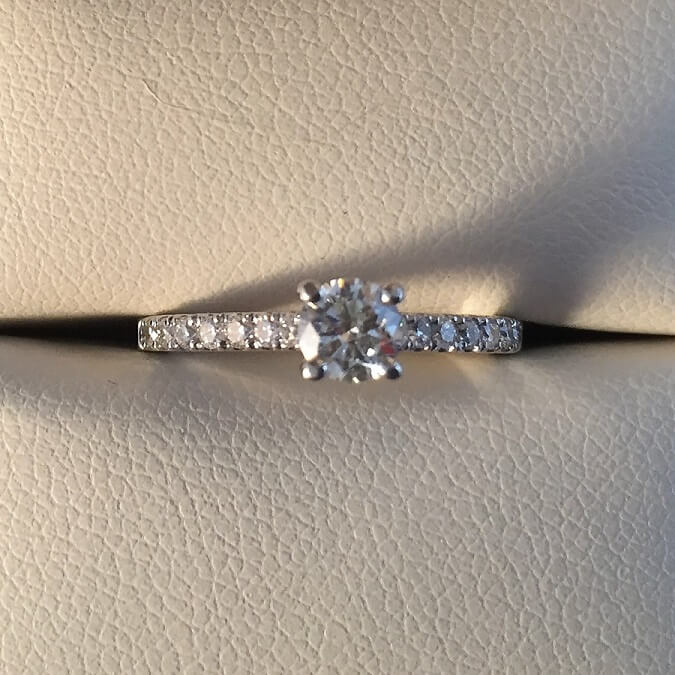
Engraved Shoulders
Texture and detail doesn’t always have to come in the form of gemstones – hand engraving could be the perfect detail for your unique engagement ring.
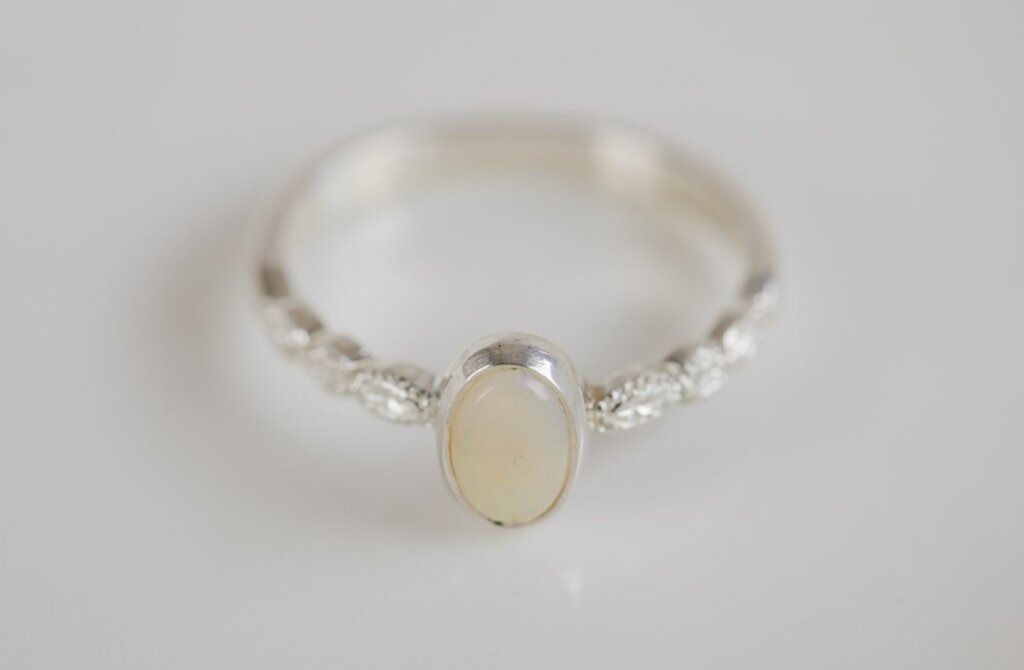
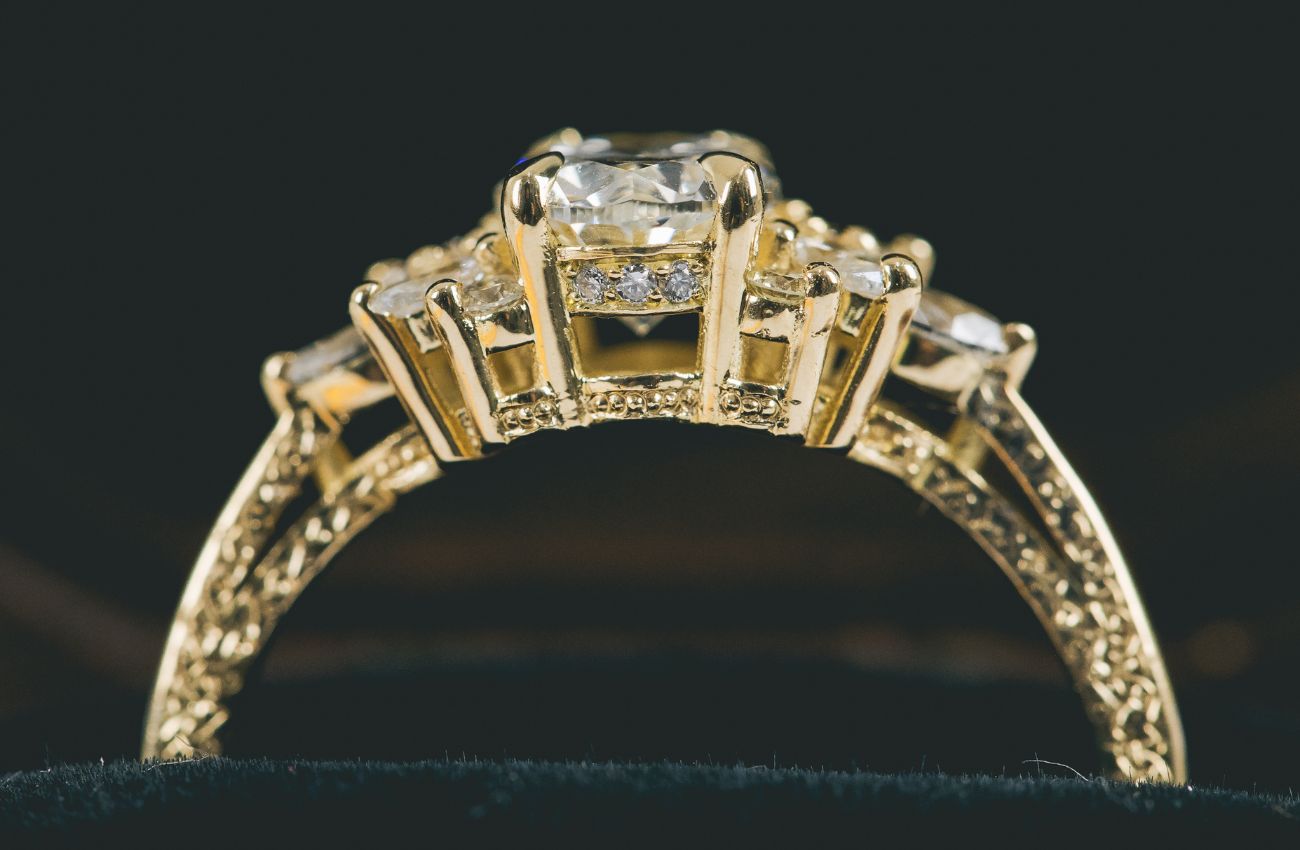
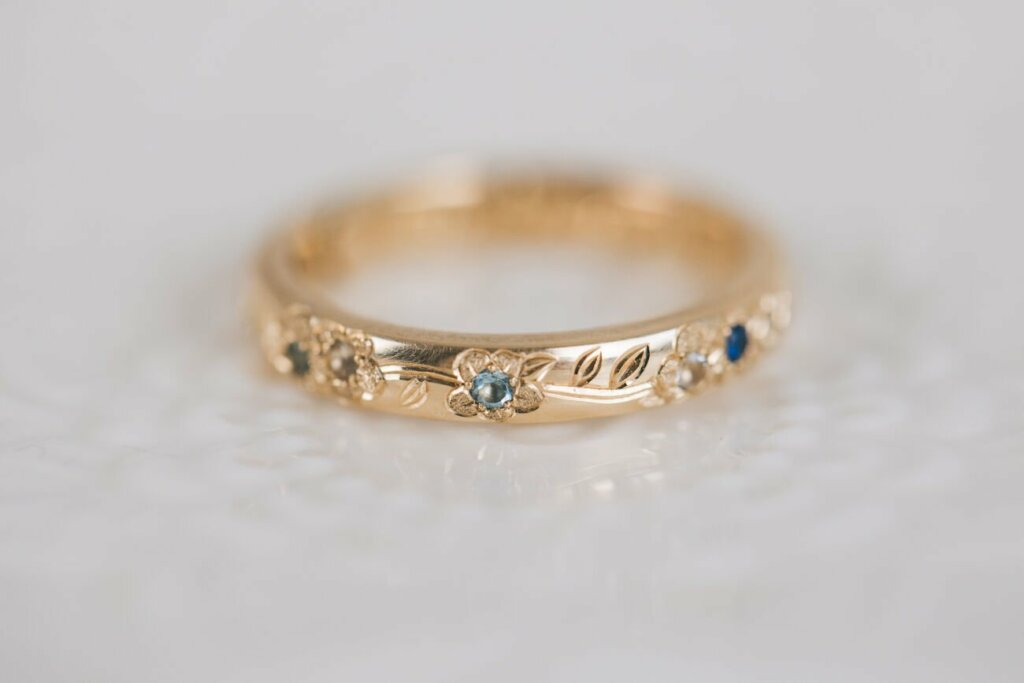
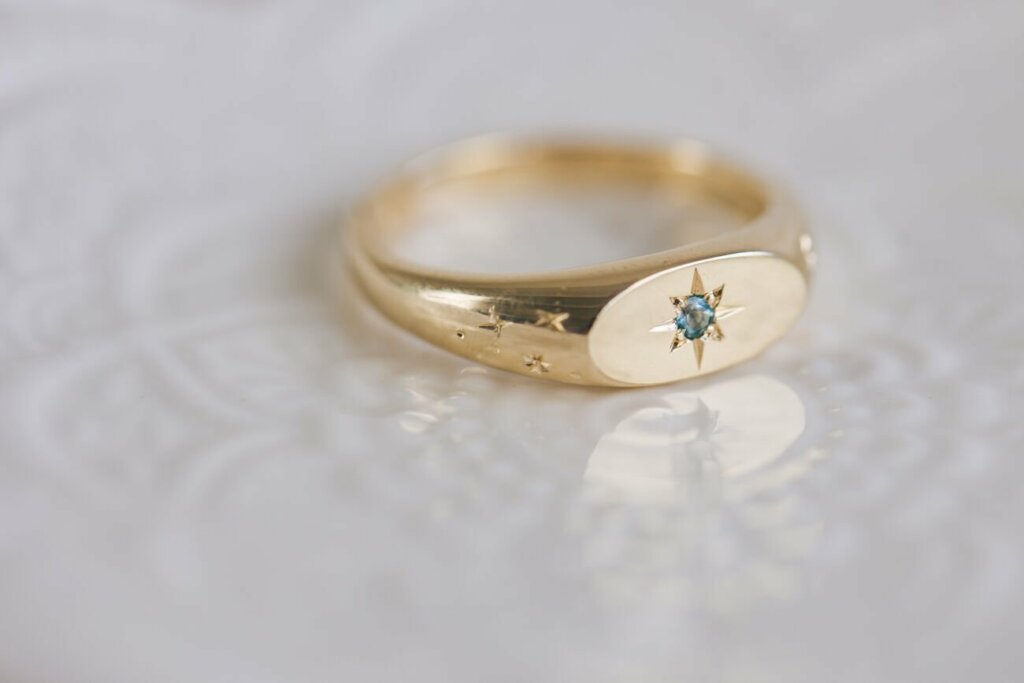
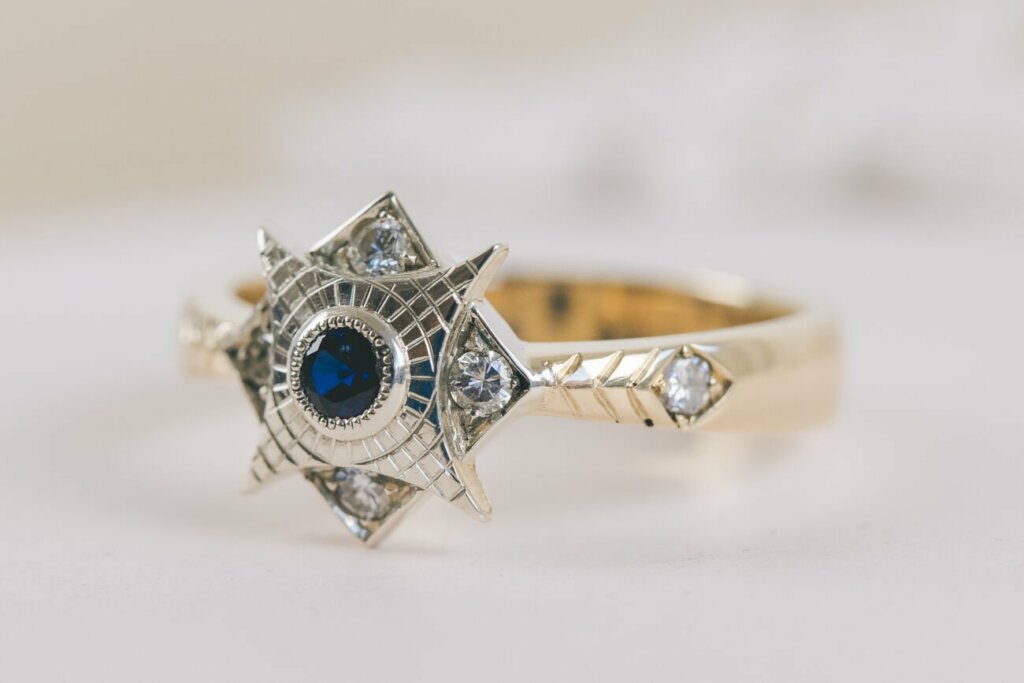
Millgraining
Millgraining is a delicate detail that usually runs along the edge of jewellery. It is a subtle beading of the edge that creates a vintage feel.


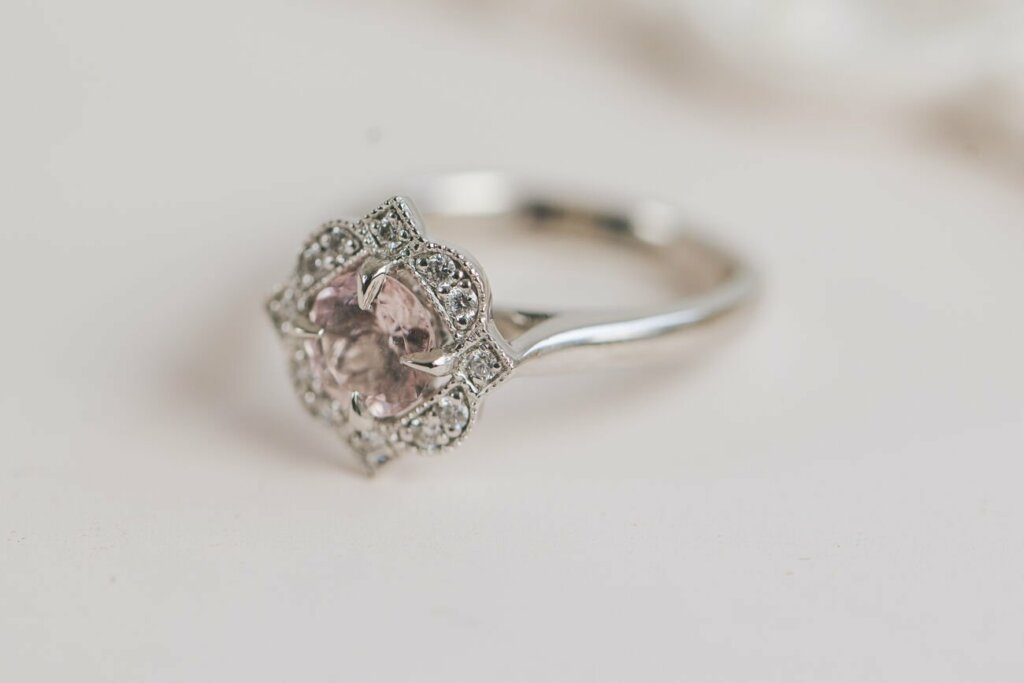
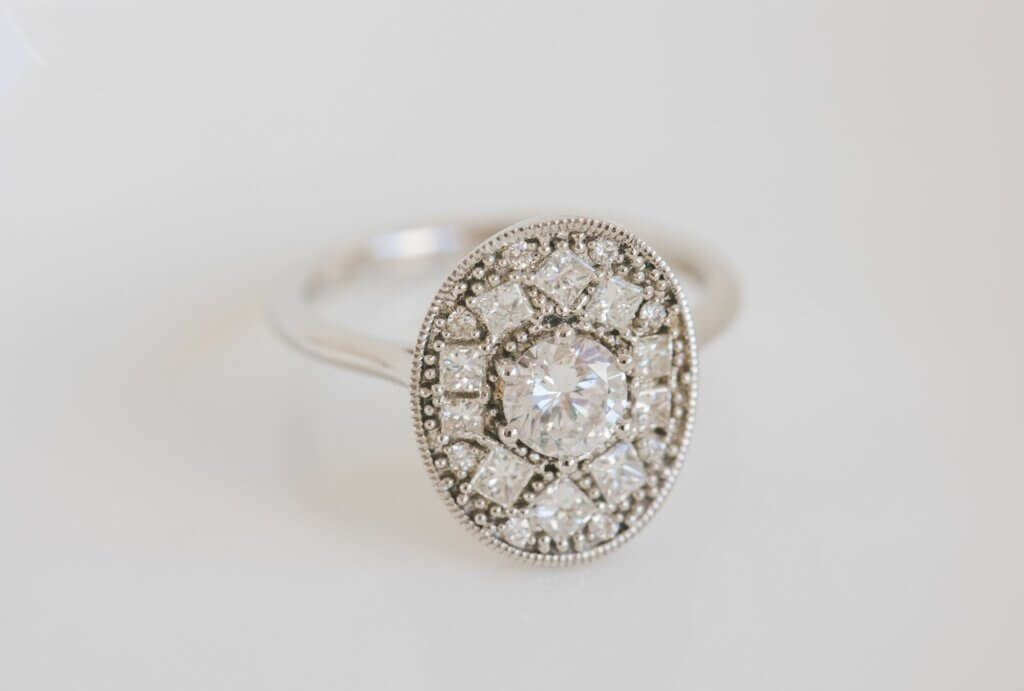
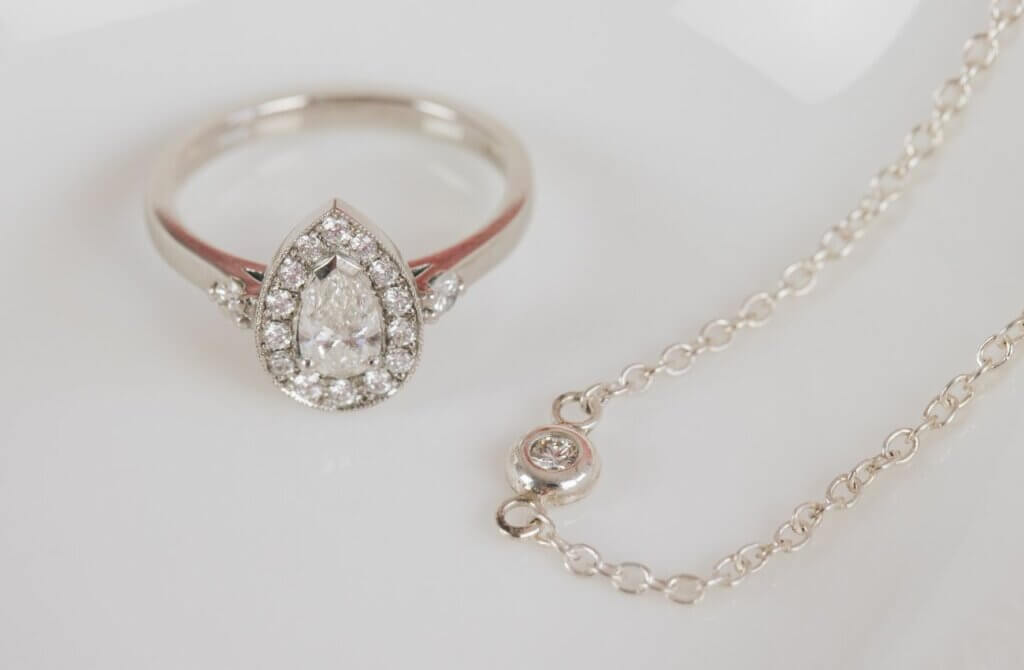

Setting Styles
How to set the stones in an engagement ring is a key decision that can really change up how a design looks. They all have their pros and cons and a good designer can let you know what would work best for your lifestyle and the type of stone you are setting.
Claw
The classic setting style, claw settings have a delicate look and feel. They also flood the stone with as much light as possible. The claws can be rounded (like the ruby ring below) or talon shaped. Rounded claws are classic, but talon shaped claws tend to be more discreet as they vanish into the facets of the stones, particularly when the colour of the setting is close to the colour of the stone (e.g. a diamond set in platinum).
Claws do need to be worn with care and will need re-tipping once the tops of the claws begin to wear. If you have a hands on lifestyle, you will need to take off a claw set ring quite frequently.

Bezel
A bezel setting is when the stone is encased in a frame of metal, like a bumper around the edge. These are ideal for people with hands on lifestyles and for setting softer gemstones more prone to chipping. A bezel setting is a contemporary style, but does feel heavier than a claw setting.
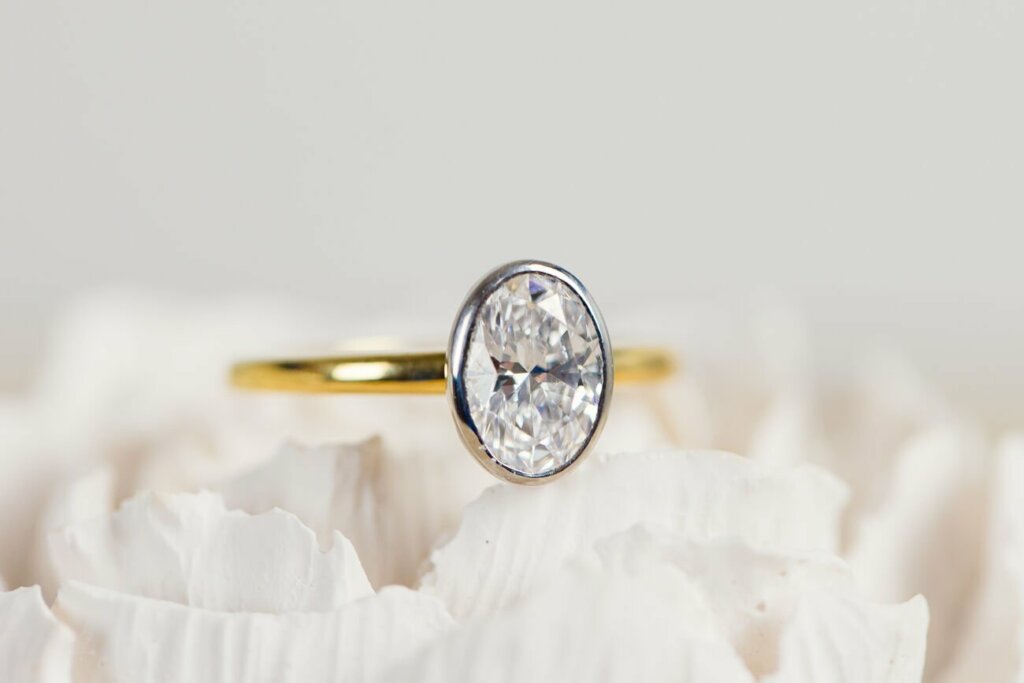
End/side only
End only settings are a good half way house between claw and bezel settings. They work best on straight edged stones, but do also work well on oval and pear shapes. The open sides let light into coloured gemstones like Connie’s emerald cut sapphire below.

Design Style
Art Deco
Stepped cut stones ooze Deco sophistication. Step cuts like Emerald cut, Asscher and Baguette have far fewer facets to catch the light than modern cuts such as Brilliant, Radiant or Princess, so they still sparkle, but with less intensity and scintillation. Art Deco inspired jewellery is very balanced and symmetrical, with stepped shapes and sizes of stones.
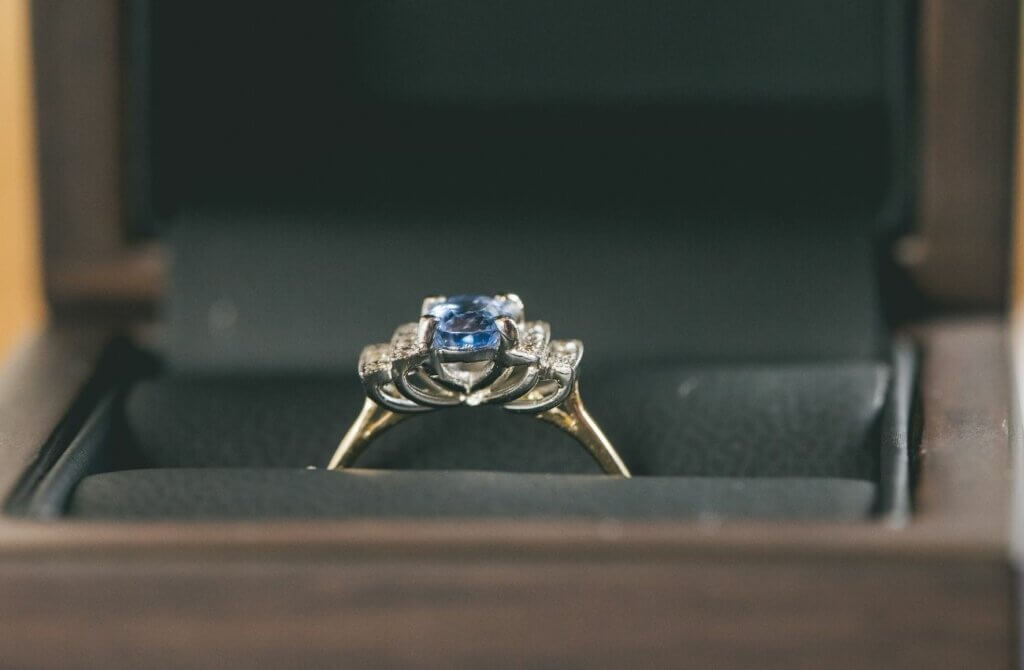
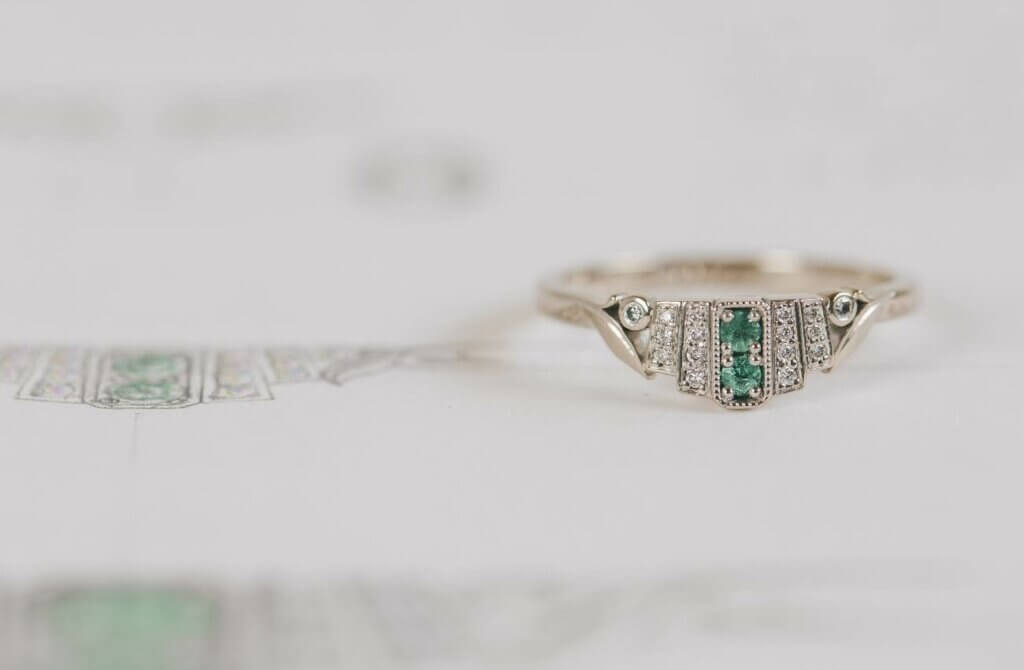
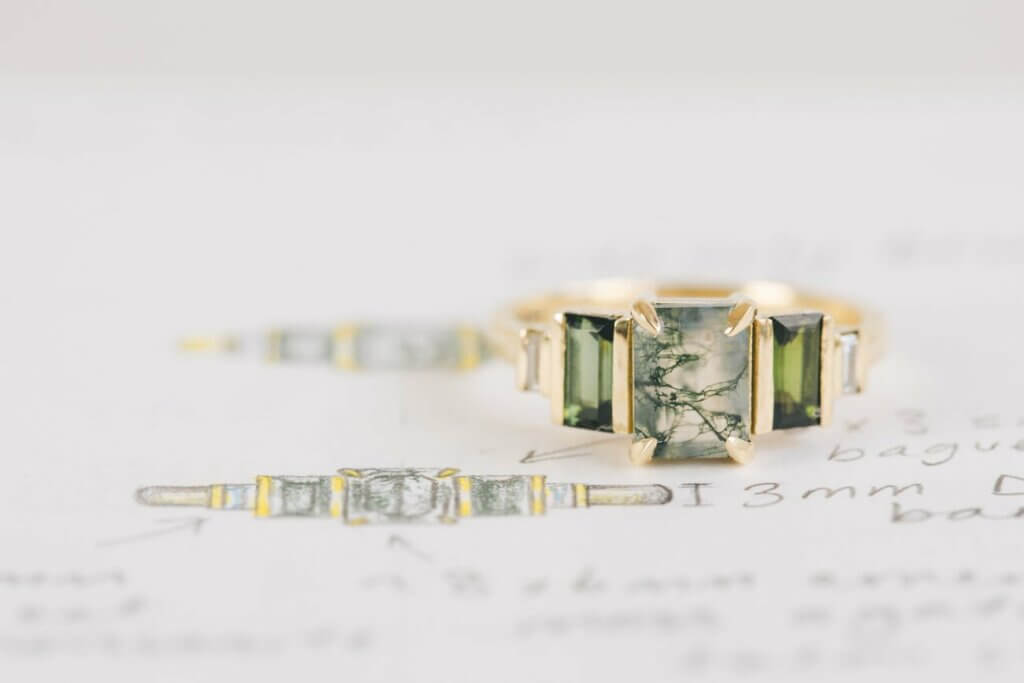


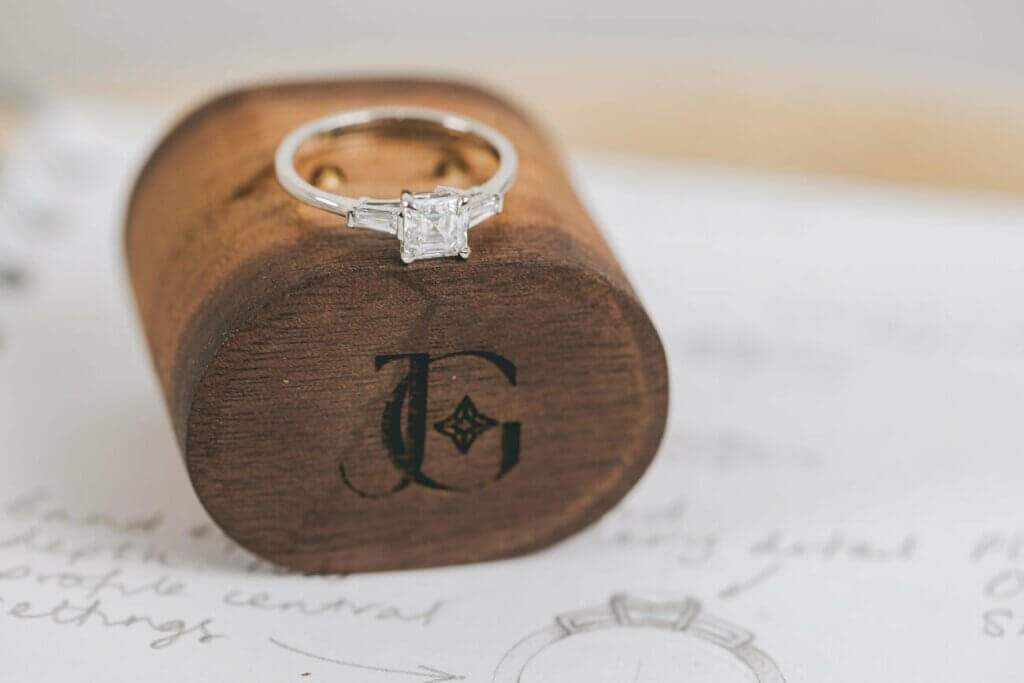
Vintage
Delicate details, symmetrical design, and millgrained texture all lend a vintage vibe that so many are drawn to.

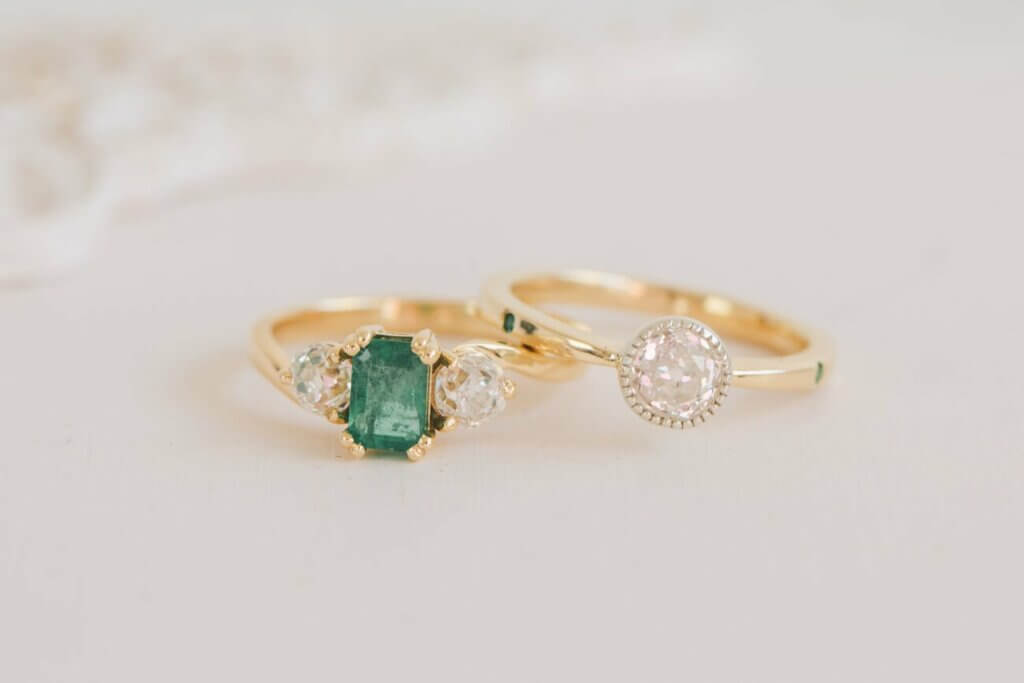
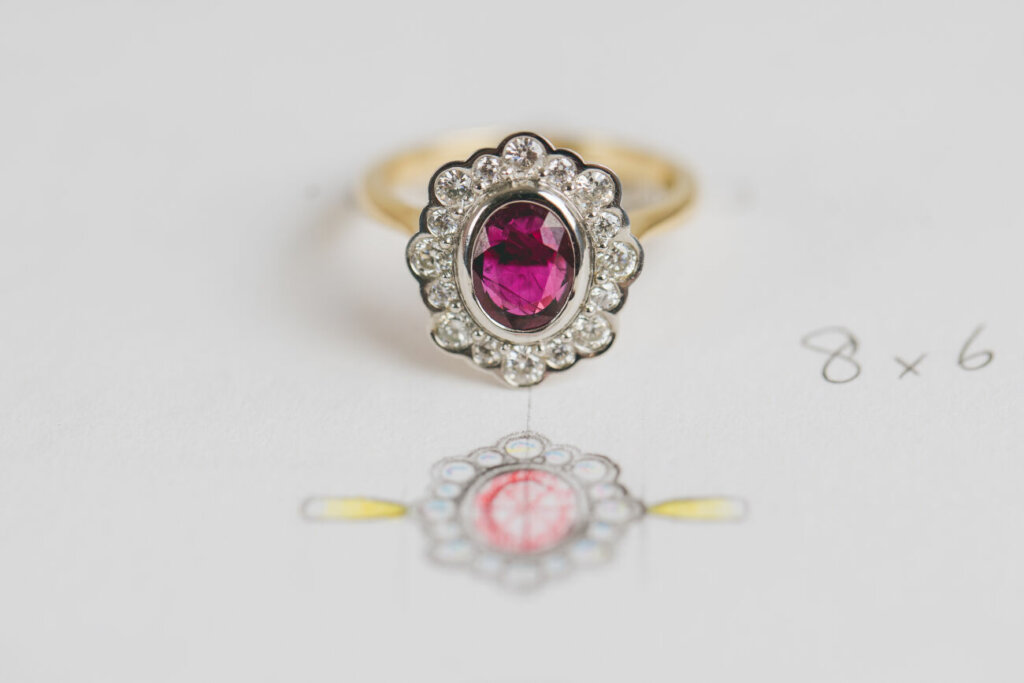
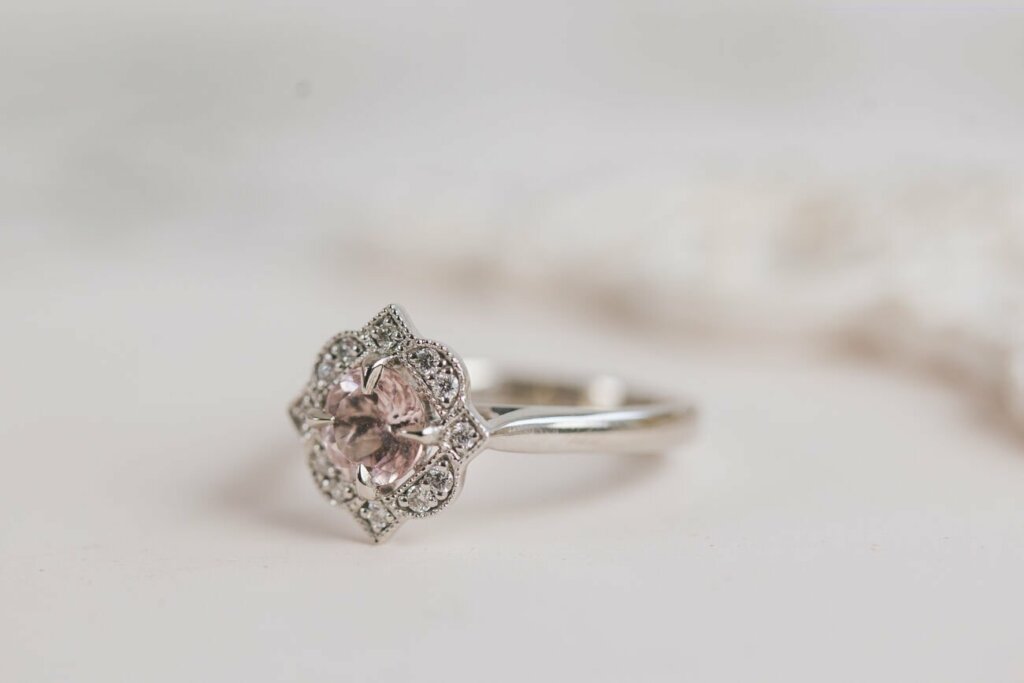
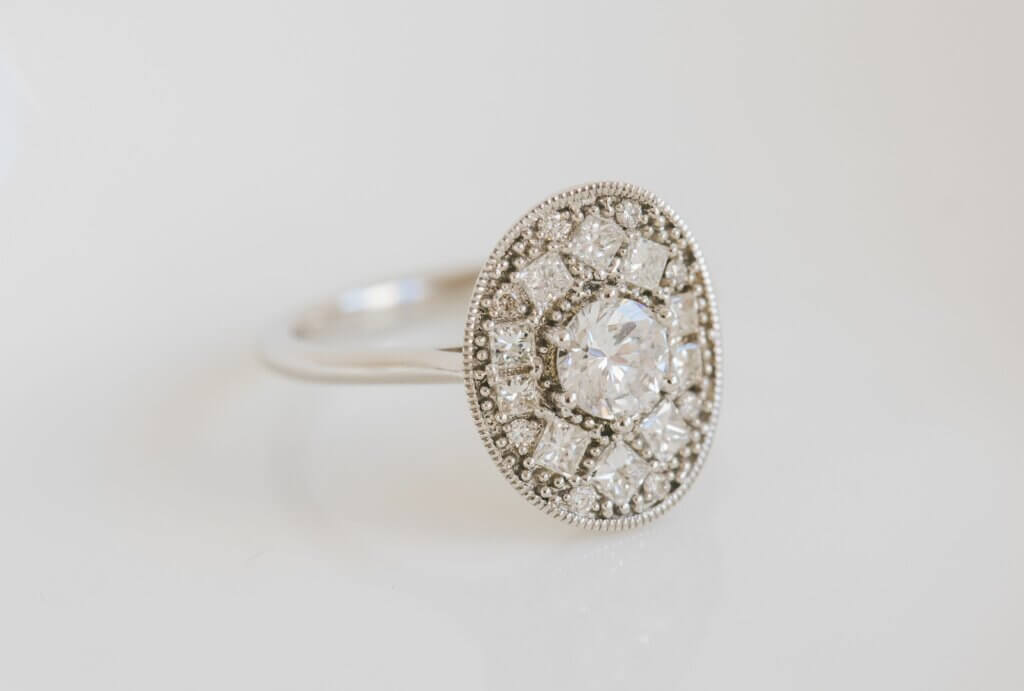

Contemporary
Sleek and simple designs have a contemporary look. The design is kept fuss free to keep the stones centre stage.

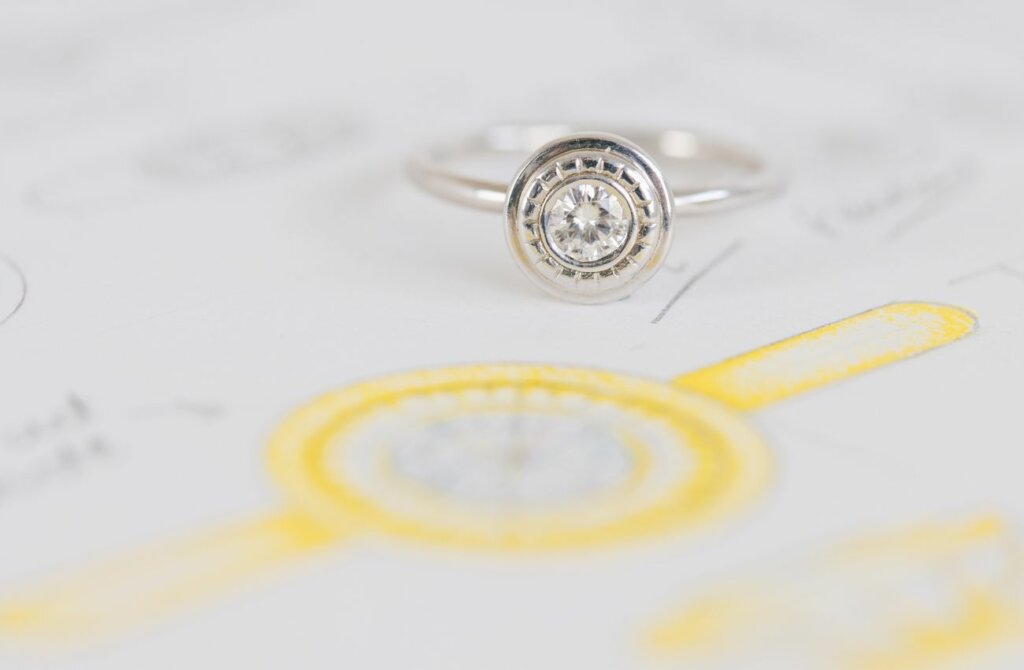
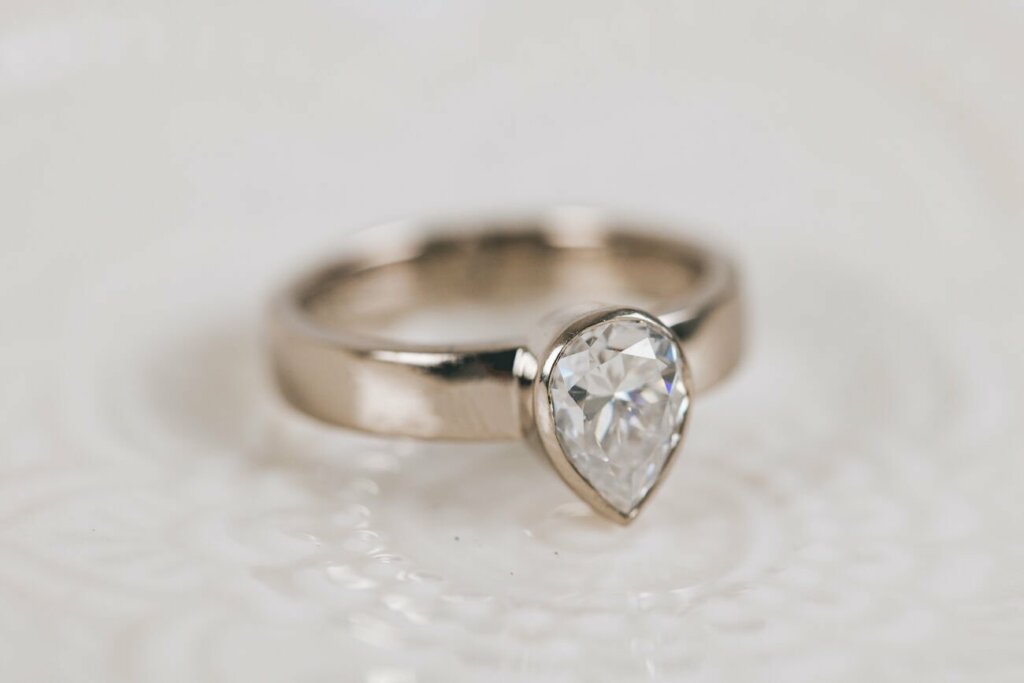


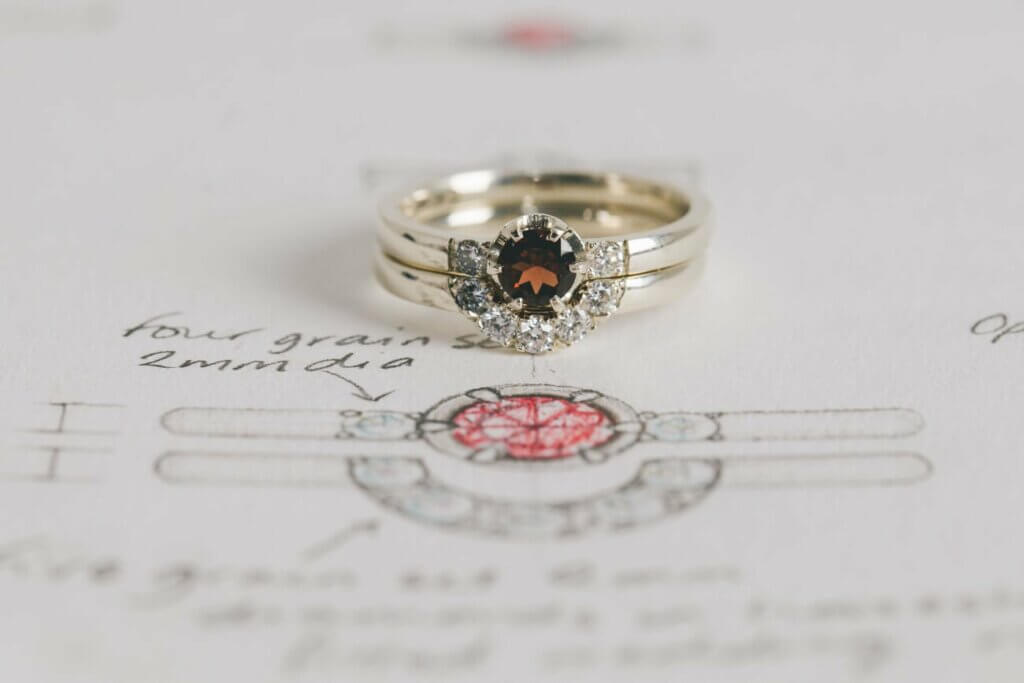
Classic and Timeless
Solitaire, cluster and halo styles are classic, timeless styles that will never go out of fashion. You can’t go wrong with a design like this.





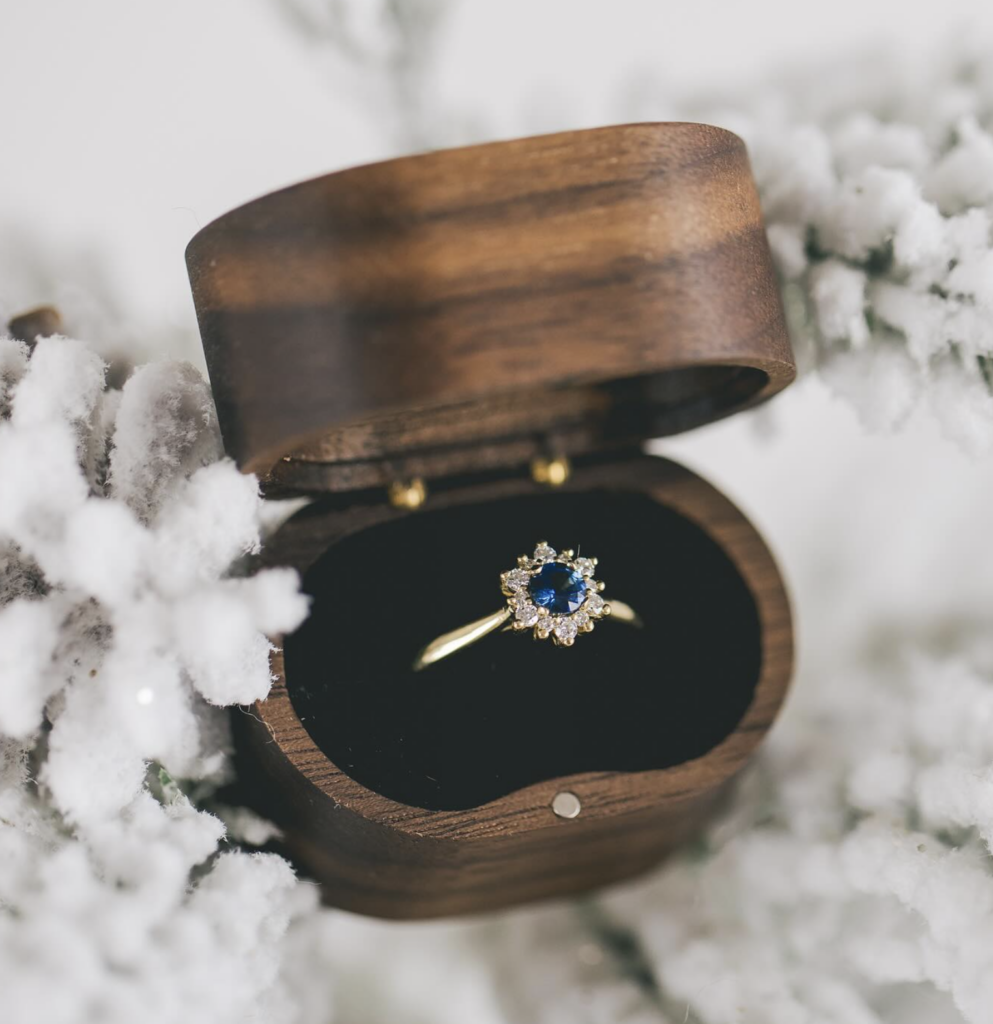
Organic
Designs with an organic flow to their shape and often asymmetric design make a lovely choice for an engagement ring for free spirit.
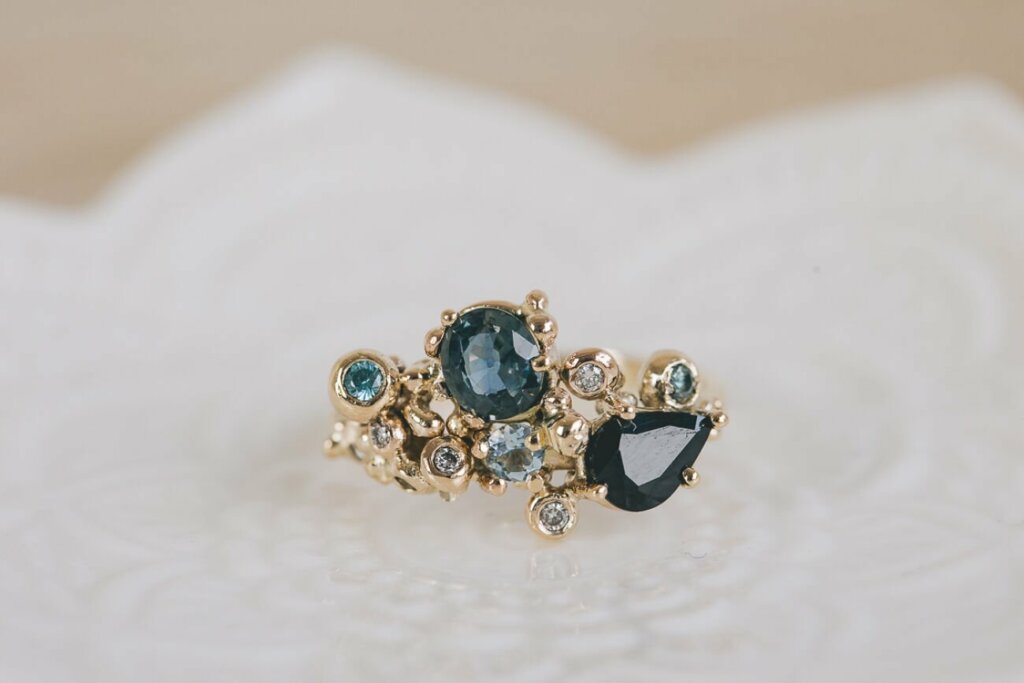

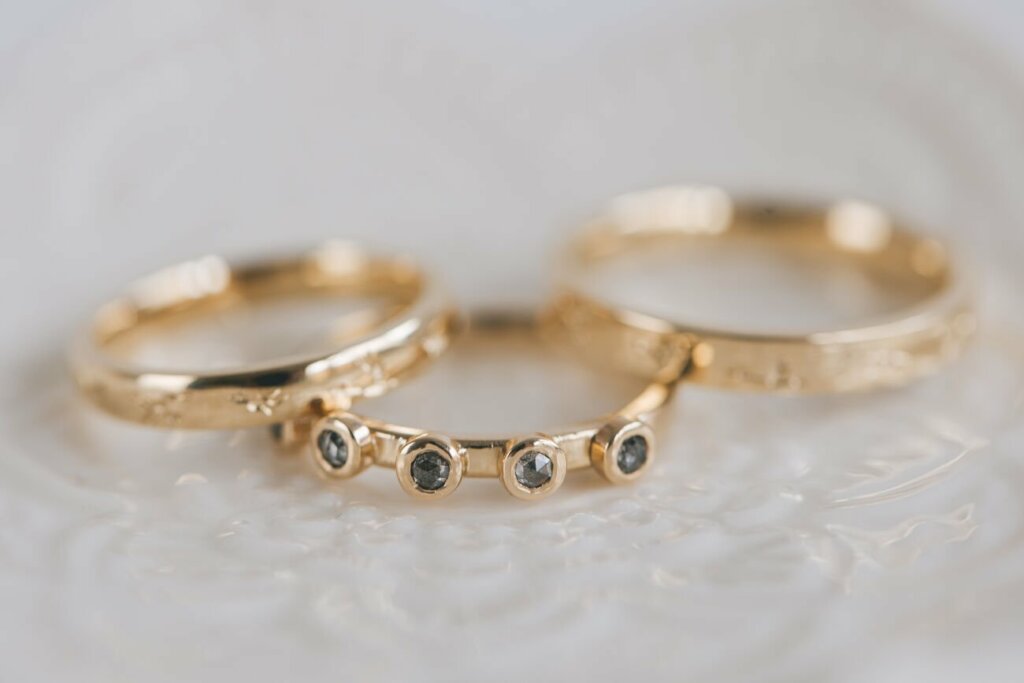


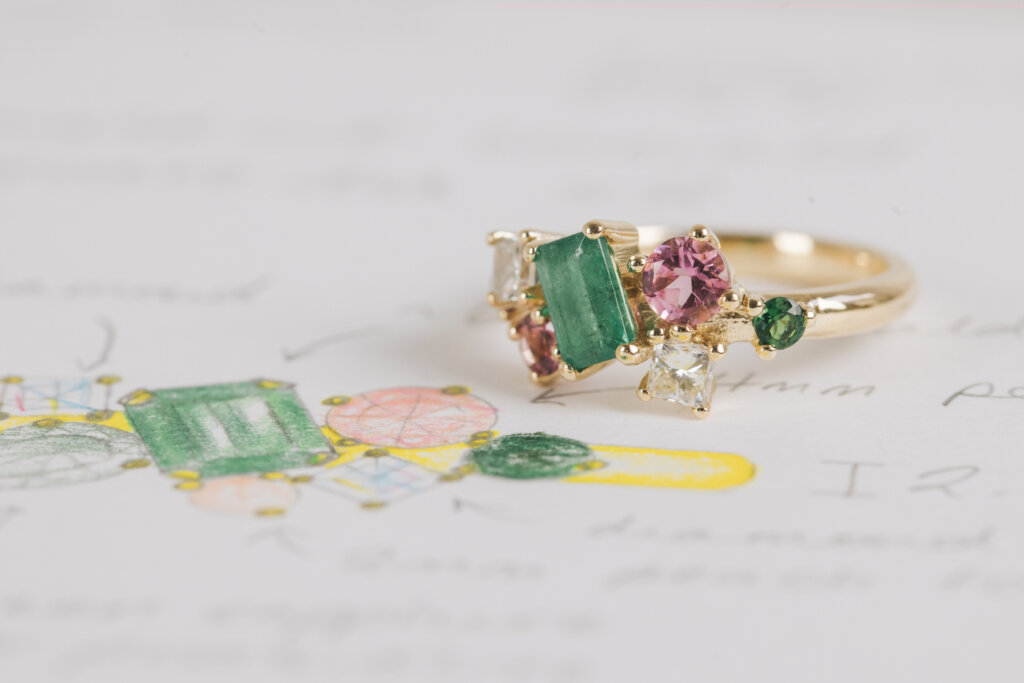
Extra Details
Hidden Halo
Hidden halos are a stone set gallery on the side view of a setting. Sparkle from every angle!
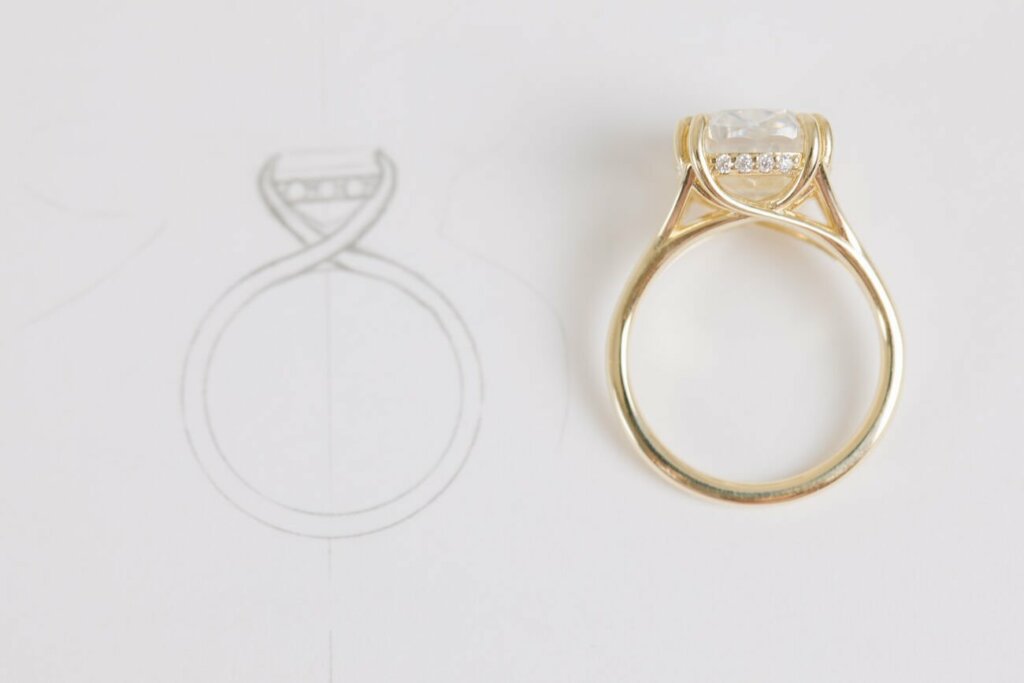
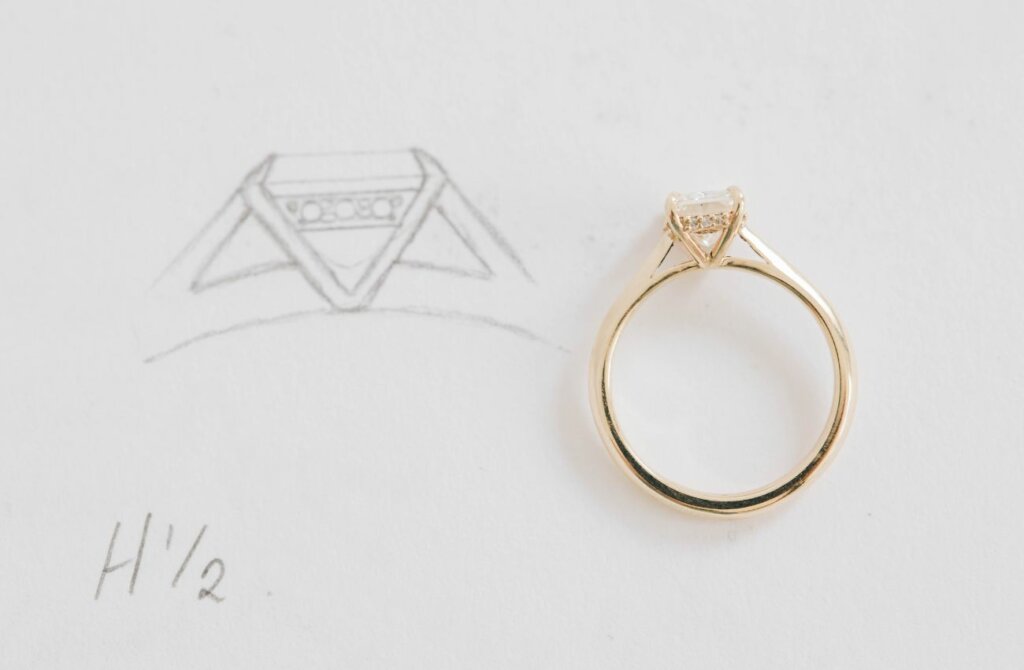
Shaped Gallery
The gallery in a setting is a space where you can be really creative. Here is some inspiration –
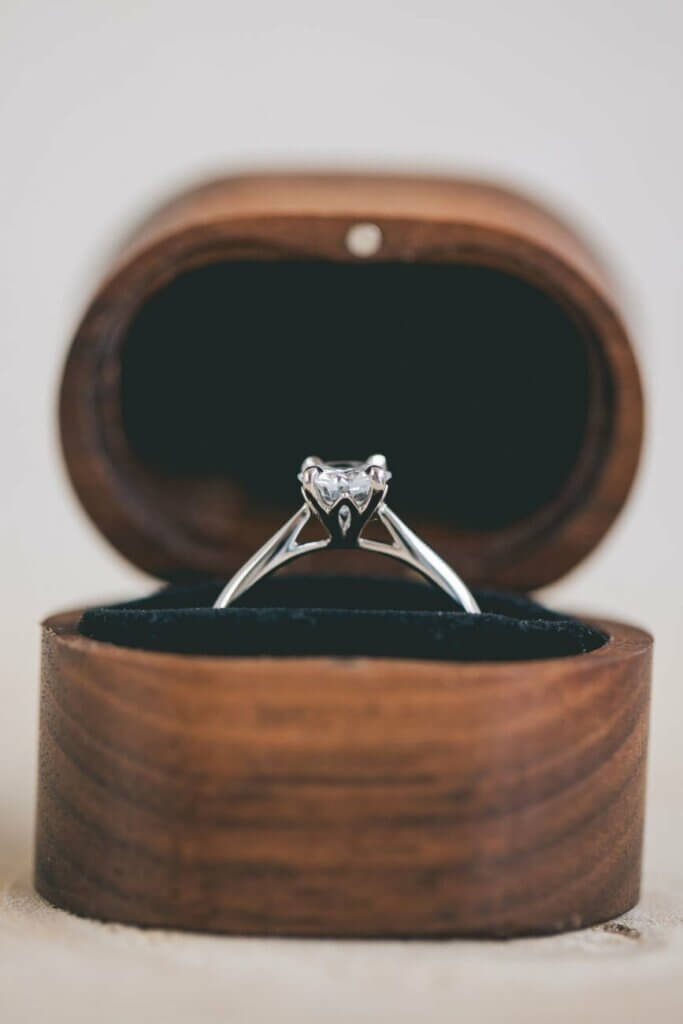
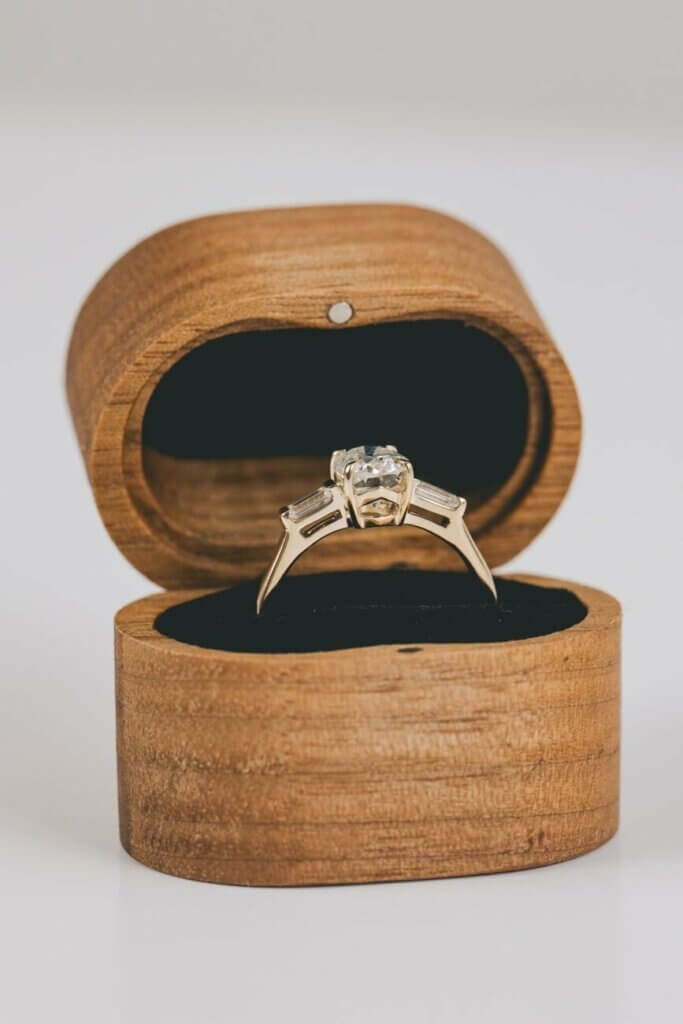
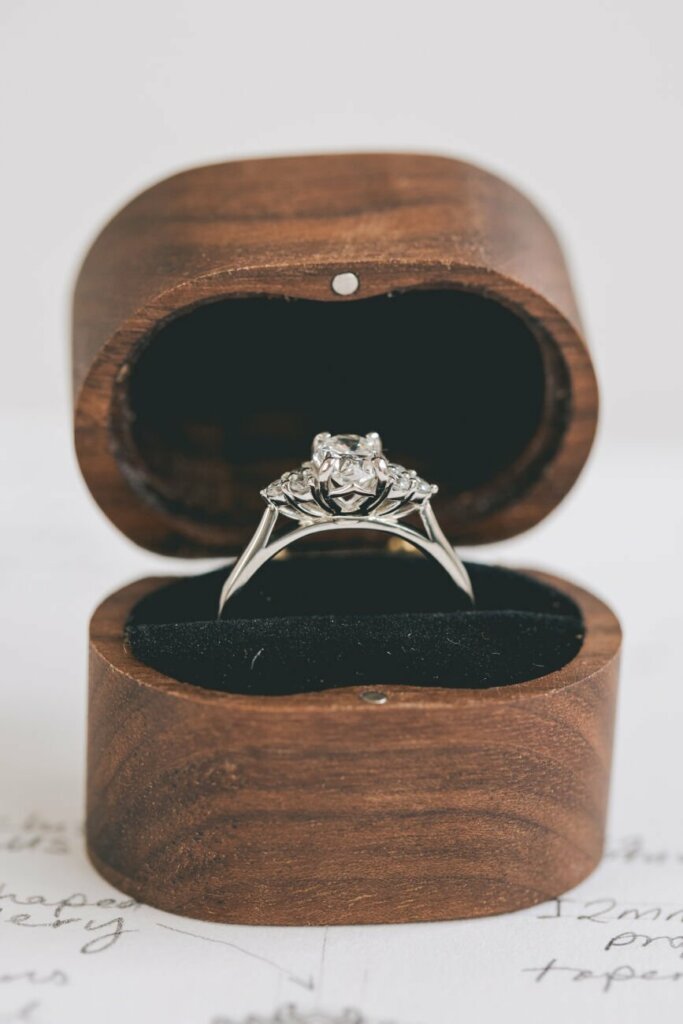
Birthstones inside the band
A lovely touch can be to include birthstones inside the band. This is particularly special when children’s birthstones can be added to include them in the engagement too.
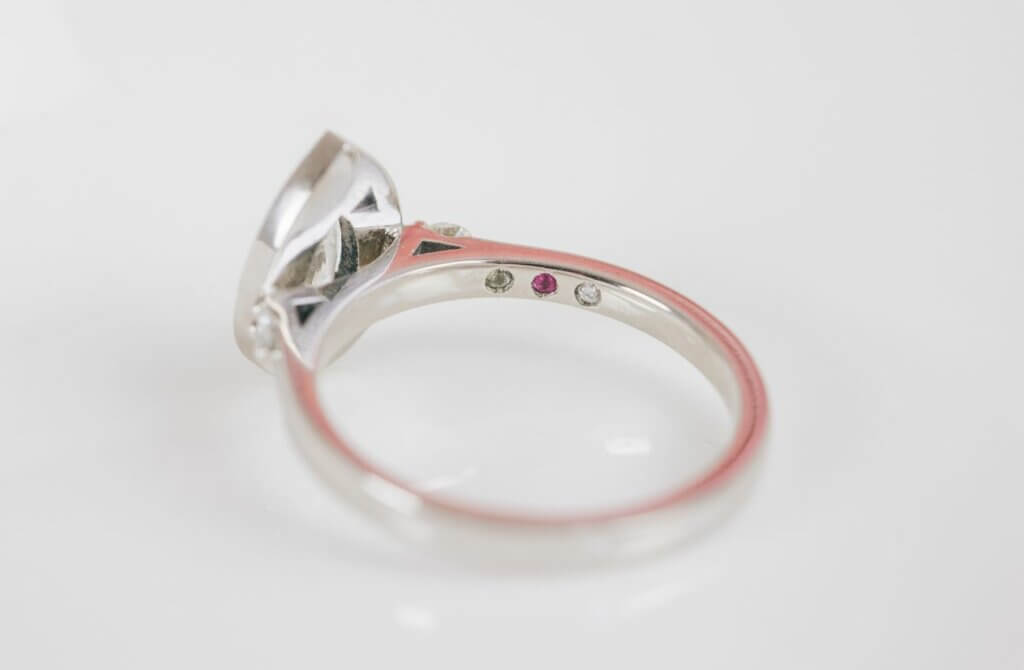
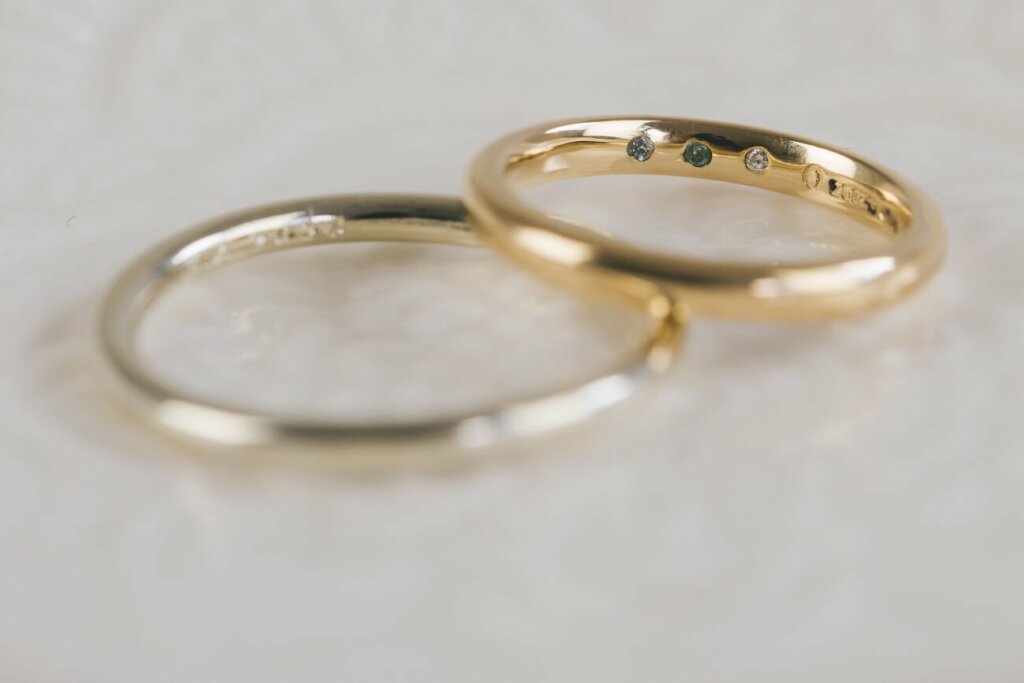
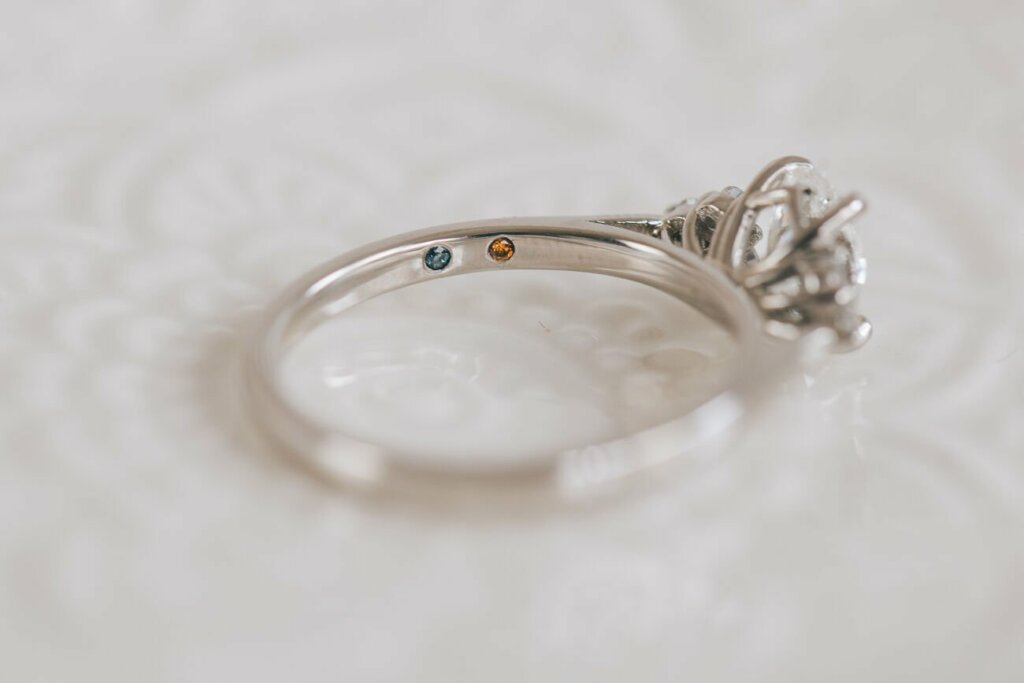
Engraving
Texture and sparkle can be achieved with engraving instead of stones. Hand engraving facets up the metal in a beautiful way.
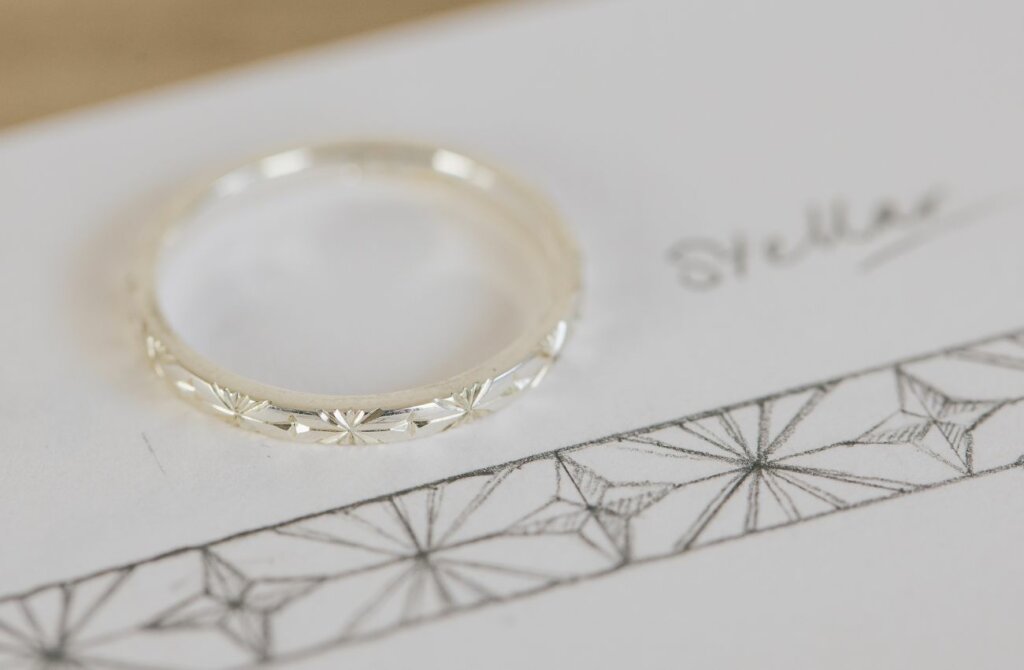
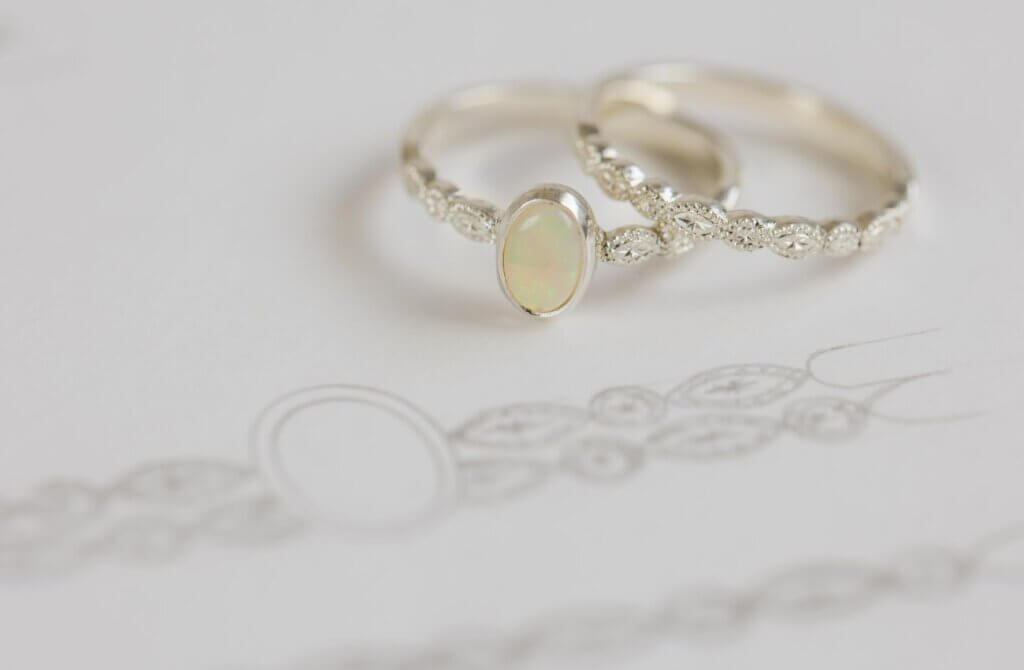

Inspiration a-plenty
Hopefully this glossary has helped you identify the styles and features you like in an engagement ring to help you find or design your dream ring.
Let me know if you think I have missed anything from this list, and leave a comment to let me know your favourite features and styles. Browse my galleries to get further inspiration, and contact me if you’d like to discuss a bespoke engagement ring design.

